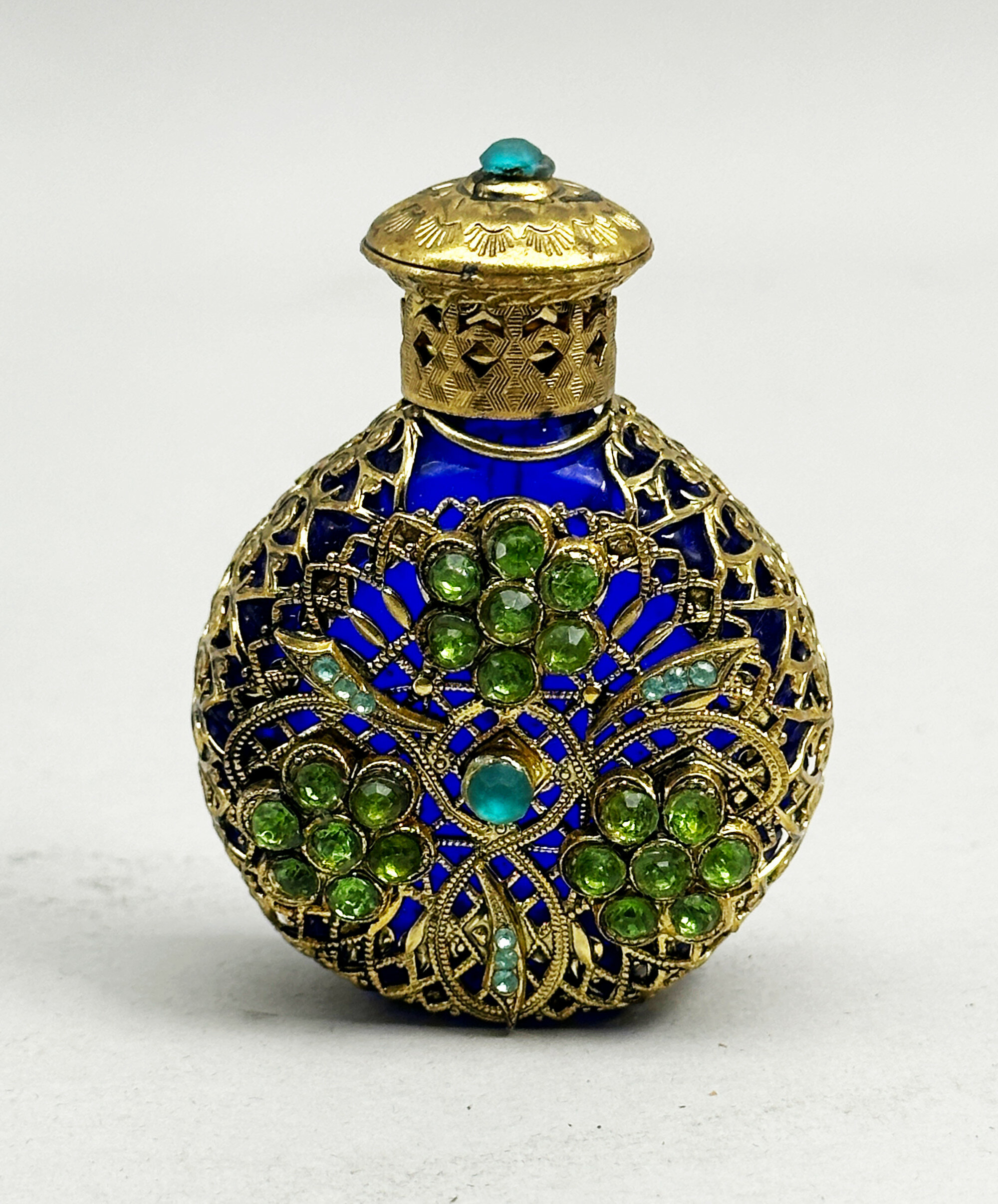
Tibetan turquoise and silver necklace 1930s
Price: £45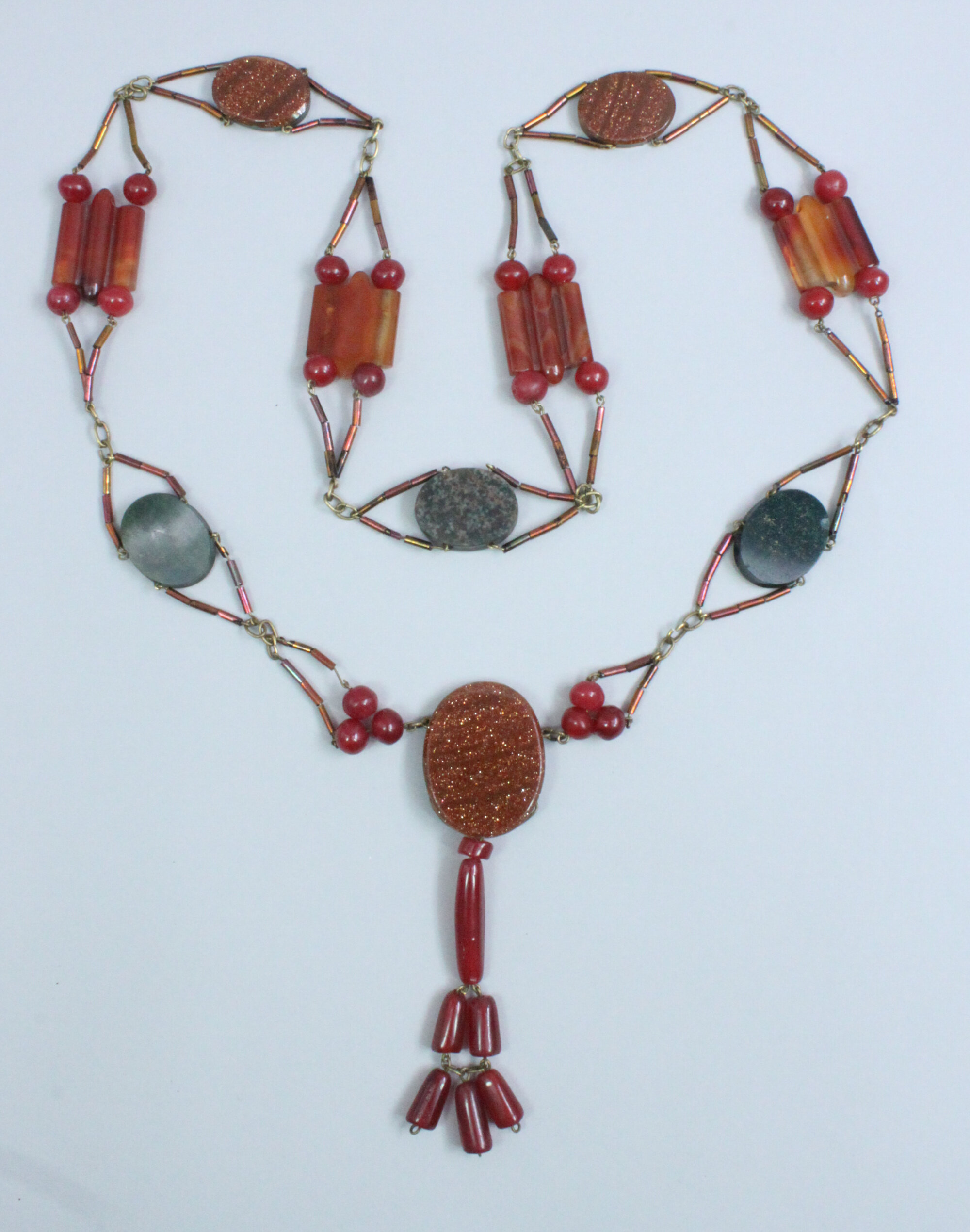
Long Art Deco carnelian, bloodstone and goldstone necklace 1930s
Price: £95Goldstone is a type of glittering glass made in a low-oxygen reducing atmosphere. The finished product can take a smooth polish and be carved into beads, figurines, or other artifacts suitable for semiprecious stone, and in fact goldstone is often mistaken for or misrepresented as a natural material. It was first made in the 17th century in Italy. (Credit: Wikipedia)
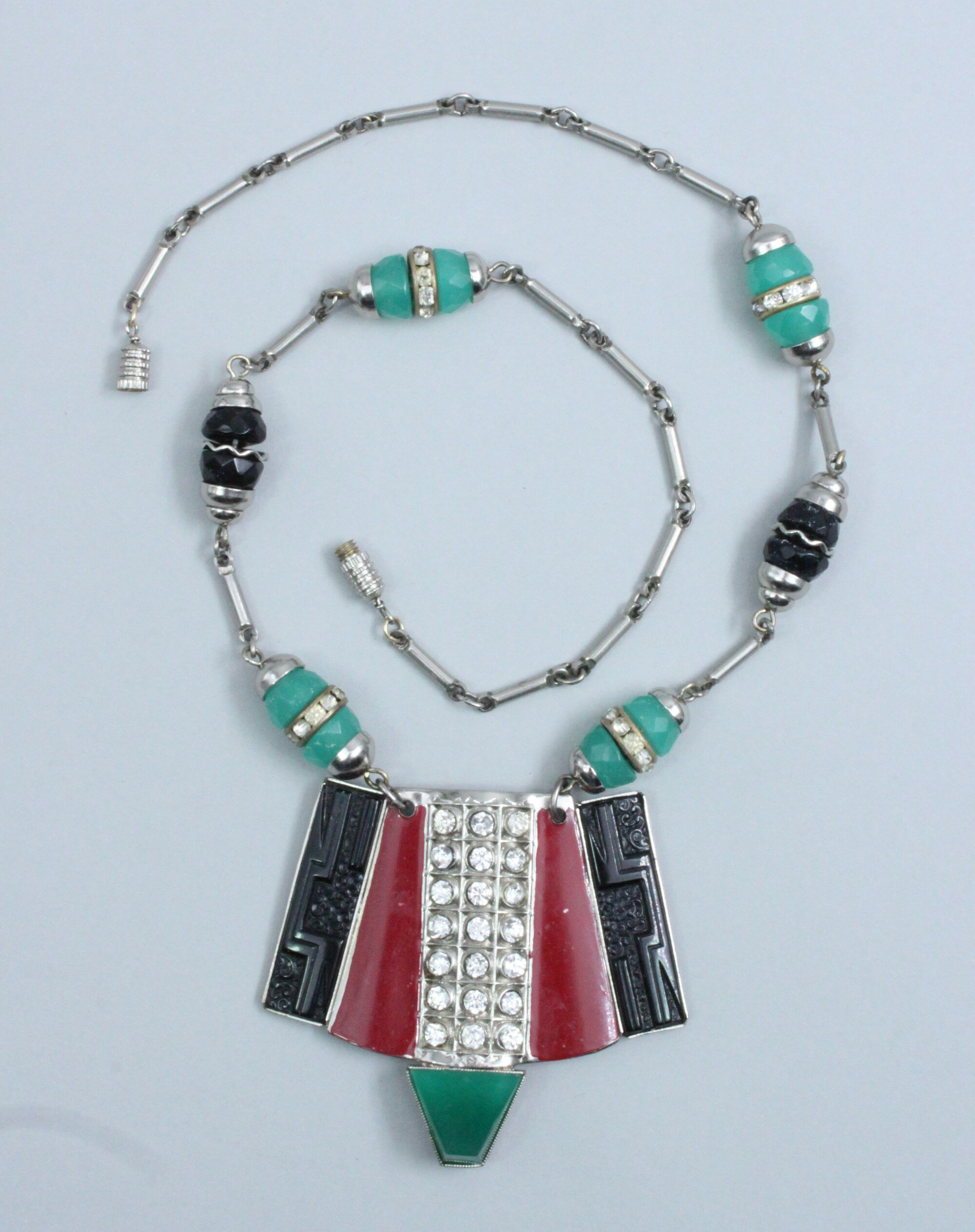
French Art Deco Machine Age galalith paste necklace 1920s
Price: £75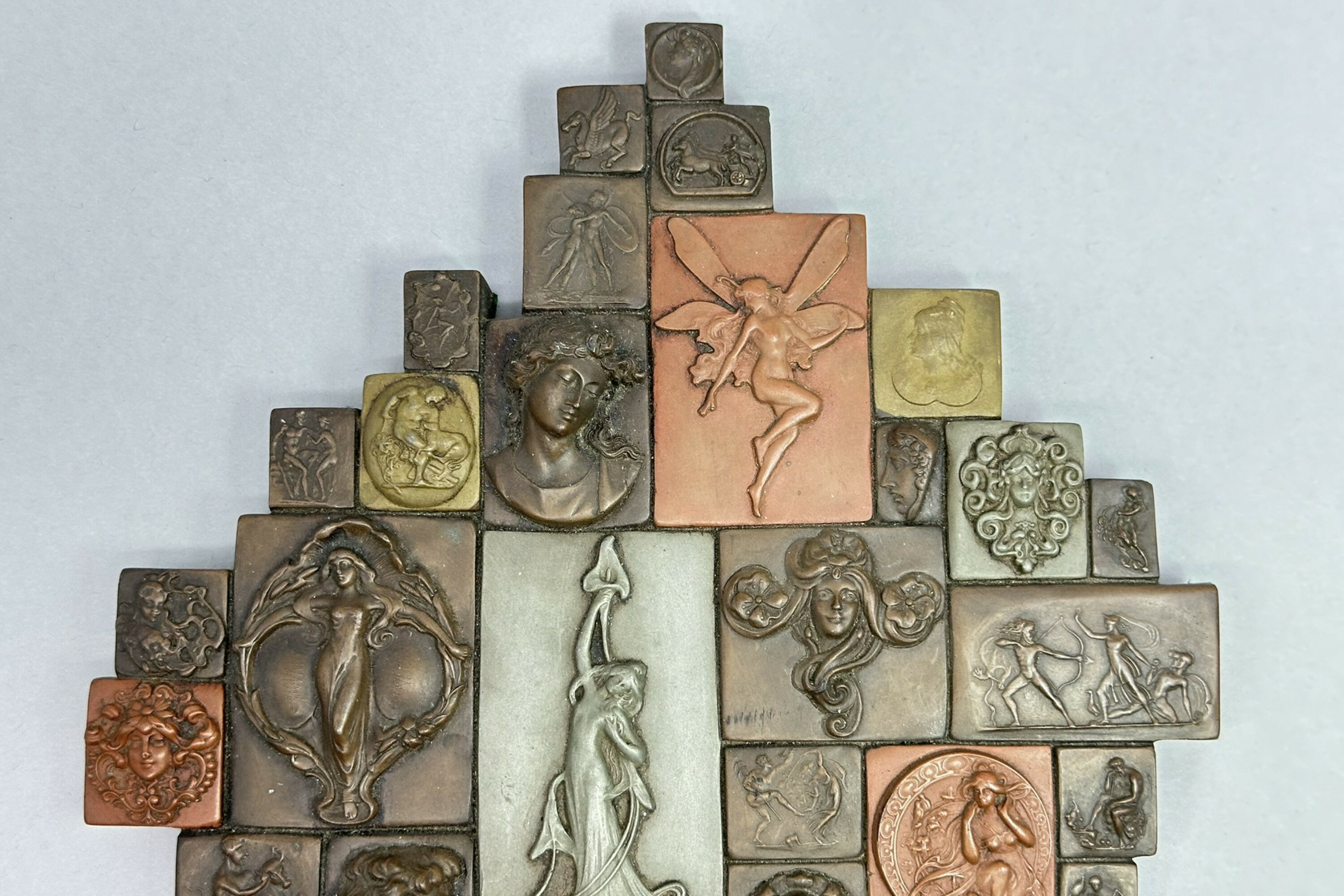
Wall plaque by Giovanni Schoeman depicting classical style figures, 1970s
Price: £75While Art Nouveau in style, Schoeman only perfected these techniques in the late 1960s, producing pieces in the style from a studio in Kentish Town which sold well in the London outdoor art markets. In the late 1970s, Schoeman moved to America with the intention of producing large scale art but the venture foundered and he died in 1981. This plaque, of which other examples are known, must have been one of his most popular designs in those London years and is a striking example of the techniques he developed and mastered.
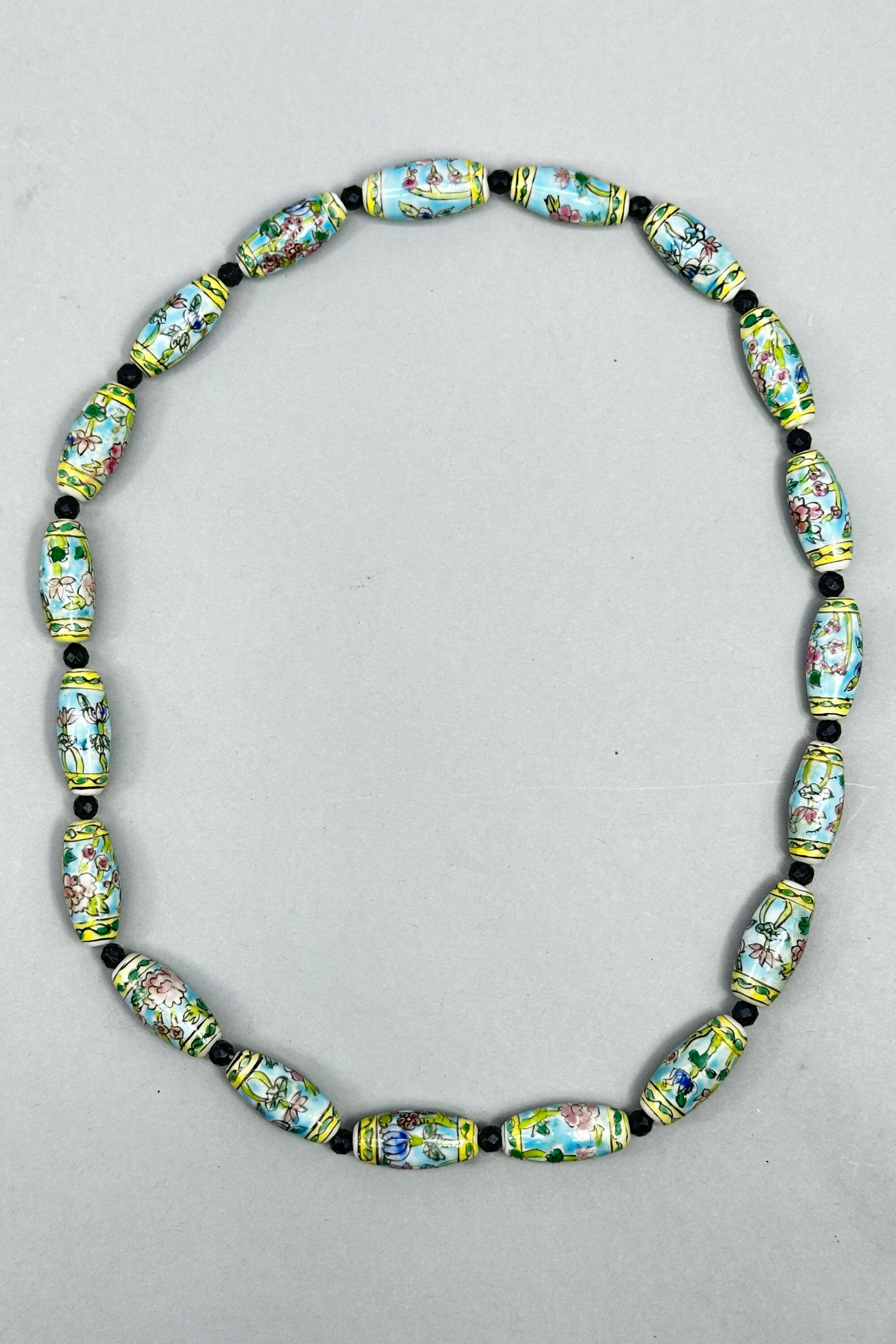
Strand of Chinese ceramic beads c1950
Price: £25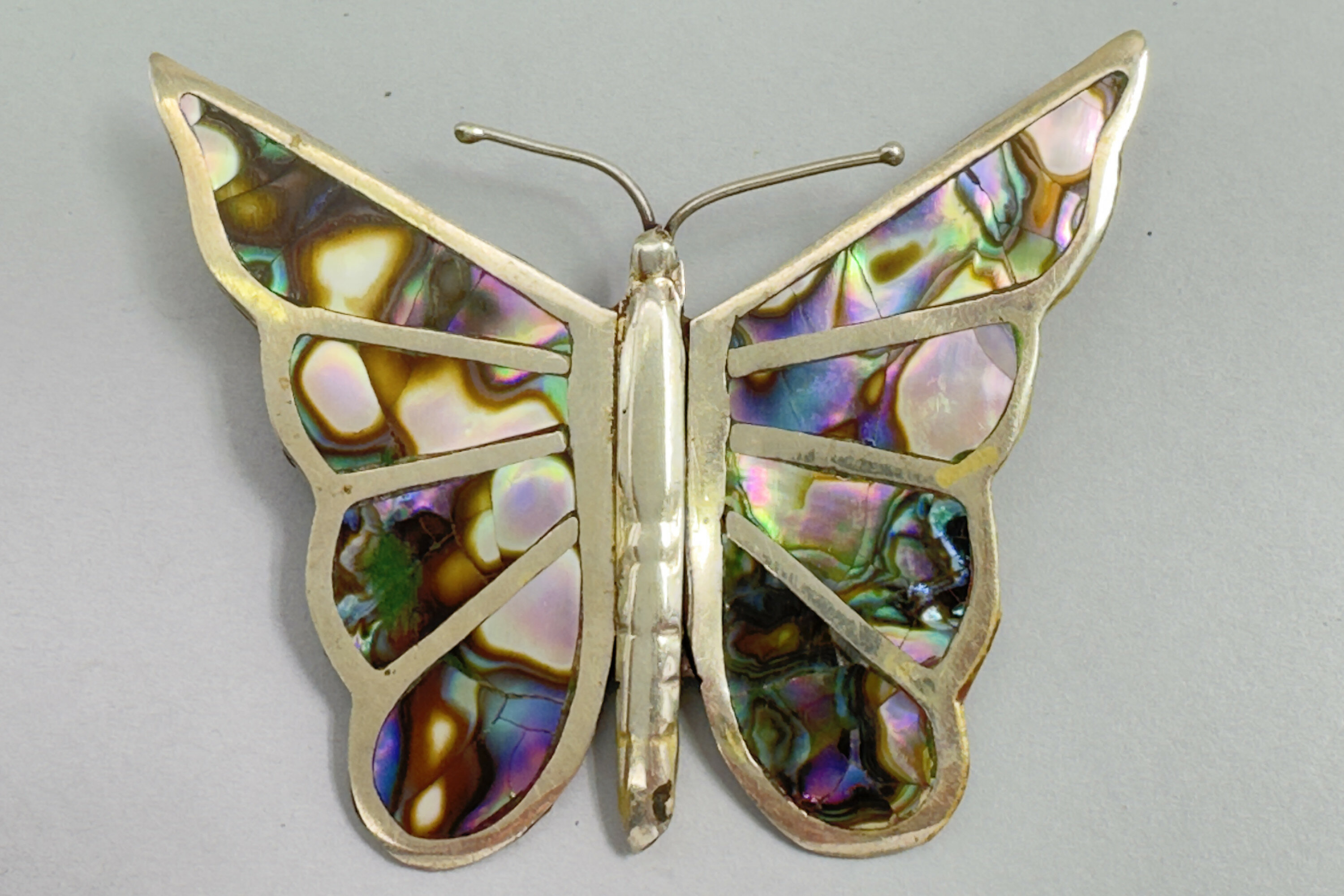
Taxco butterfly brooch with abalone, makers mark EL 1960s
Price: £55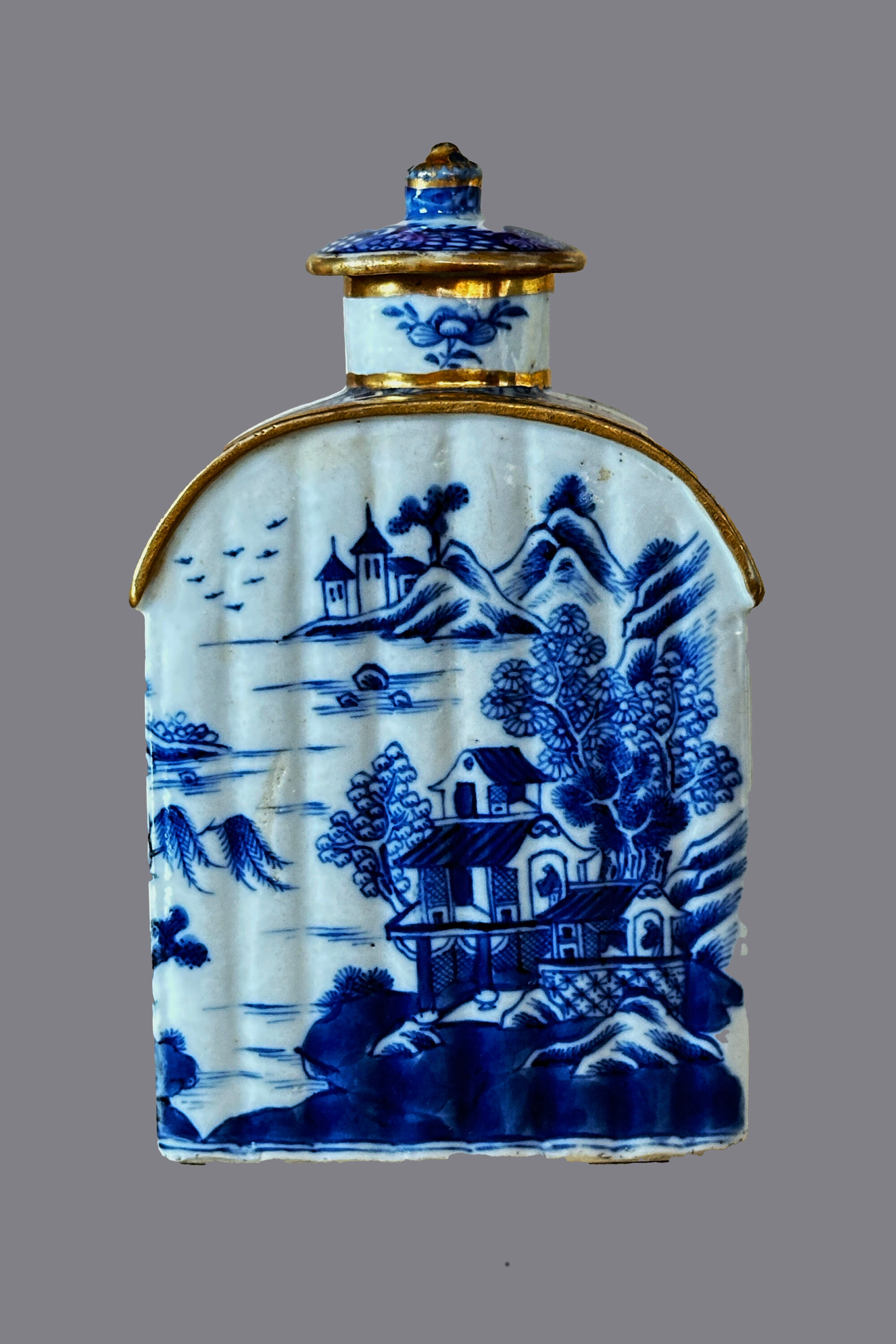
Chinese Export Blue and White Tea Caddy and Cover, Qianlong period circa 1760
Estimate: £300 – 400
A Pair of Japanese Lacquered Porcelain Ginger Jars and Covers, late C19th
Price: £240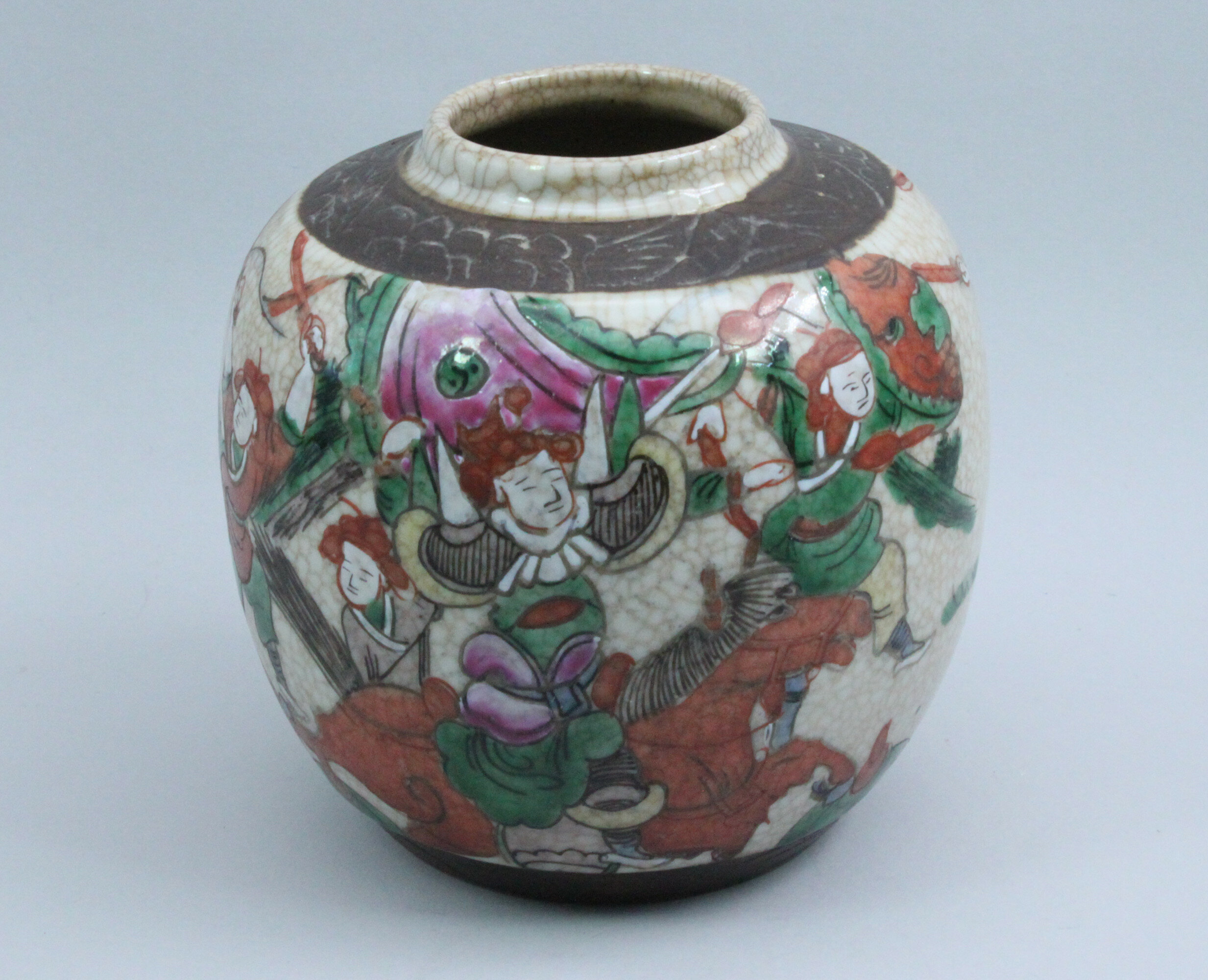
A Chinese Crackleware Famille Verte Ginger Jar decorated with Warriors circa 1880
Price: £45'Crackleware' glazed pieces, usually with 'bronzed bands, were a staple output of the Chinese potteries from the mid nineteenth century onwards and were produced in a wide variety of mainly vase shape forms, both in polychrome and blue and white and intended as decorative pieces for the Victorian rooms of the West. As with other ceramic types, the quality deteriorated and this piece is typical of late nineteenth century productions of a more modest level of craftsmanship but still retaining a naif charm. As with many ginger jars, this one lacks its original domed cover which would have been decorated to match.

A Blue Glass Sunburst Bowl, probably by Pavel Panek, Czech 1980s
Price: £150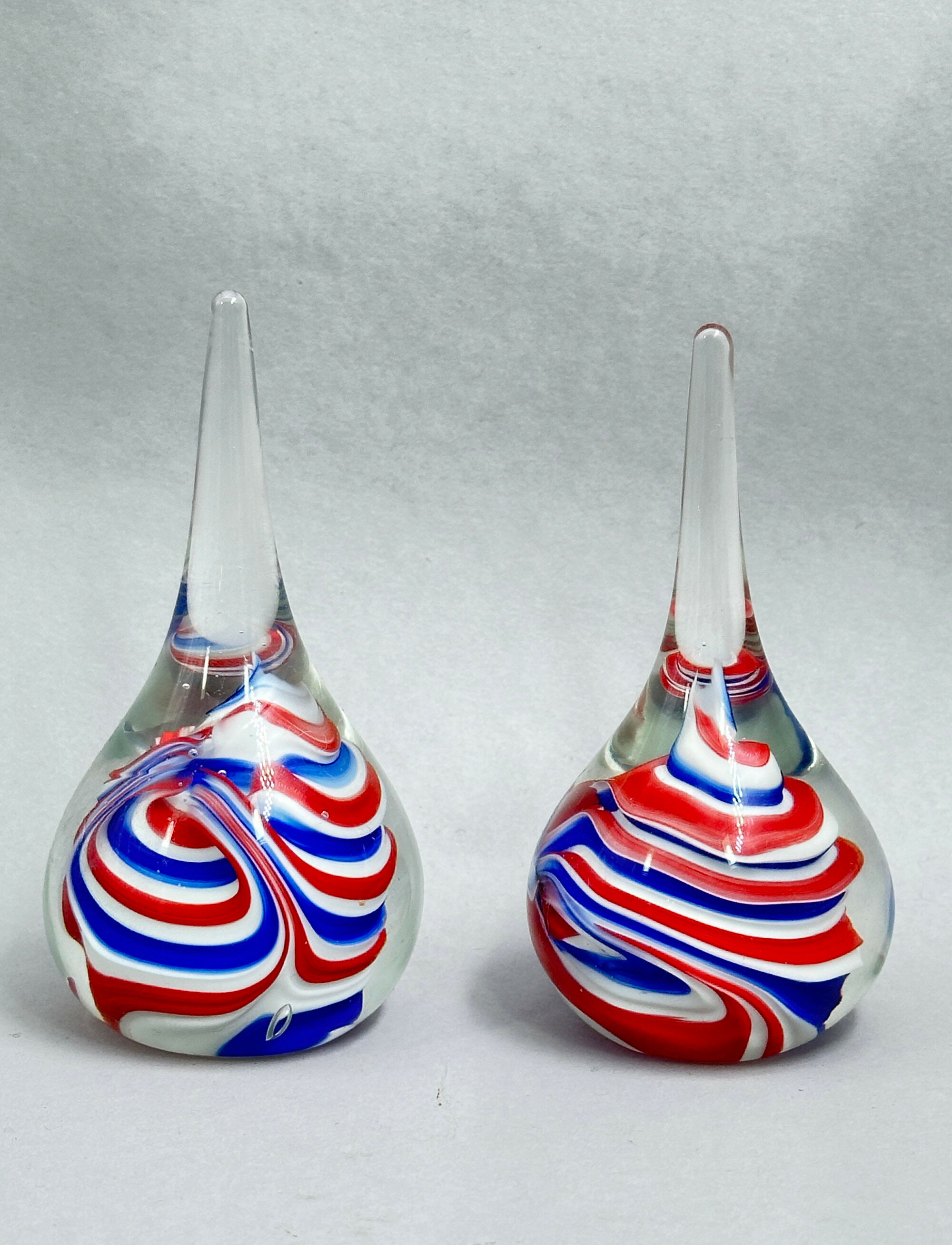
A Pair of Glass Vases or Paperweights, probably Selkirk Glass, Scotland, 1980s/1990s
Price: £25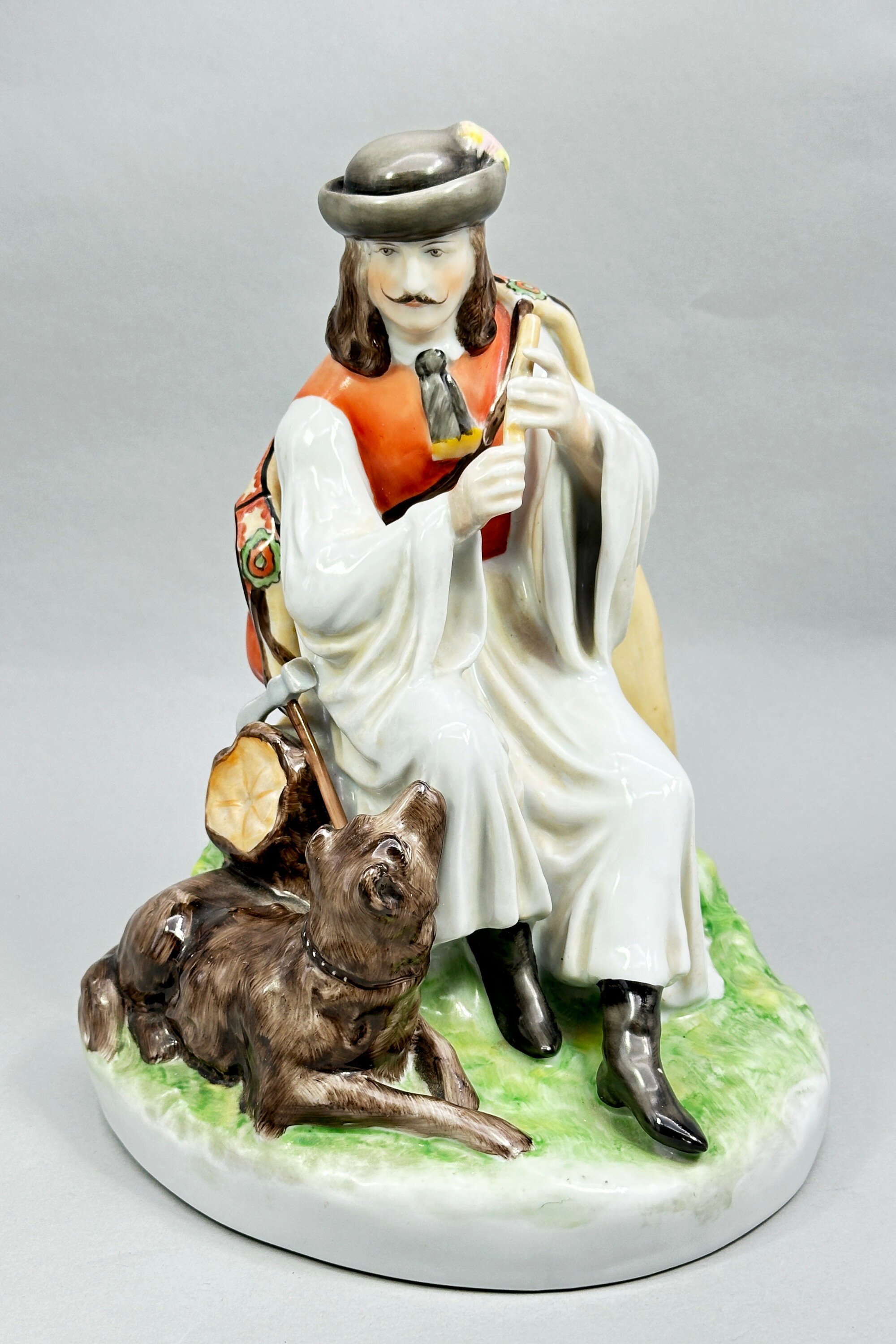
Figure of a Seated Huntsman, Zsolnay Pecs, 1970s
Price: £55The mark is for the well known ceramics manufacturer Zsolnay, based in Pecs, Hungary. Founded by Miklos Zsolnay in 1853, the firm gained a worldwide reputation in the late nineteenth century exhibiting at international fairs and exhibitions. Production declined after the first world war and the factory was bombed during the second. Revived under communism in 1948, the firm started to produce utilitarian pieces under the name ‘Pécs Porcelain Factory’ but gradually their traditional wares were revived and the Zsolnay name was restored in 1982.
This figure is one of the products of Zsolnay’s late renaissance but dating to the 1970s, as indicated by the form of the mark, it still carries only the Pecs brand name. But the quality typical of Zsolnay is emphatically there with fine quality porcelain and careful modelling and decoration all combining to produce a most decorative and attractive composition.
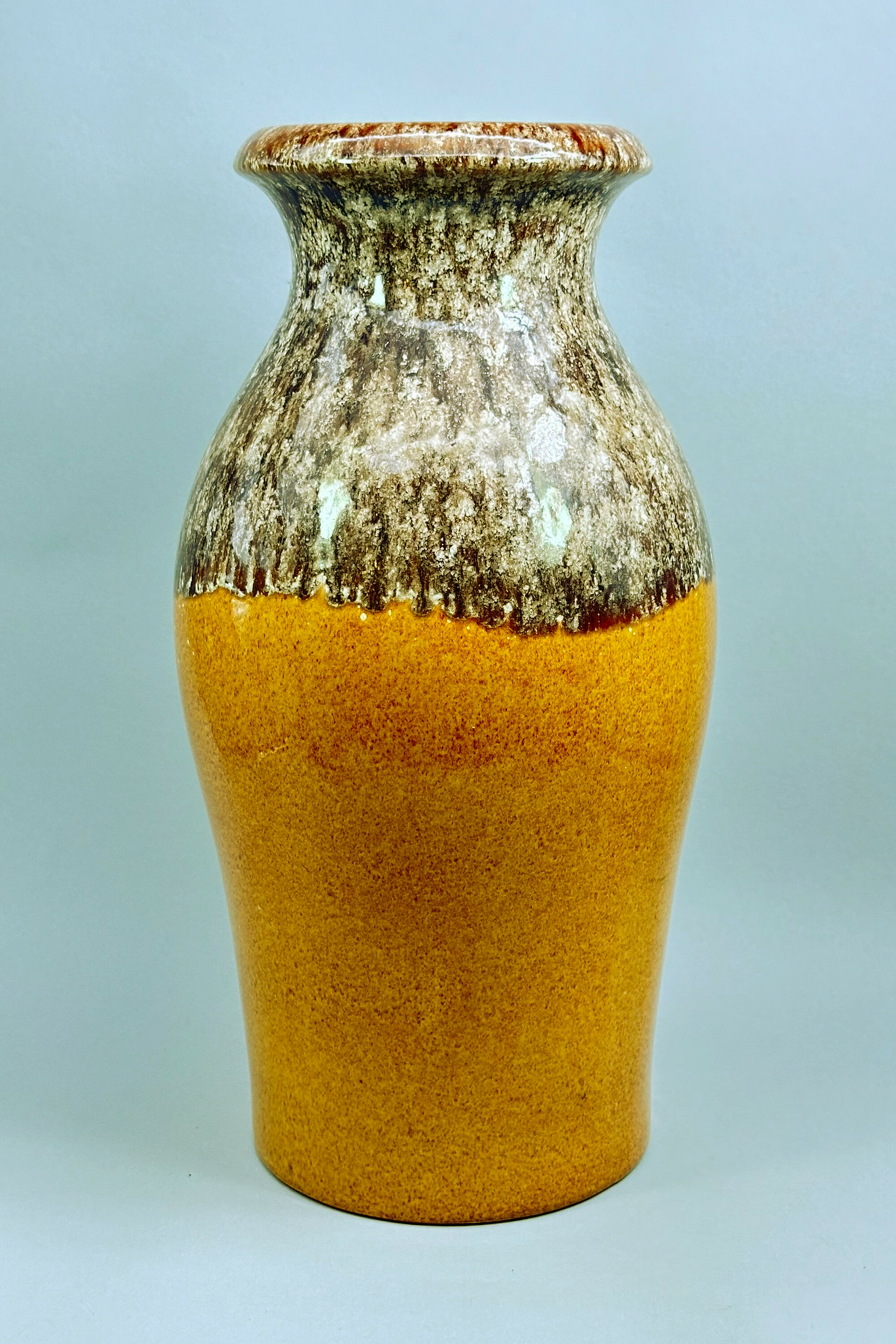
West German ceramic Vase, Scheurich, No 290-40, 1960s
Price: £55Although not marked as such, this vase has all the hallmarks of the firm Scheurich Keramik which started production in 1954, rather later than most of its competitors, but soon became the largest producer of commercial art pottery in Germany. Their pieces rarely carried the factory name but usually the model number followed by the height in centimetres with ‘W.Germany’ below, as here. Scheurich were well known for producing a wide variety of pieces with variegated, almost experimental glazes and this vase is yet another successful example of their work, the simple lines of form combining with a more austere selection of glaze effects than found in some of their other pieces. Dating is to the 1960s.
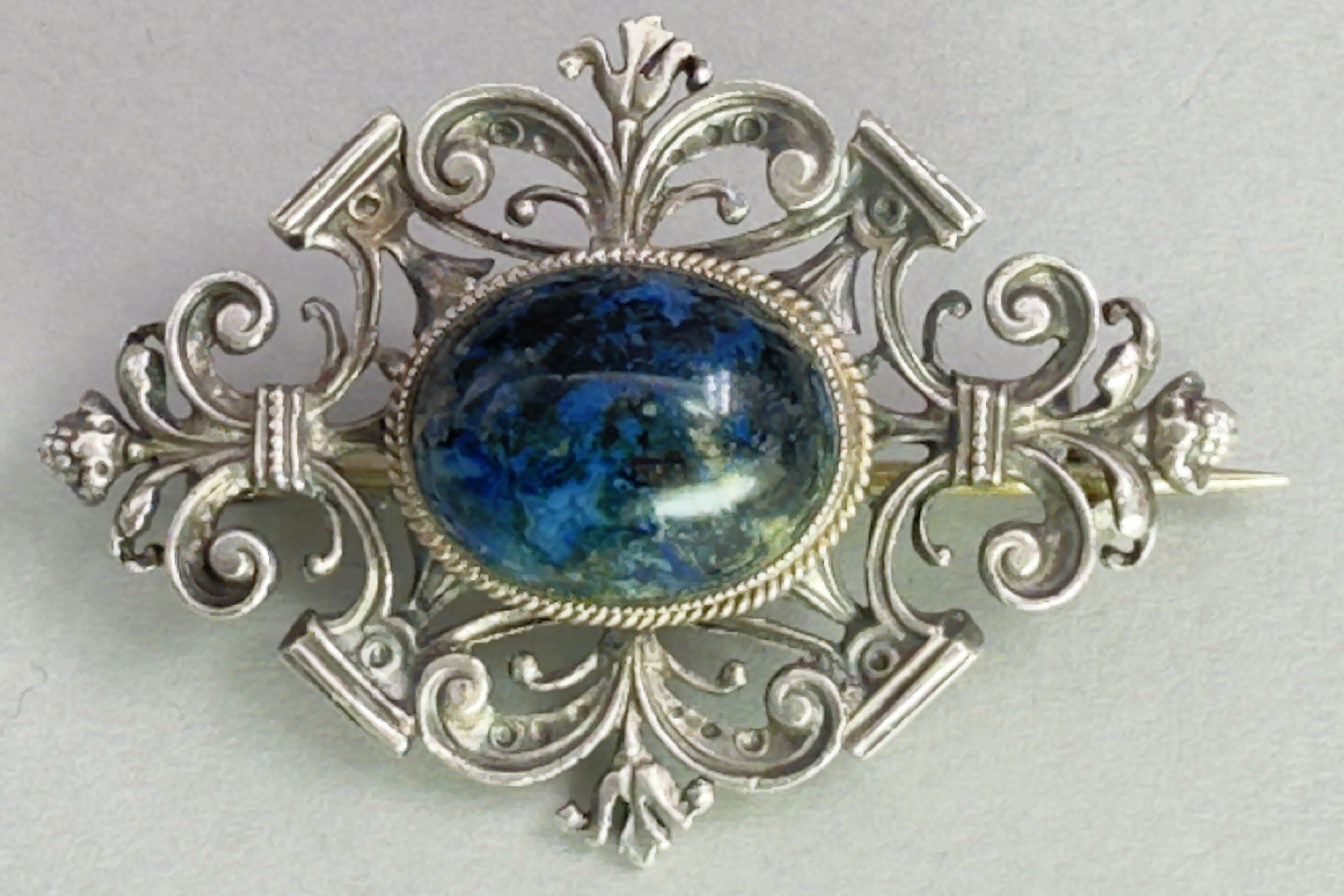
Florentine style lapis and silver brooch c1900
Price: £35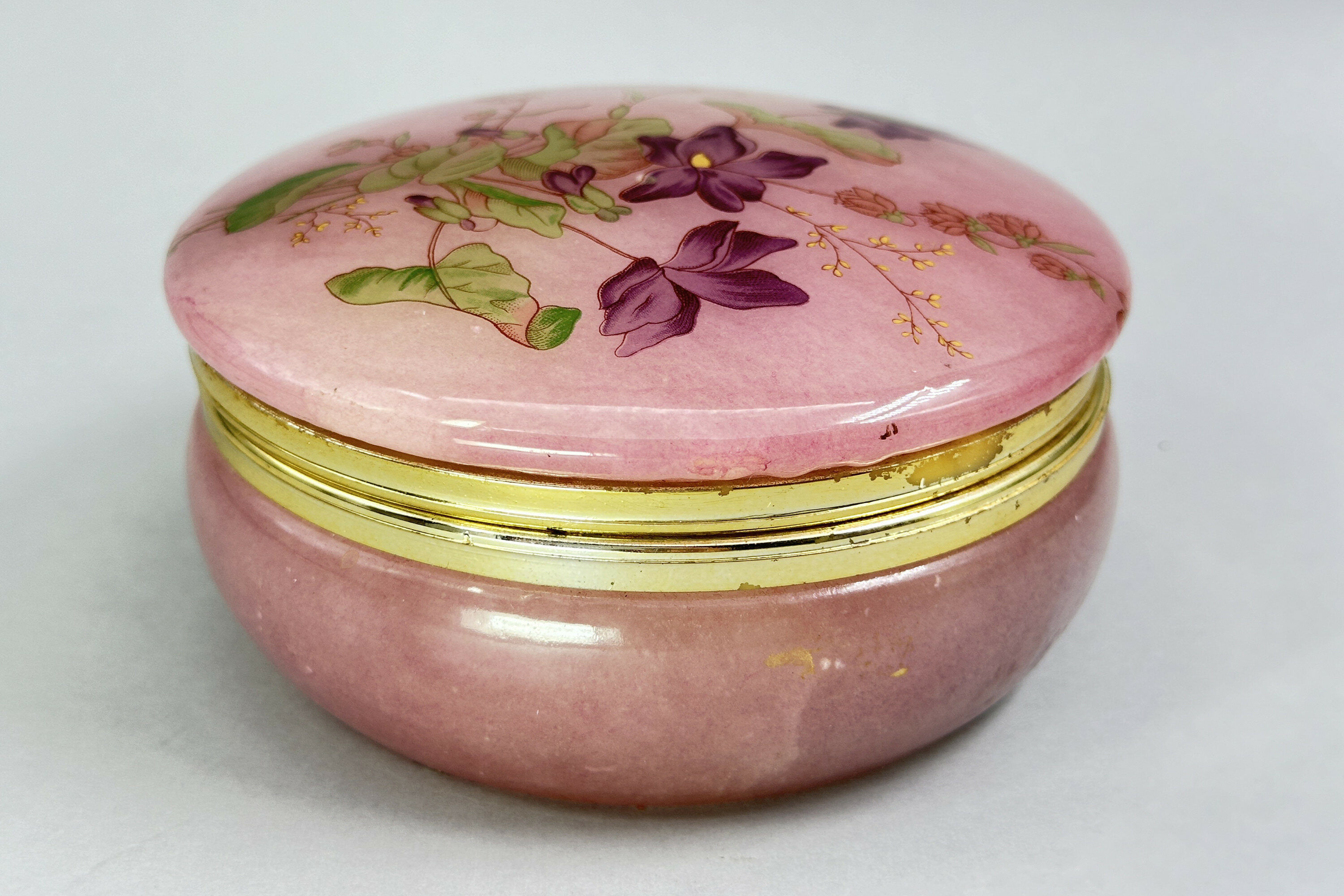
Pink Alabaster Box and Cover, Italy late c20th
Price: £25
Georgian neck brooch c1820
Price: £85
Nefertiti suite of pendant necklace and earrings, 20th century
Price: £75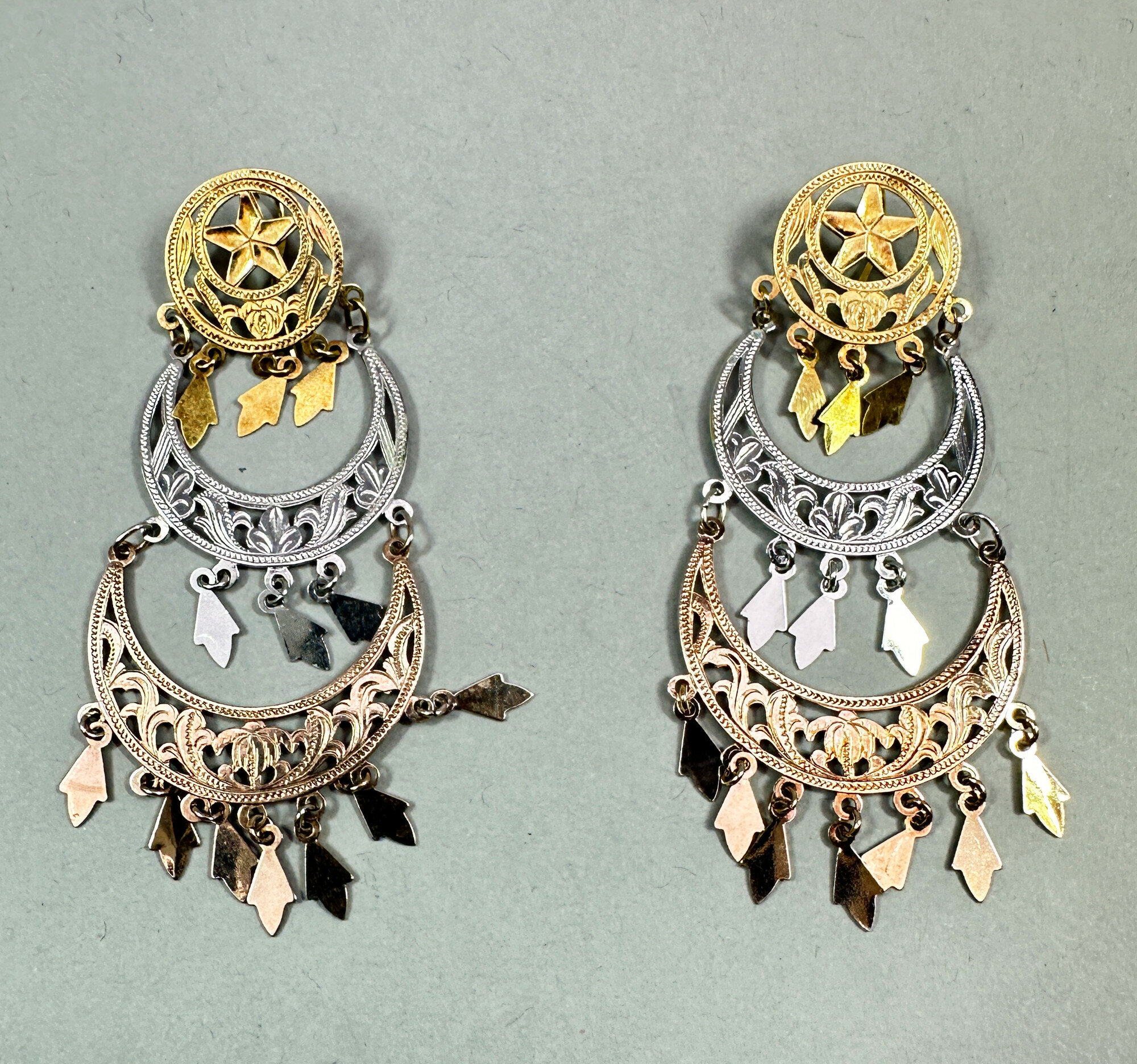
Pair of chandelier silver earrings 20th century
Price: £35
Silver Art Nouveau Mucha style brooch c1910
Price: £35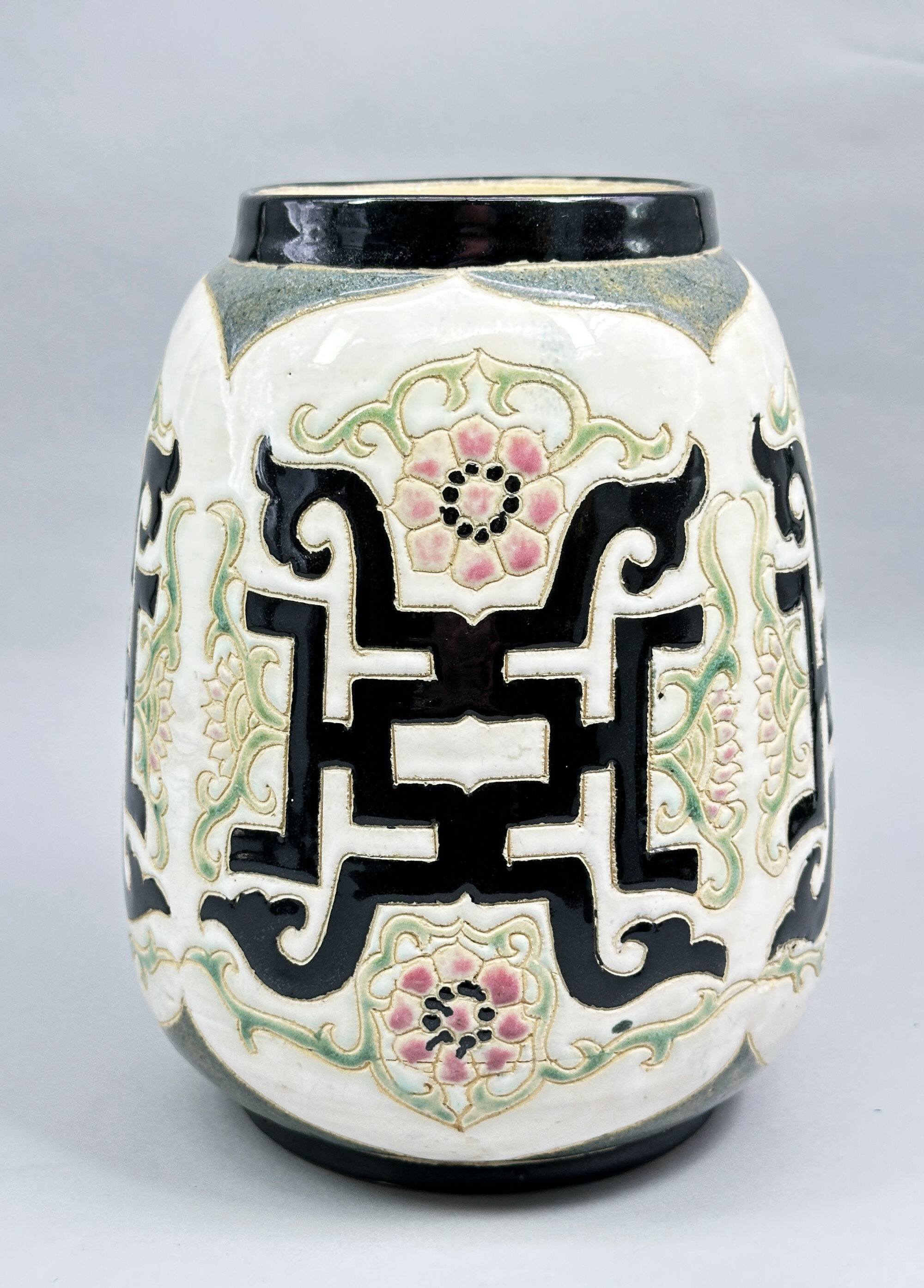
Continental Earthenware Vase with geometric motifs in the style of Amphora, C20th
Price: £45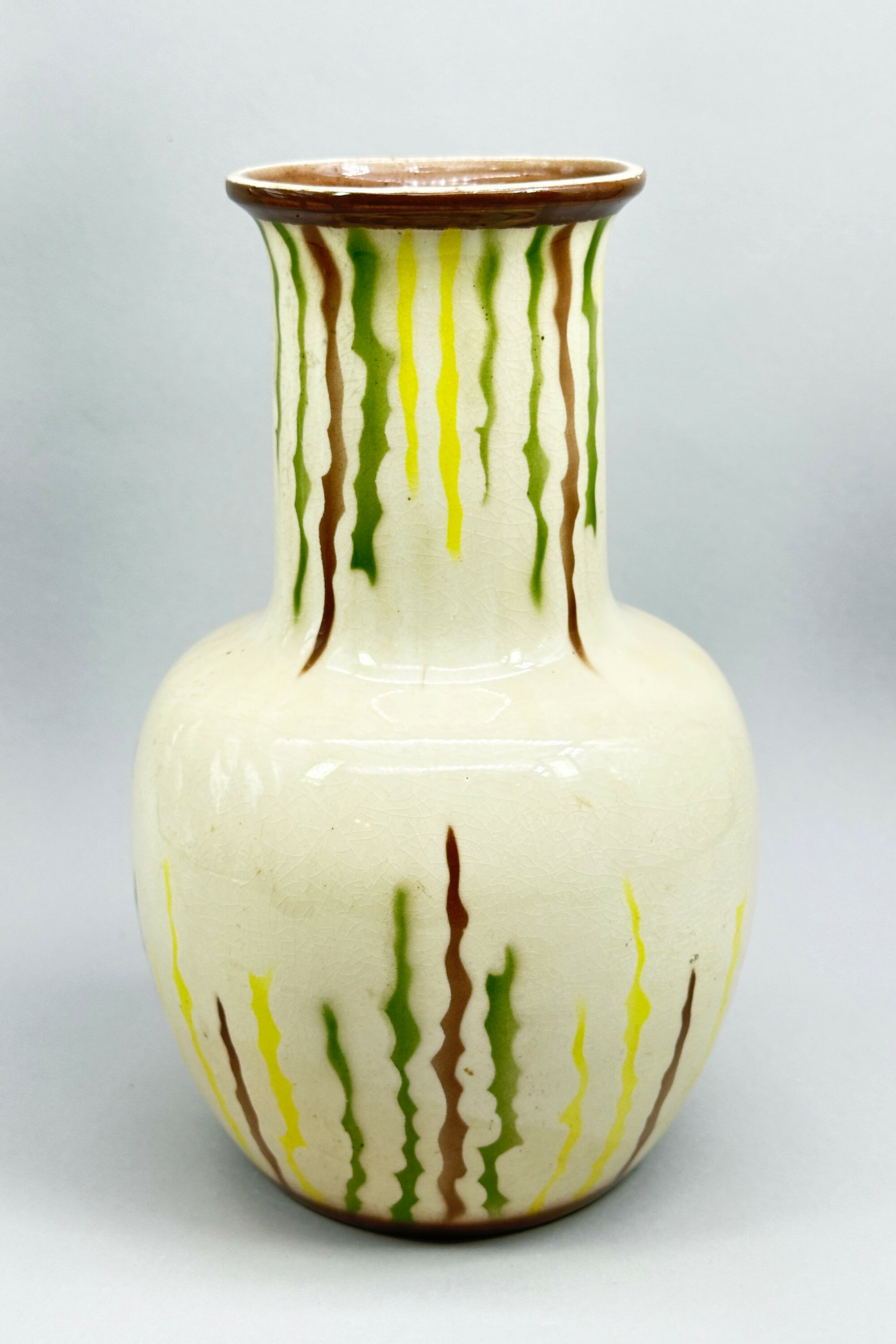
Art Deco style Vase signed E.Radford, mid C20th
Price: £75There were, in fact, two craftsmen working in the C20th British pottery industry with the name Edward Radford, father and son. Radford senior worked for Pilkington’s Royal Lancastrian Pottery in Manchester from 1903 until his retirement in 1936, acting as their main thrower. Radford junior joined his Father in 1905, but the First World War intervened, in which he won a Military Cross for his actions at Passchendaele in 1917 and afterwards he settled in Stoke on Trent, the heart of Britain’s pottery industry. An association developed with H.J.Wood’s Alexandra Pottery in Burslem who produced a range of wares bearing his name in the 1930s, although Radford himself may have acted as more a salesman than the designer. Production continued after the war and even after Radford’s retirement in 1948. The form of mark used here implies the later dating but may have been used earlier. The impressed figures indicate model number. Even if this vase is post war, the style is emphatically that of pre war Art Deco period with the simple lines of the form accompanied by semi abstract decoration vaguely reminiscent of Clarice Cliff combining to produce a piece of timeless attraction.

Art Deco necklace with French Jet and paste stations
Price: £45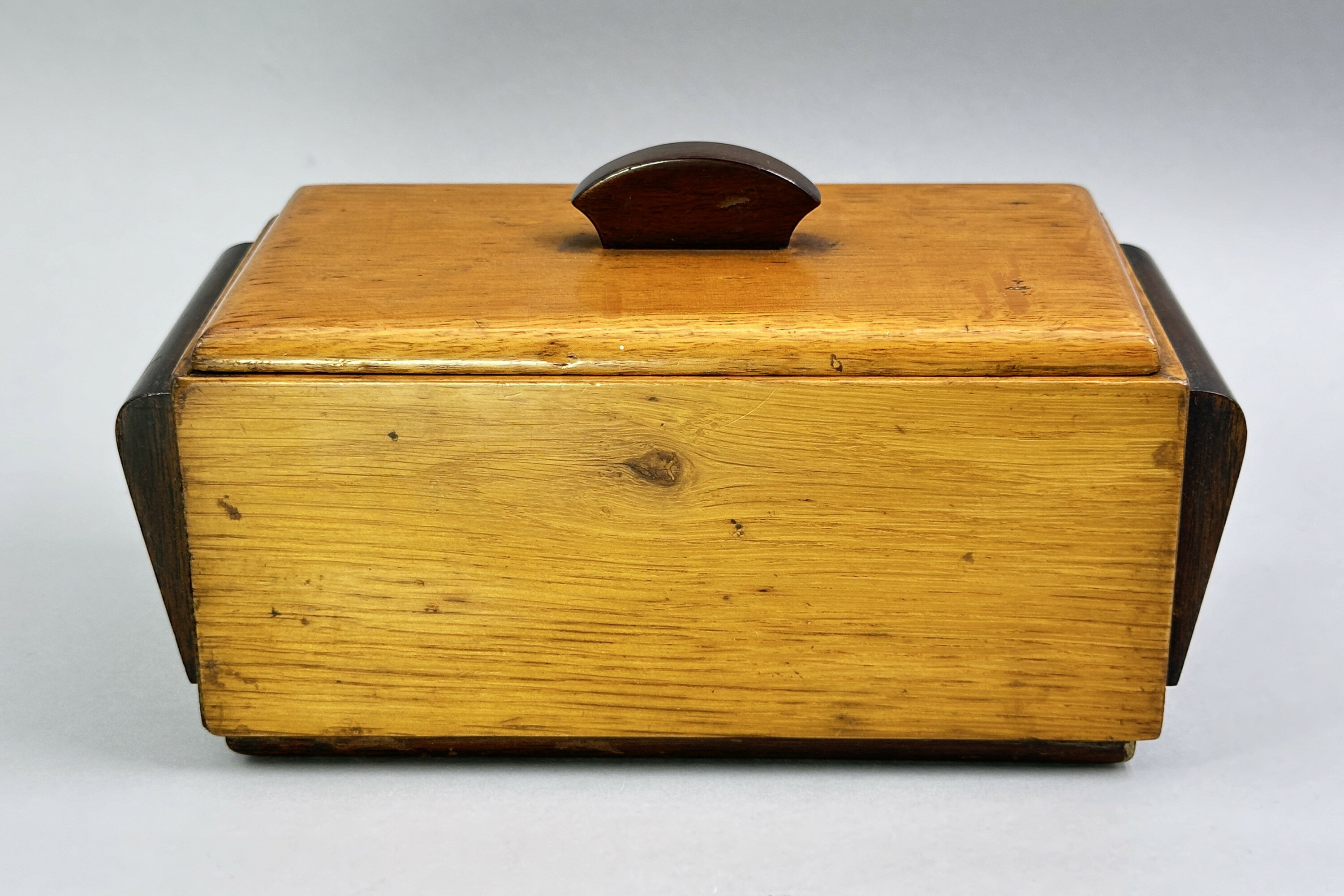
Art Deco Wooden Cigarette Box, 1930s
Price: £25
Incredible Taxco collar necklace c1960
Price: £350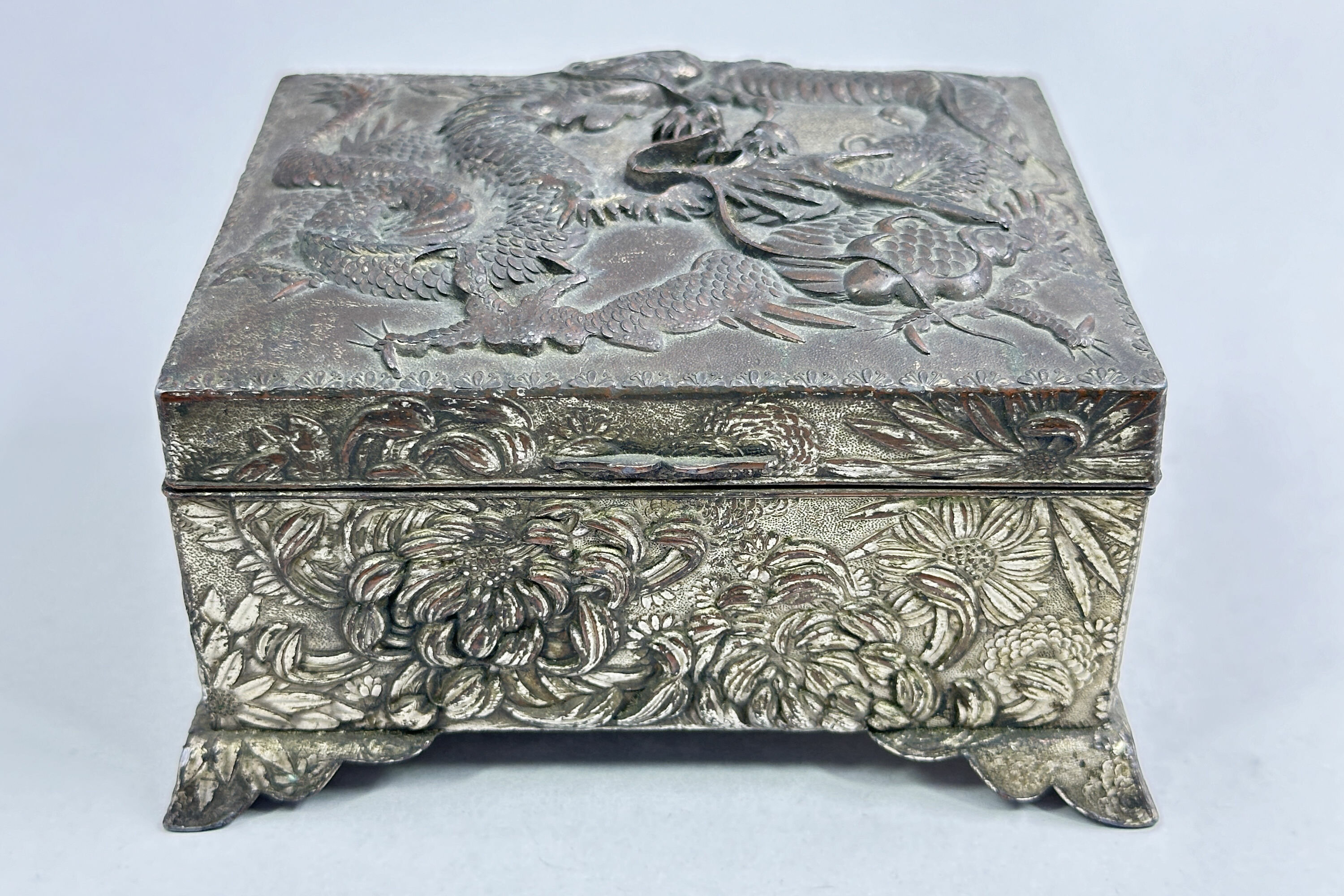
Oriental Silver Metal Box decorated Dragons and Chrysanthemum, C20th
Price: £25
Islamic mother of pearl pendant and earrings c1950
Price: £18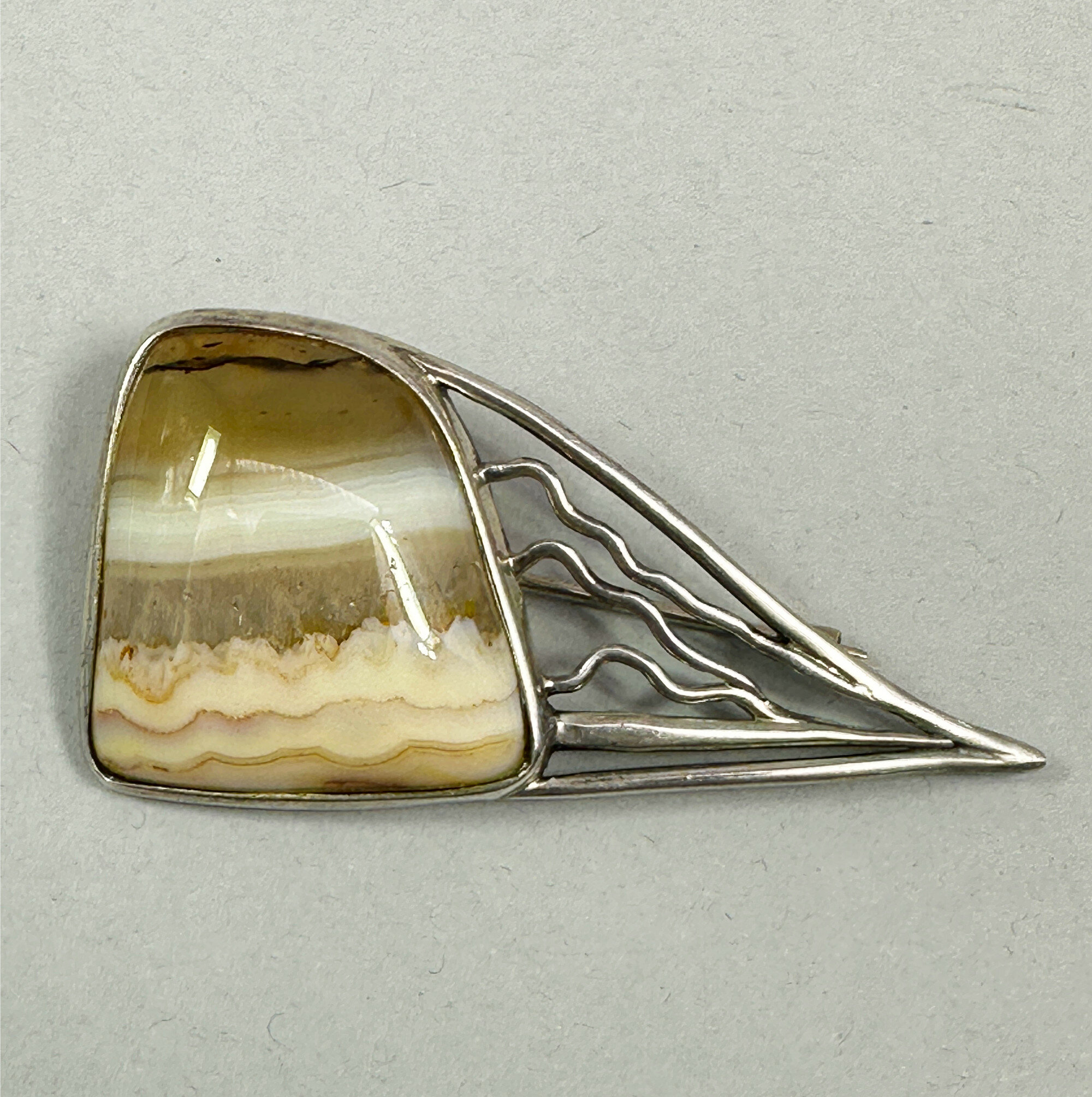
Scottish agate modernist brooch c1970
Price: £25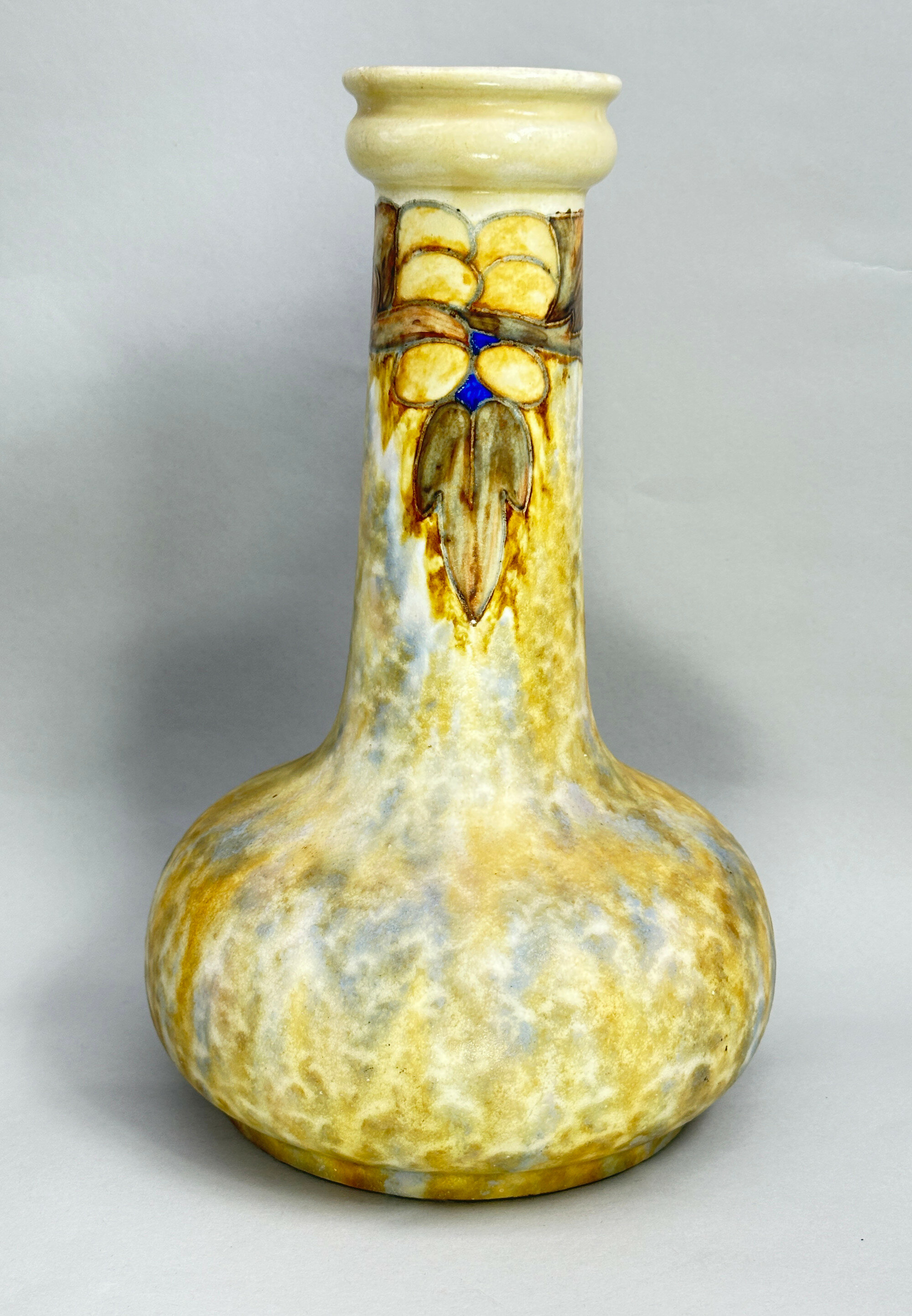
Cranston Ware Art Nouveau Style Vase, early C20th
Price: £95Cranston Ware was one of the ranges produced by the Pearl Pottery Company, based in Hanley, Stoke on Trent. Founded in 1892, the firm produced a varied selection of ceramic wares, often following contemporary fashions, until its closure in 1947. This vase is demonstrably in the Art Nouveau style and would have been produced when it was at its zenith in the early 1900s. The pattern was known as ‘Tukan’ ware and some of the pieces, but not all, have an impressed mark displaying this. This is an excellent example of the type with the glazes and decorative detail well rendered and certainly deserves the attention of collectors of Art Nouveau.
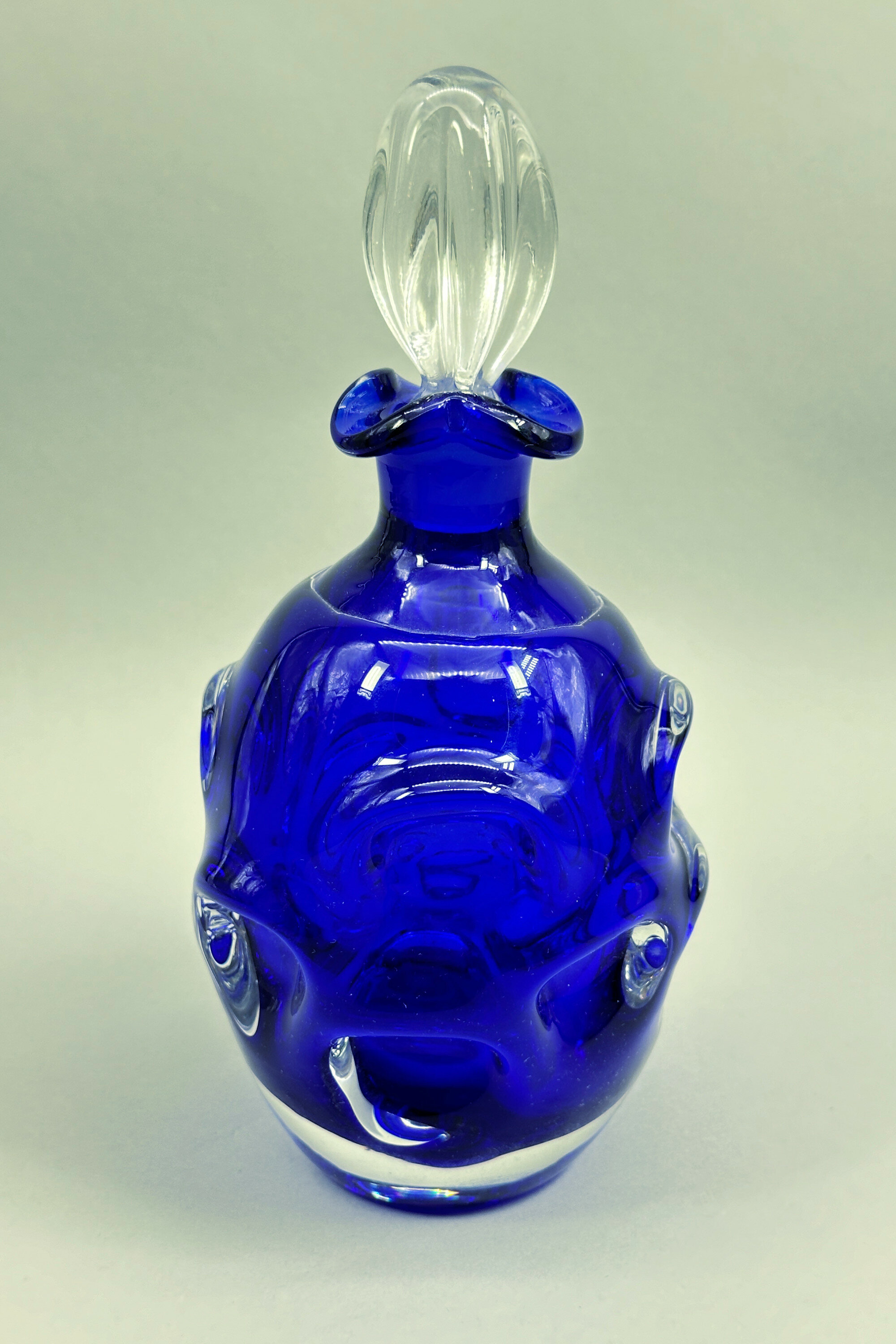
Aseda Glasbruk Blue Glass Bottle and Stopper by Bo Borgstrom, 1960s
Price: £55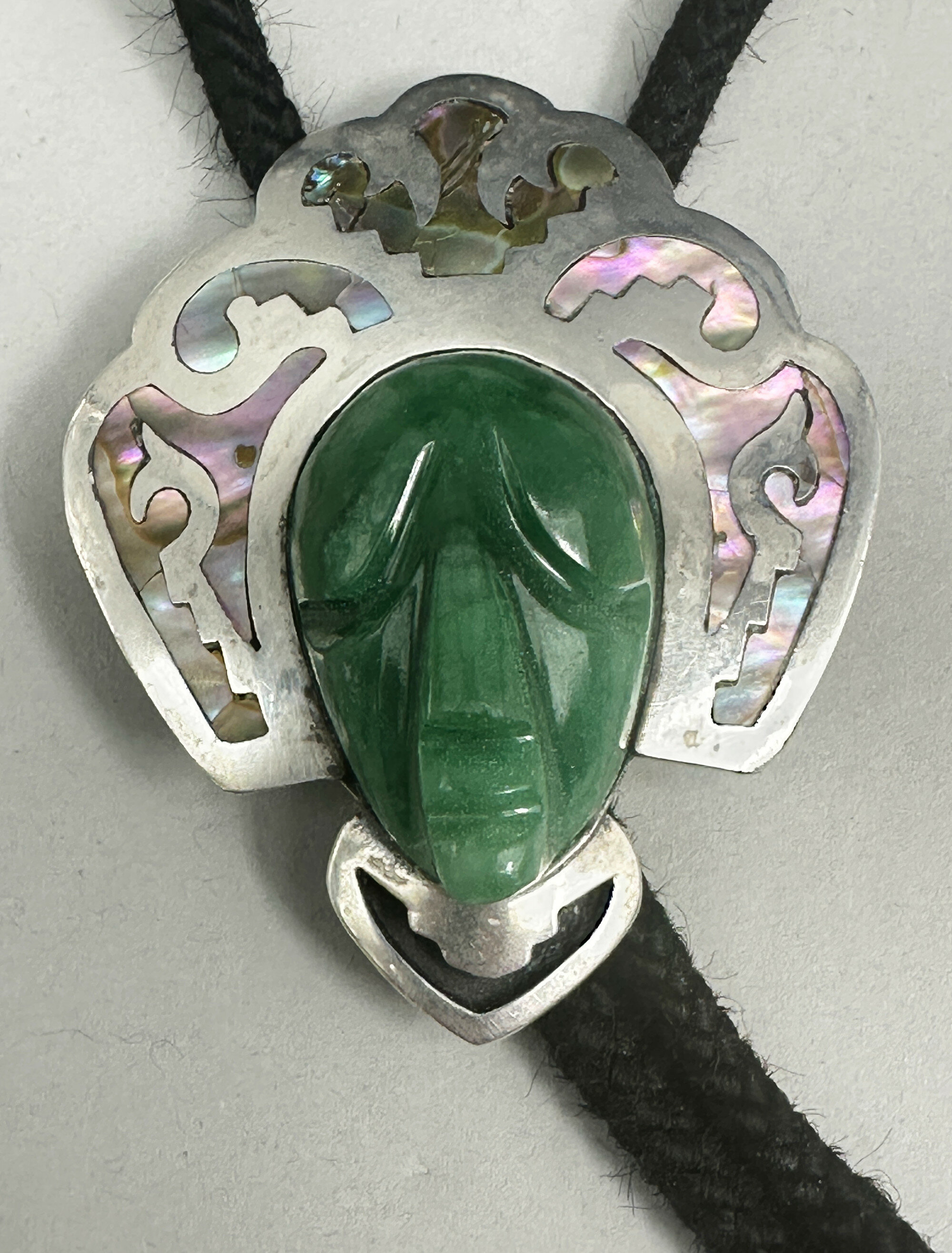
Mexican Silver Bolo Tie with Aztec mask Head, Taxco, c1950
Price: £125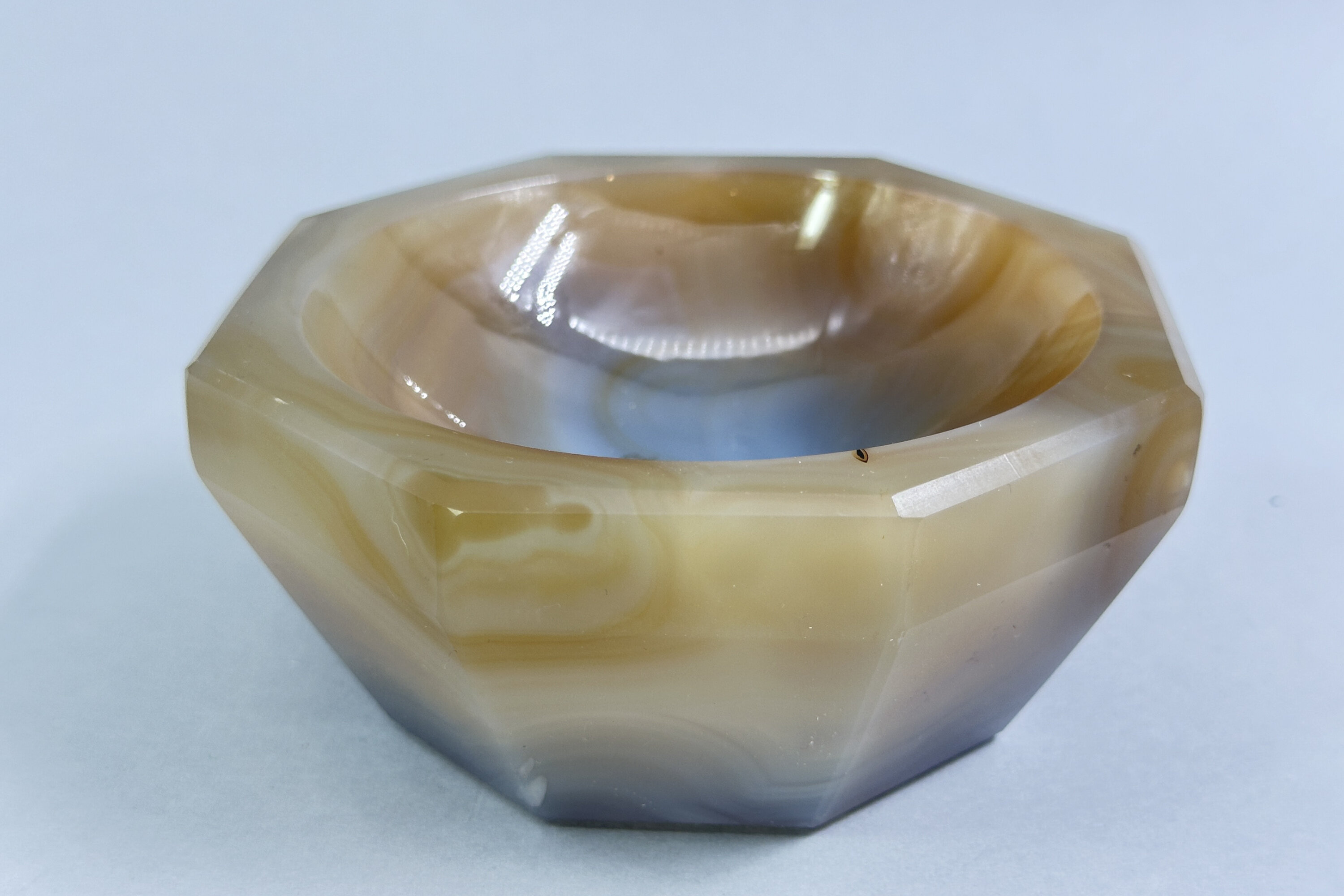
Octagonal Agate Mortar Bowl, C20th
Price: £25
Four Art Deco style small Glass Vases with silver decoration, possibly Murano 1930s
Price: £55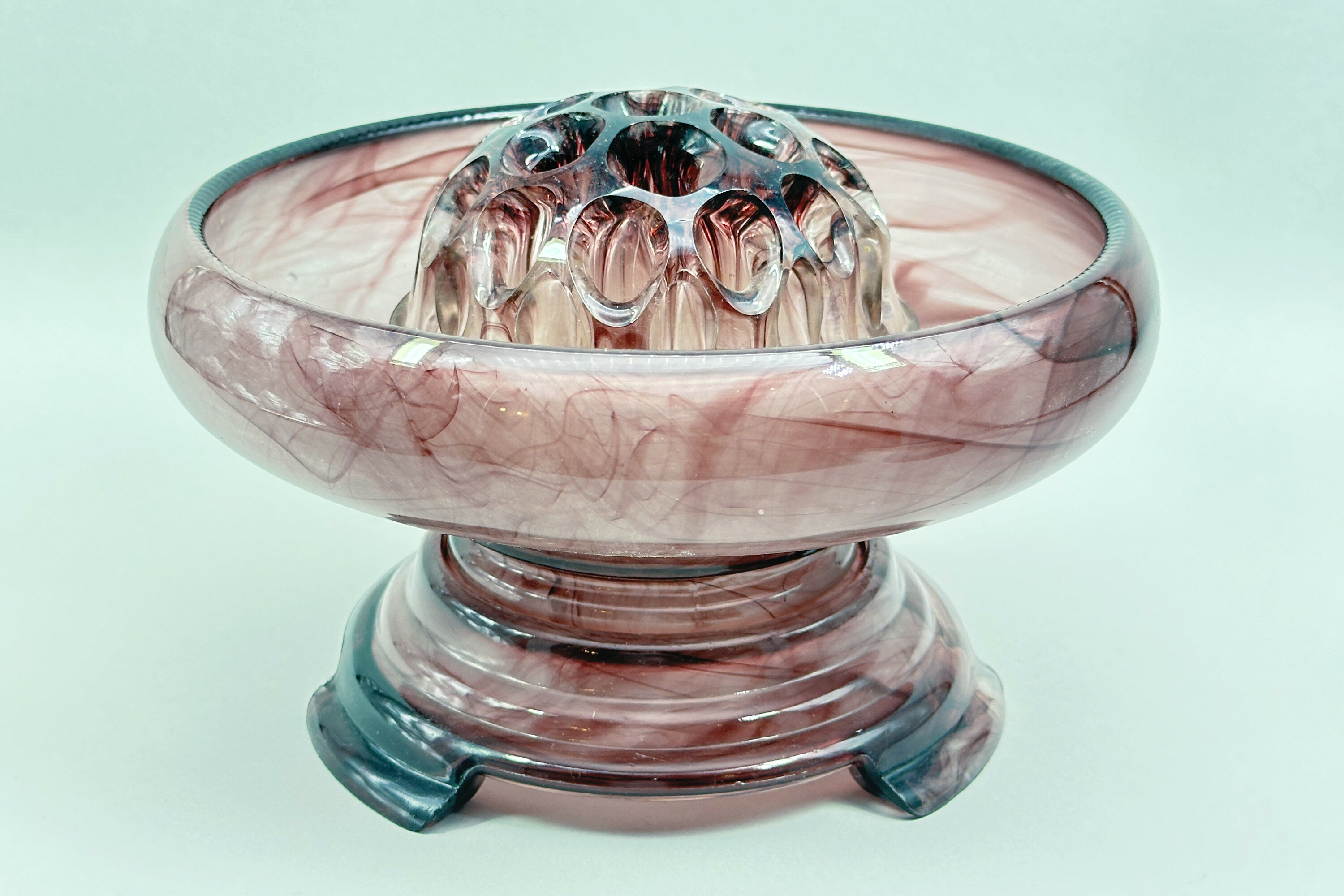
Art Deco Davidson purple cloud glass bowl, stand and frog, 1930s
Price: £75This model can be seen in the firm's catalogue for 1931 where the bowl and stand are combined with a separate pierced flower holder in the same style. No doubt the size of the ‘frog’ was up to the purchaser who could choose from a range of dimensions which probably explains the slightly different proportions here to the catalogue image which otherwise illustrates our example extremely well, even down to the milled edging to the rim of the bowl. With its archetypal shape and colouring this piece would be an excellent addition to any Art Deco collection as well as providing a striking and decorative item for a contemporary interior.
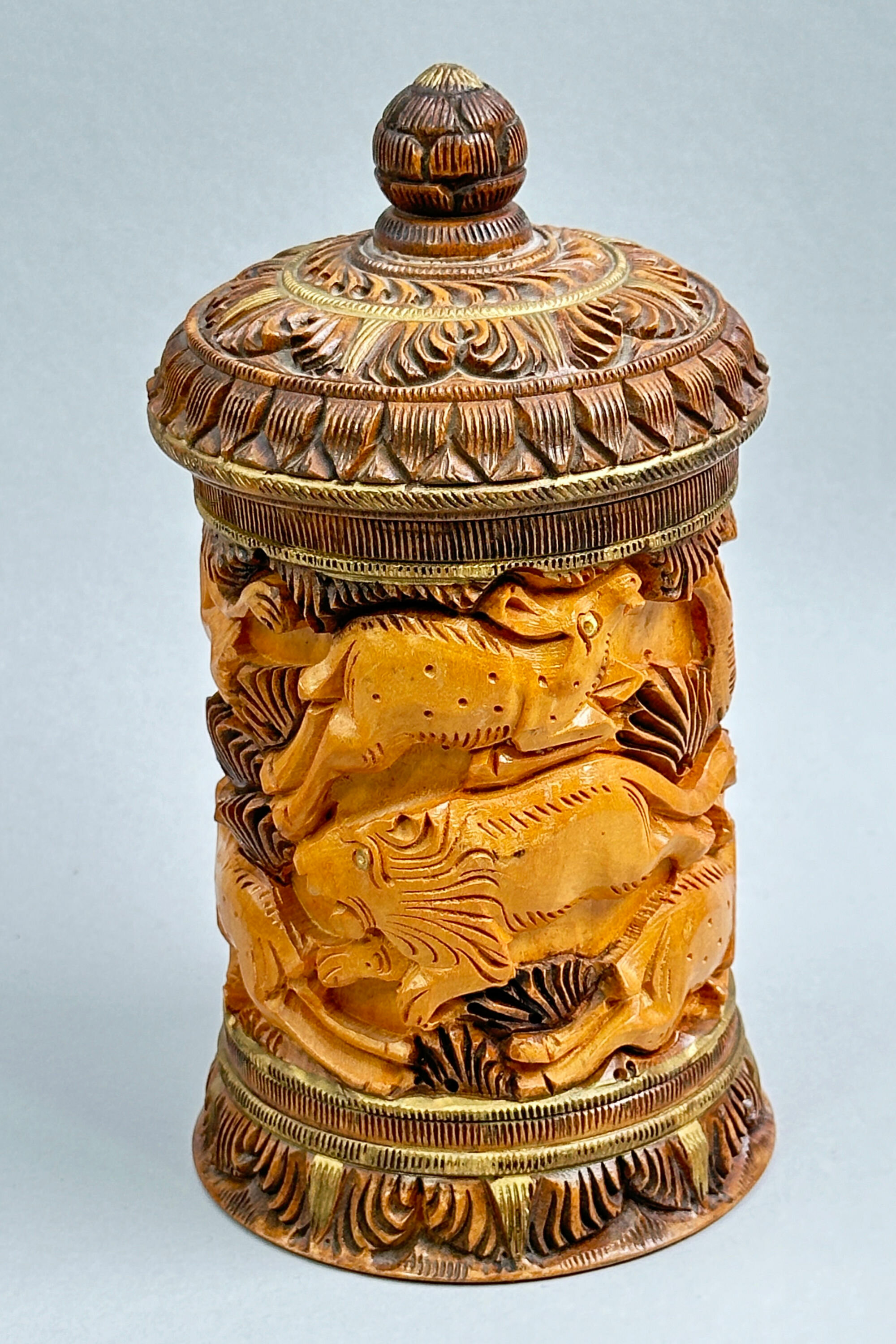
Indian Carved Wood Tobacco Jar with Jungle Scene, mid C20th
Price: £25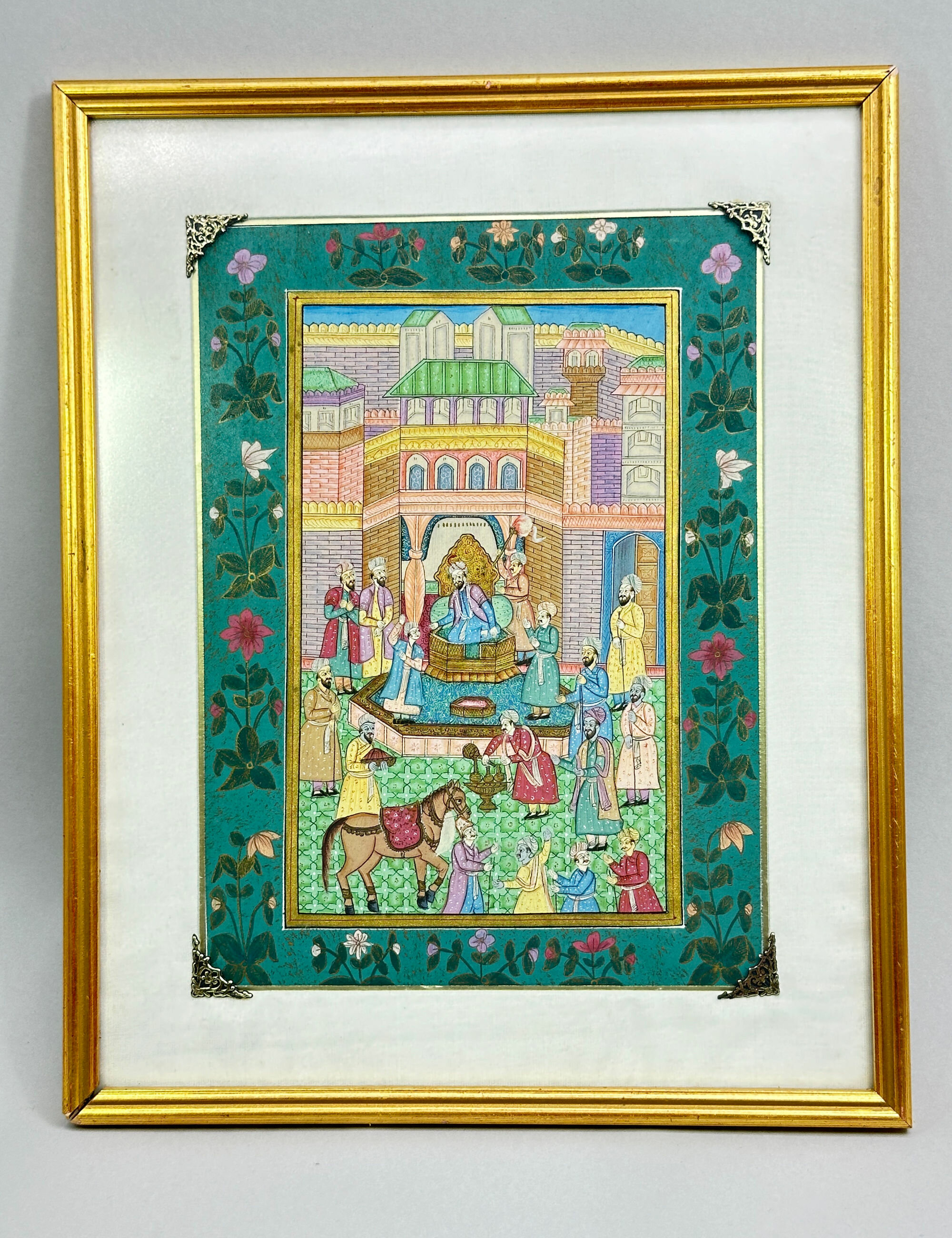
Gouache Painting of a Court Figure Scene, Indian or Persian, C20th
Price: £45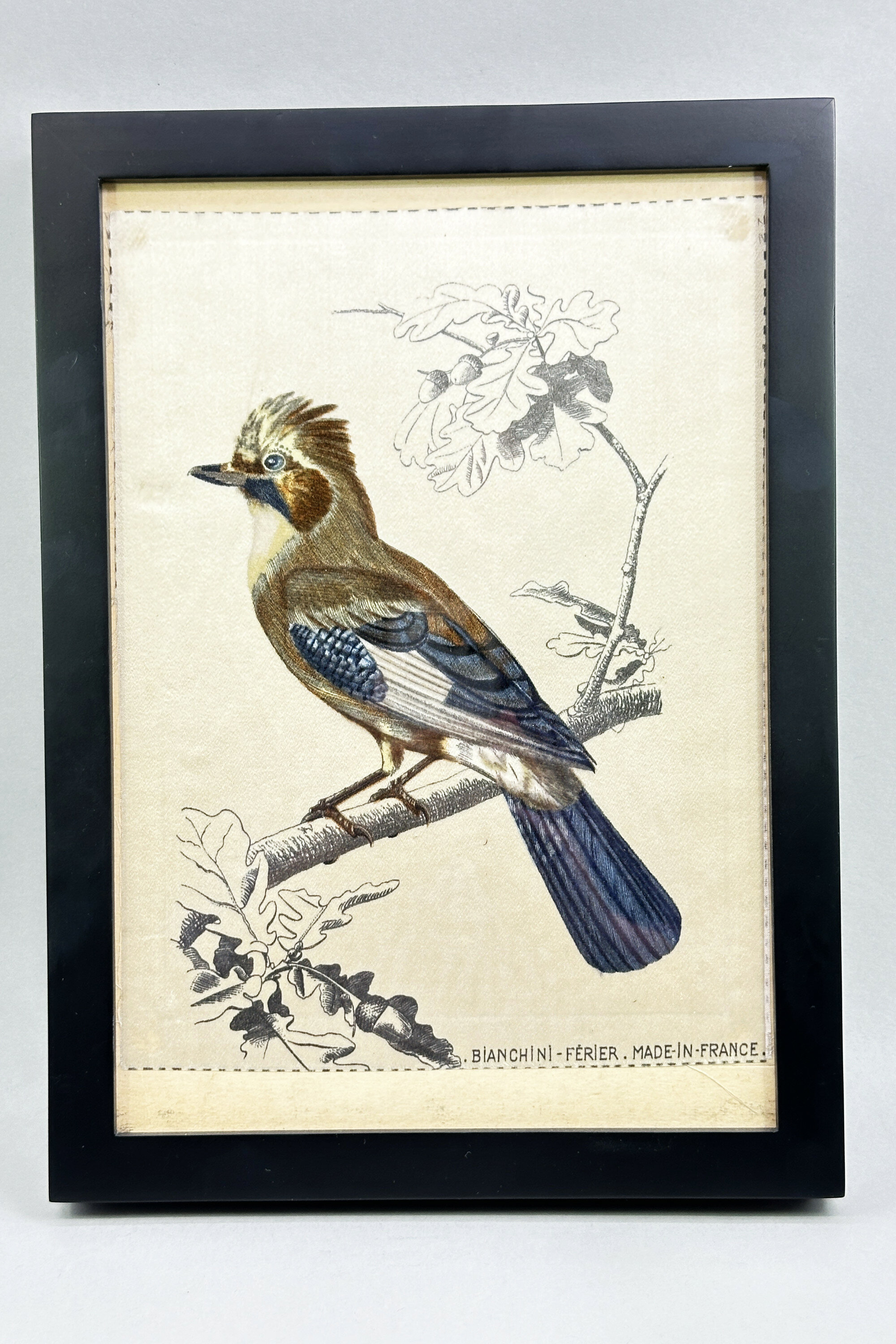
Silk Print of a Bird, Bianchini-Ferier, France, early C20th
Price: £25Bianchini Ferier was a silk weaving manufacturer based in Lyons. Founded in 1888 by Francois Atuyer, Charles Bianchini and Francois Ferier, it first produced fine silk damasks mainly for the clothing industry. After gaining a silver medal at the Paris Exposition Universelle of 1889 it went on to enjoy great success and many well known artists created designs for it in the early C20th, most notably Raoul Dufy. Production continued until the early 1990s when the firm was acquired by Tissages Bauman.
This print resembles designs in the firm’s archives from the late C19th and was probably created in the early C20th. It was designed for framing and the dotted line definition of the composition can be seen at the edges. Presented now in a modern surround it provides an excellent example of the firm’s work and a reflection of the Art Nouveau style so popular when it was produced.
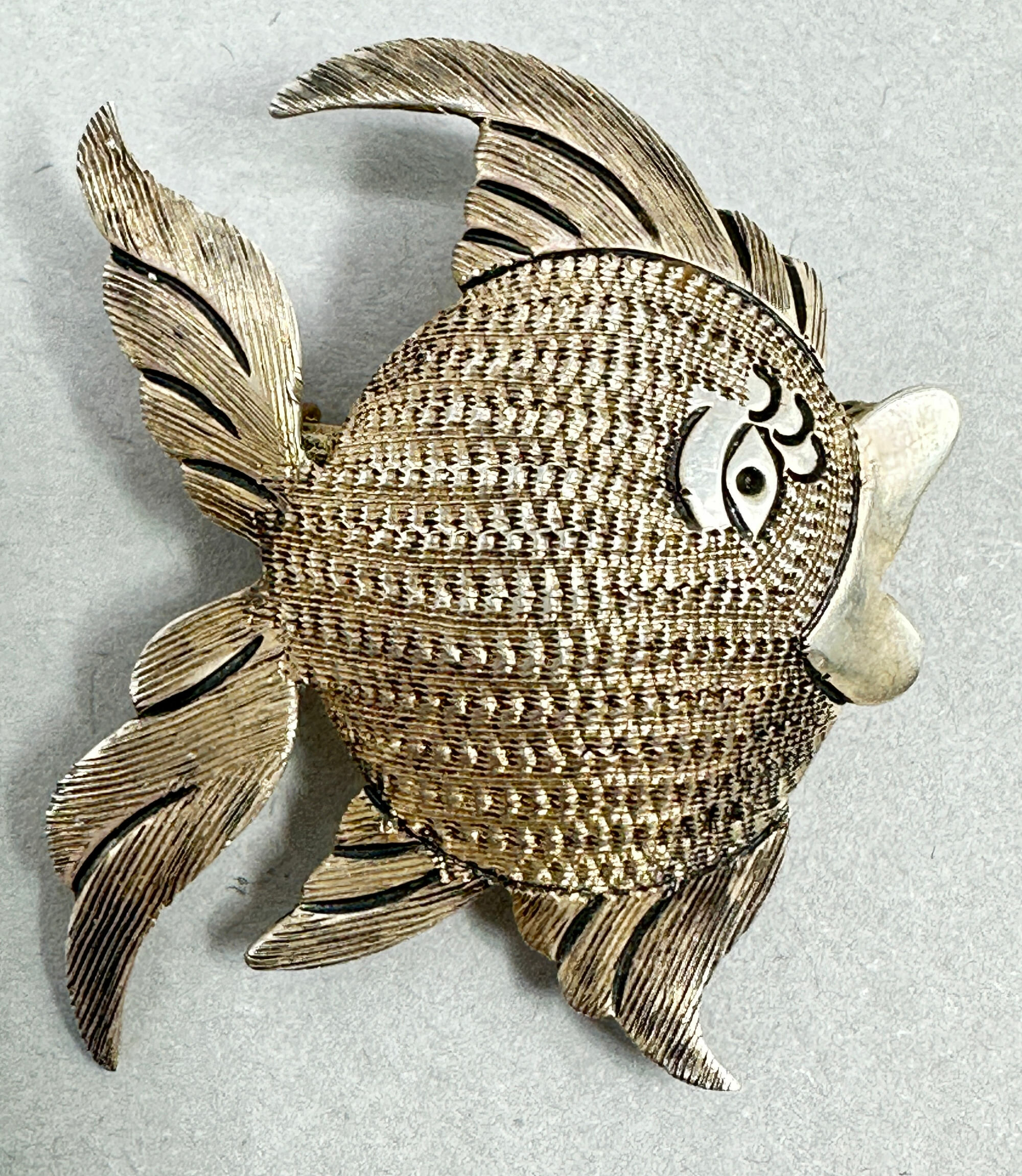
Taxco Fish Brooch c1940
Price: £25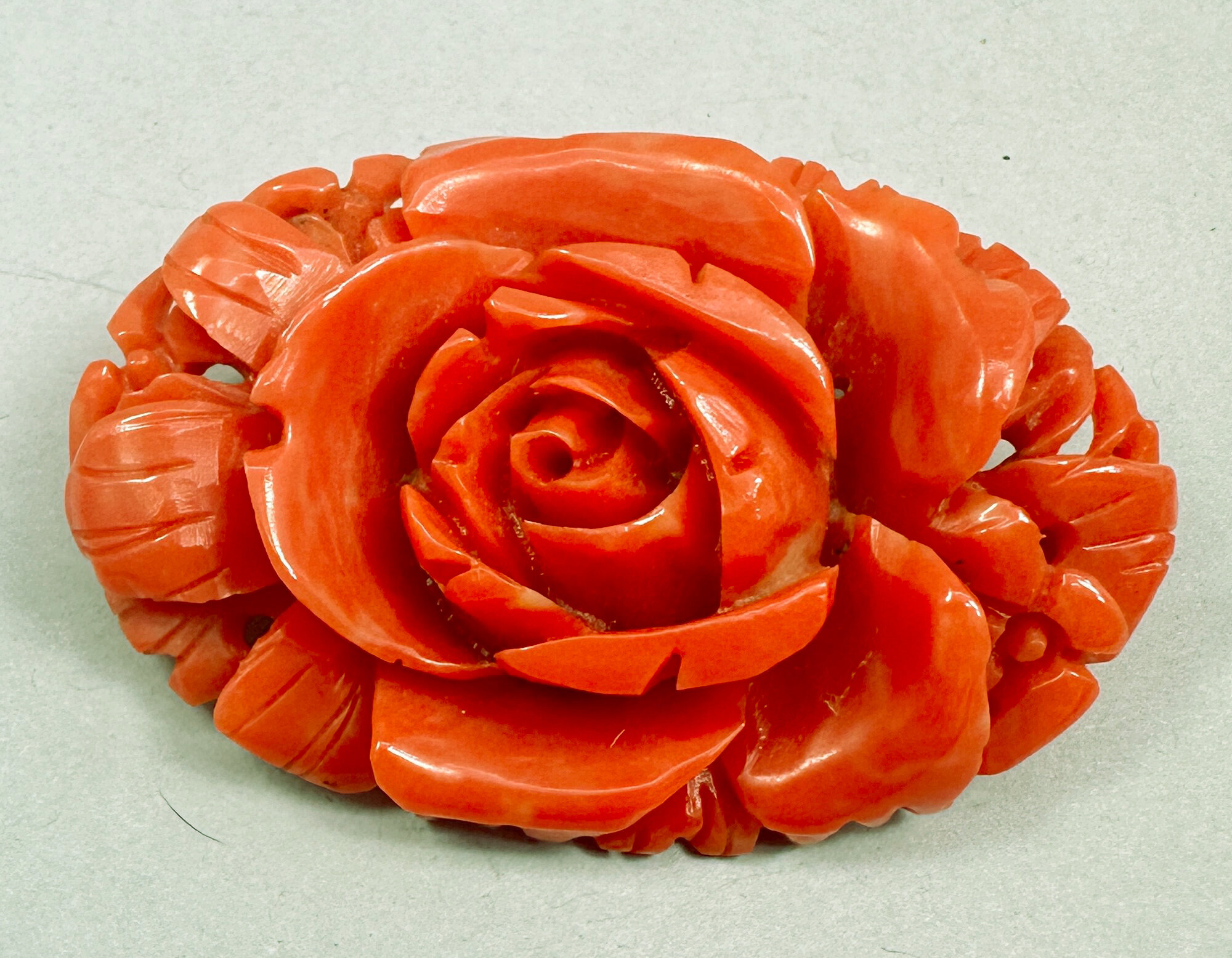
Large faux coral Bakelite brooch, British c1940
Price: £65
Massive Grotto style belt buckle c1980
Price: £25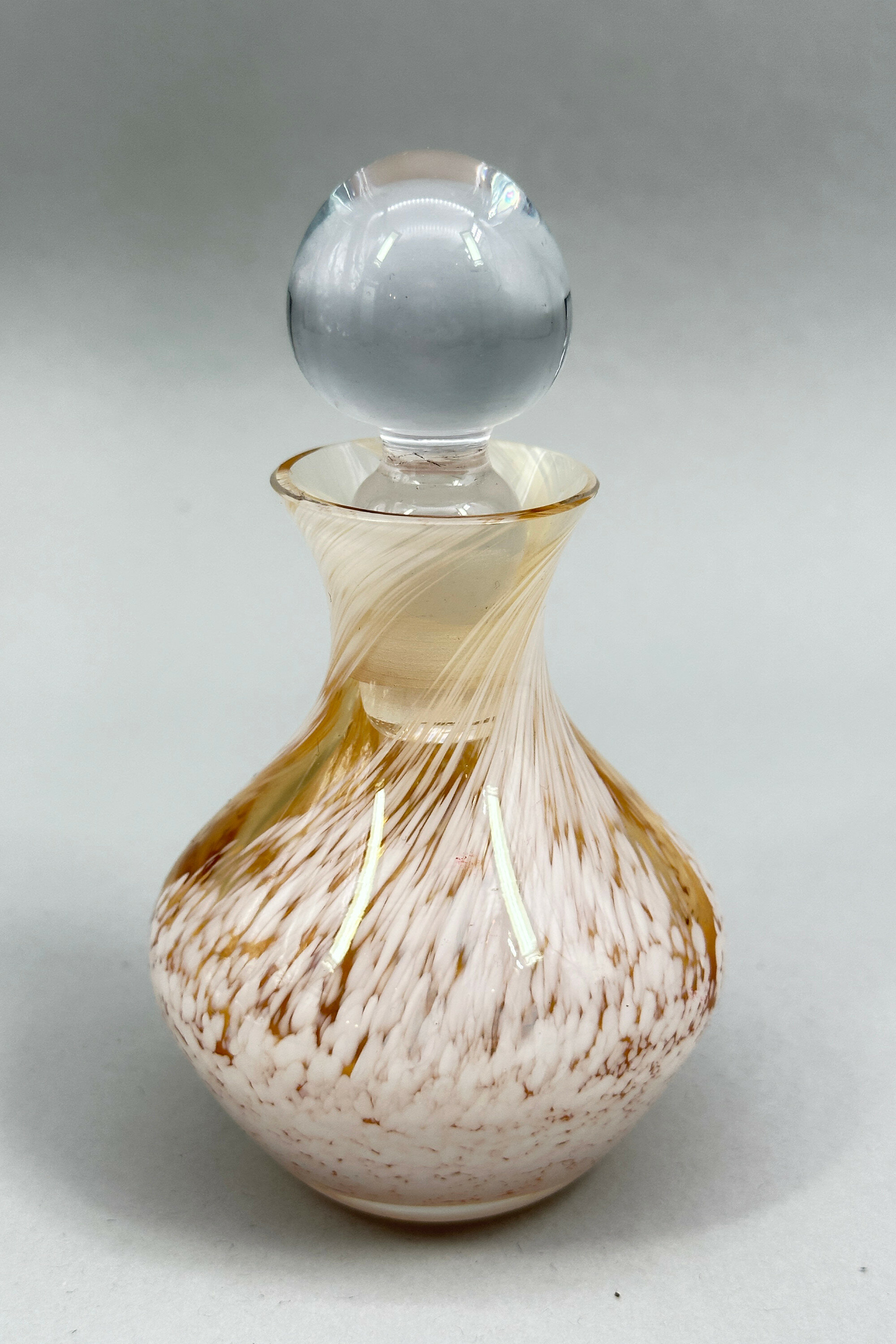
Perfume Bottle and Stopper, Island Studio, Guernsey, late C20th
Price: £30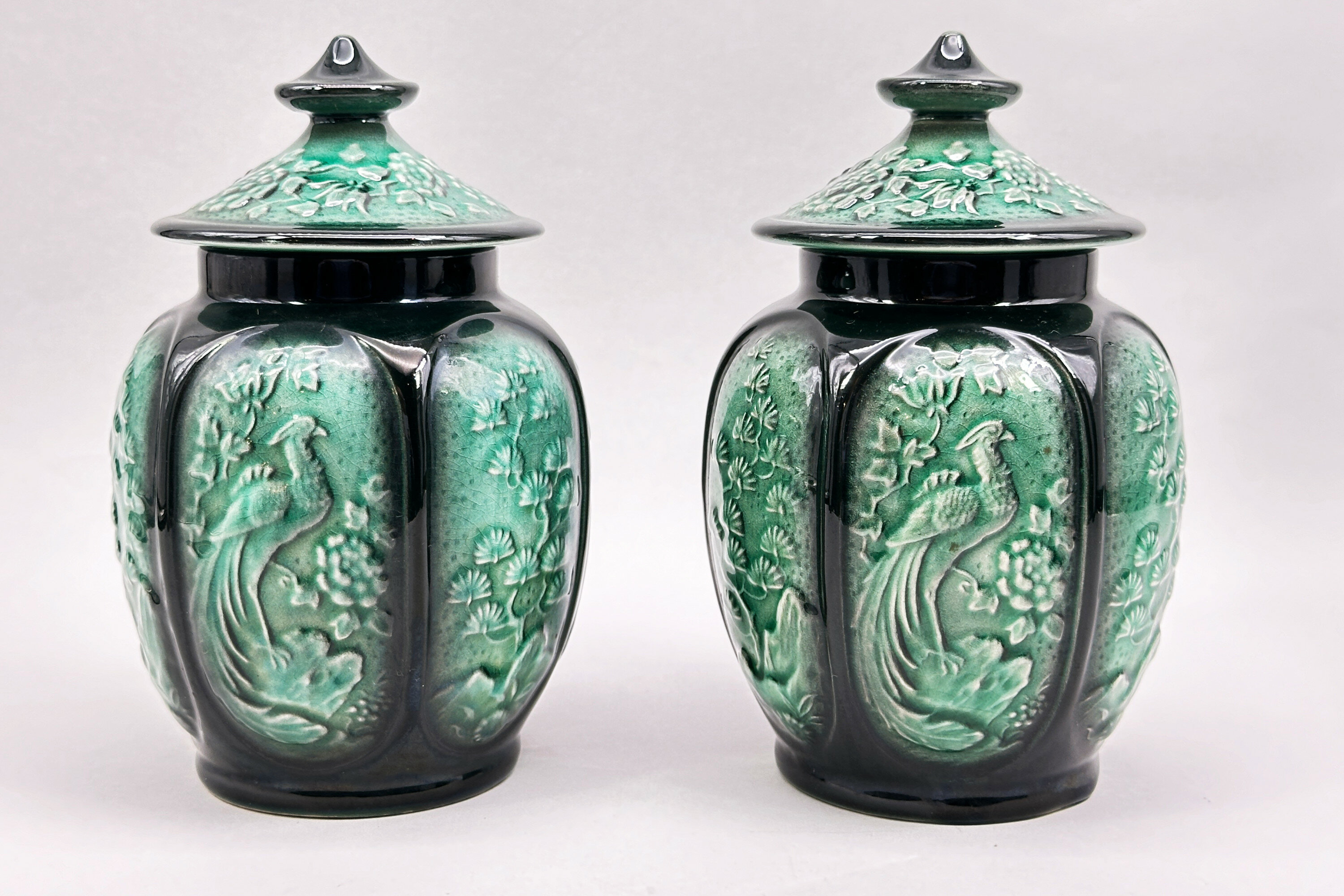
Pair of Oriental Style green glazed Sylvac Jars and Covers, circa 1960
Price: £95‘SylvaC’ (the name was written with a capital ‘C’ after registration of the trademark in 1938) was a trade name of Shaw and Copestake, a company formed by Mr. William Shaw and a Mr. Copestake around 1900. Mr. Copestake sold his shares to a Mr. Richard Hull after about six months of business and this partnership continued until Mr. Hull’s death in 1935. He was succeeded by his son, Mr. Richard Hull junior. In the following year, the business became a limited company. Various mergers and acquisitions followed and in the 1950s new premises were built and production expanded considerably continuing until the early 1980s when changing markets and increased competition forced the company into liquidation.
Sylvac were known for imaginative glazed wares, particularly animals, but this design with its reminiscences of the Orient in both form and decoration is rather more unusual and particularly pleasing. These jars were produced in a variety of colours but the combination here of green and black, loosely recalling Chinese ‘Famille Noire’, is probably the most successful.
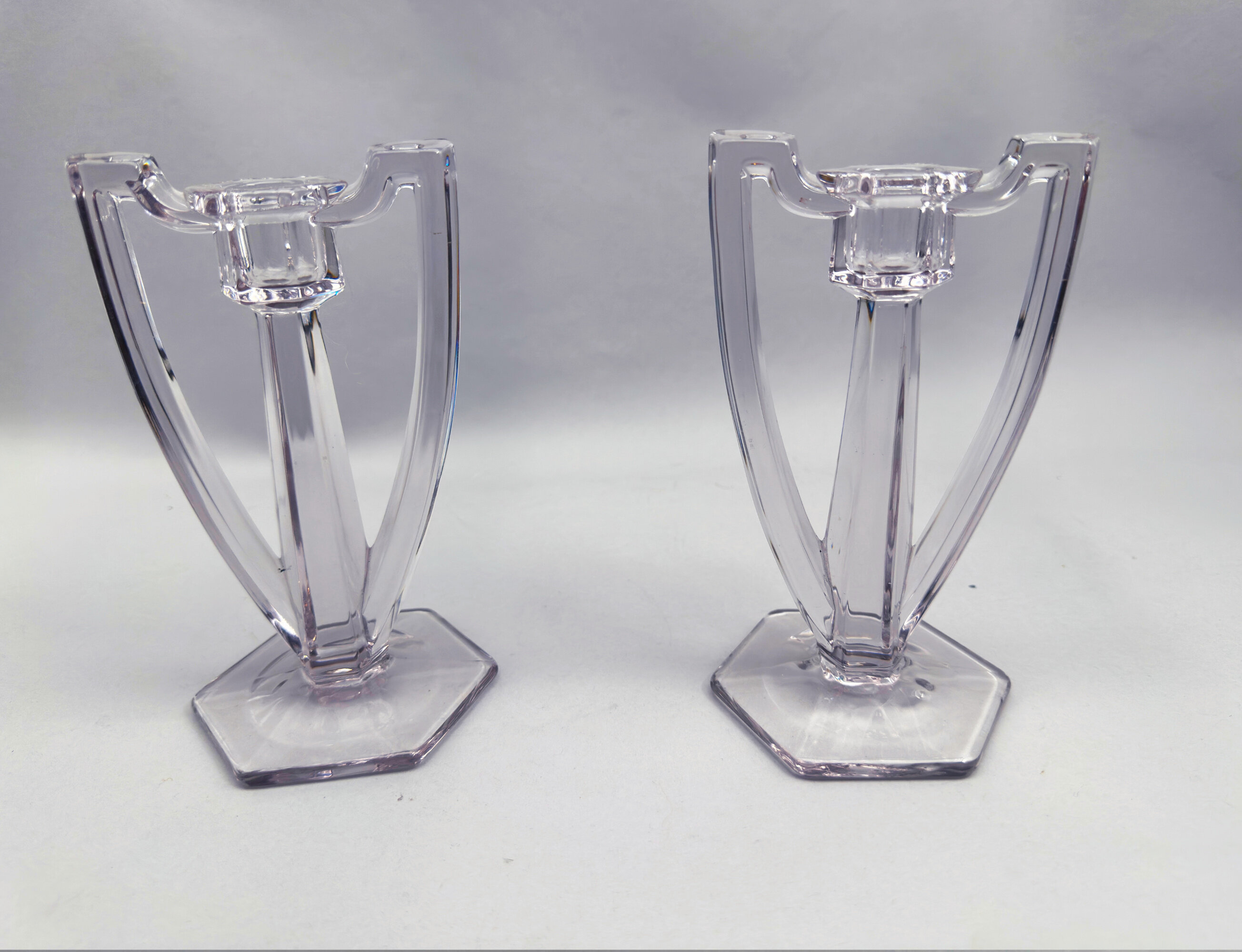
Pair of Glass Candlesticks, Davidson Chippendale, 1930s
Price: £25Chippendale glass was designed and patented in the USA in the early years of the 20th Century and imported into Britain. The moulds were purchased by a Charles Pratt and Davidson’s used them to produce this range of glassware purchasing the exclusive rights to manufacture Chippendale glass when they realised its popularity. Various forms were included in the range and manufactured by the pressed glass technique for which the firm had become famous. The mould marks of this pair can be clearly seen at the bases (see image 4). The clean angular lines are typical of art deco designs and Davidson’s produced here a model which was both practical and decorative.
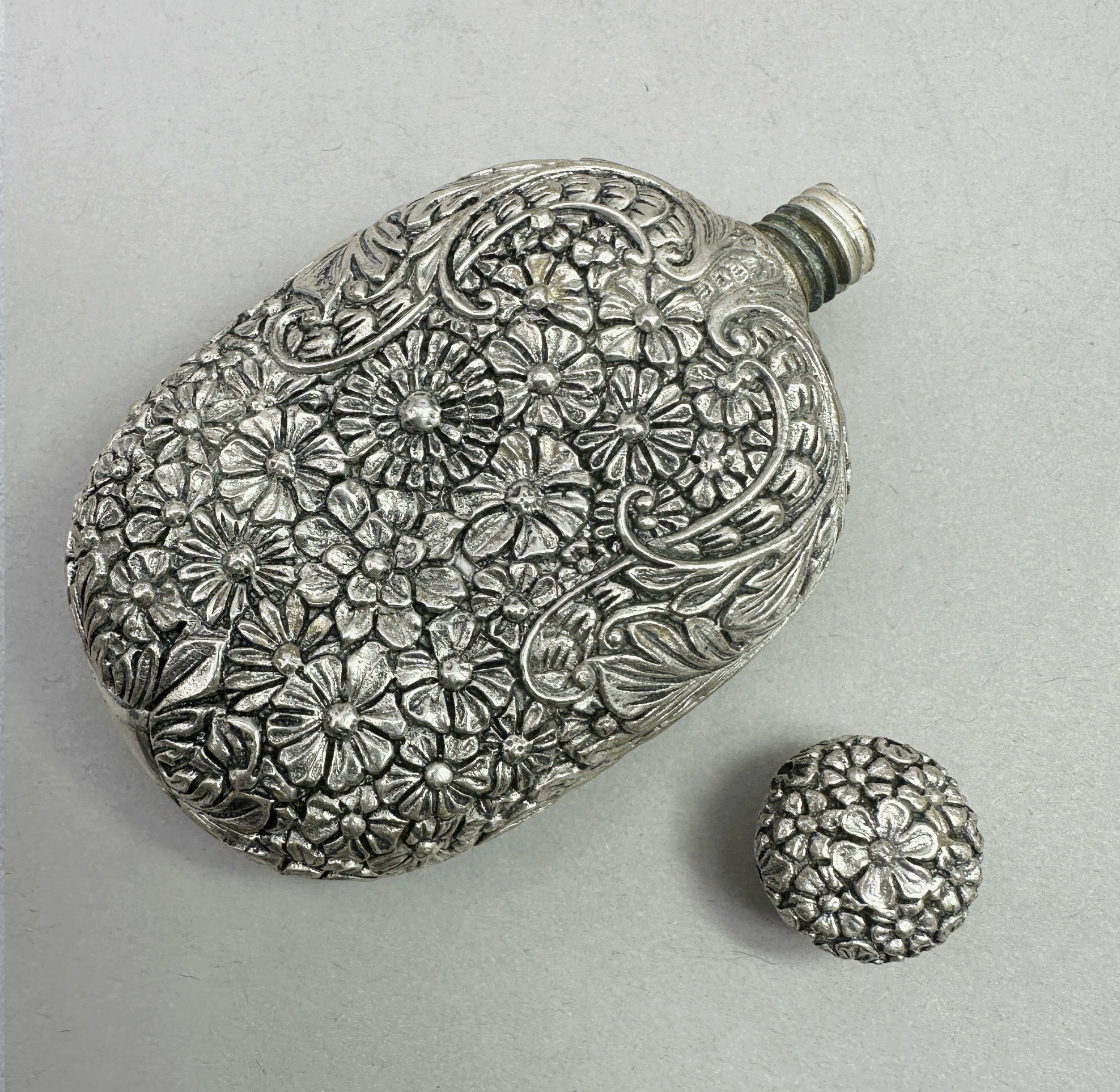
Very fine German silver scent bottle, c1900
Price: £225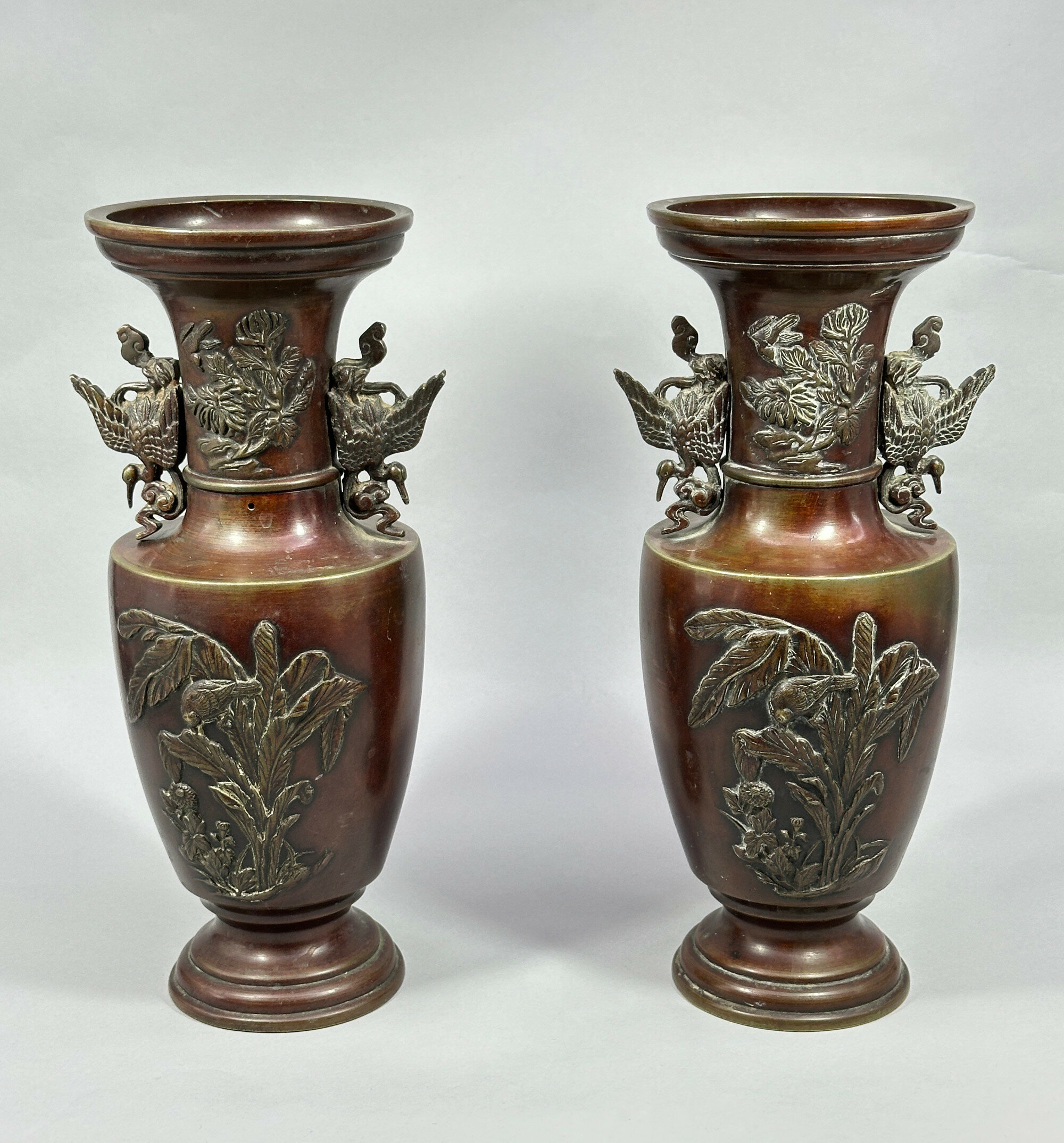
Pair of fine quality Japanese Bronze Vases decorated birds, circa 1880
Price: £220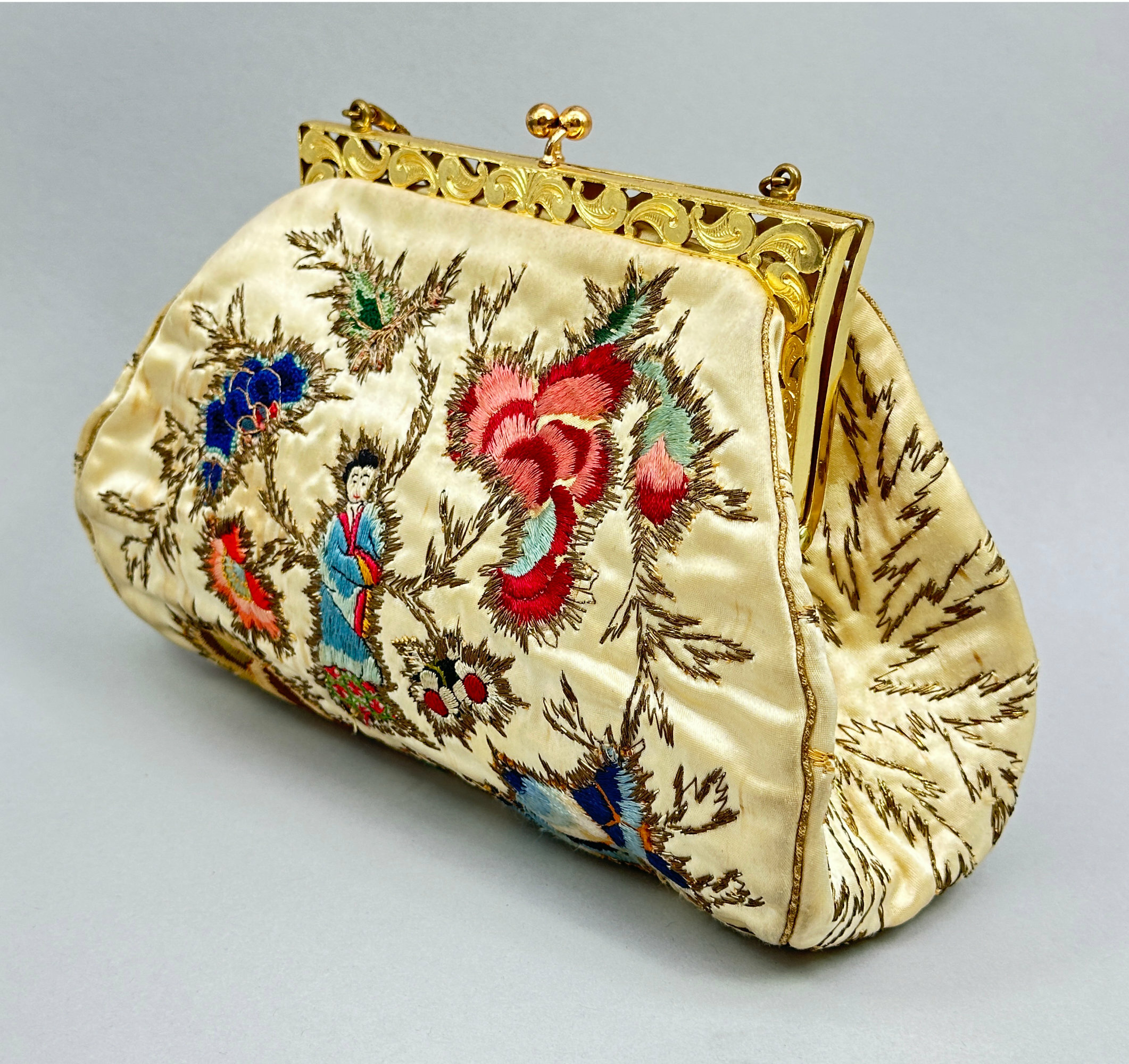
English silk handbag with embroidered Chinoiserie design c1950
Price: £95
Taxco clamper bracelet, attr. to Justo or Jorge Castillo, 1940s
Price: £450Justo and Jorge Castillo come from the Los Castillo workshop. Los Castillo was an influential and ongoing design and manufacturing enterprise established in 1939 by Antonio Castillo and his brothers Justo and Jorge and their cousin Salvador Teran. Los Castillo is known for sterling jewellery and fine pieces in "married metals" combining various metals such as silver, copper and brass. Castillo who arrived in Taxco in 1923, began his long career working for William Spratling at Taller de las Delicias. He married Margot van Voorhies prior to opening Taller Los Castillo bu they were later divorced in 1946. (see The Little Book of Mexican Silver Trade and Hallmarks, 2013)
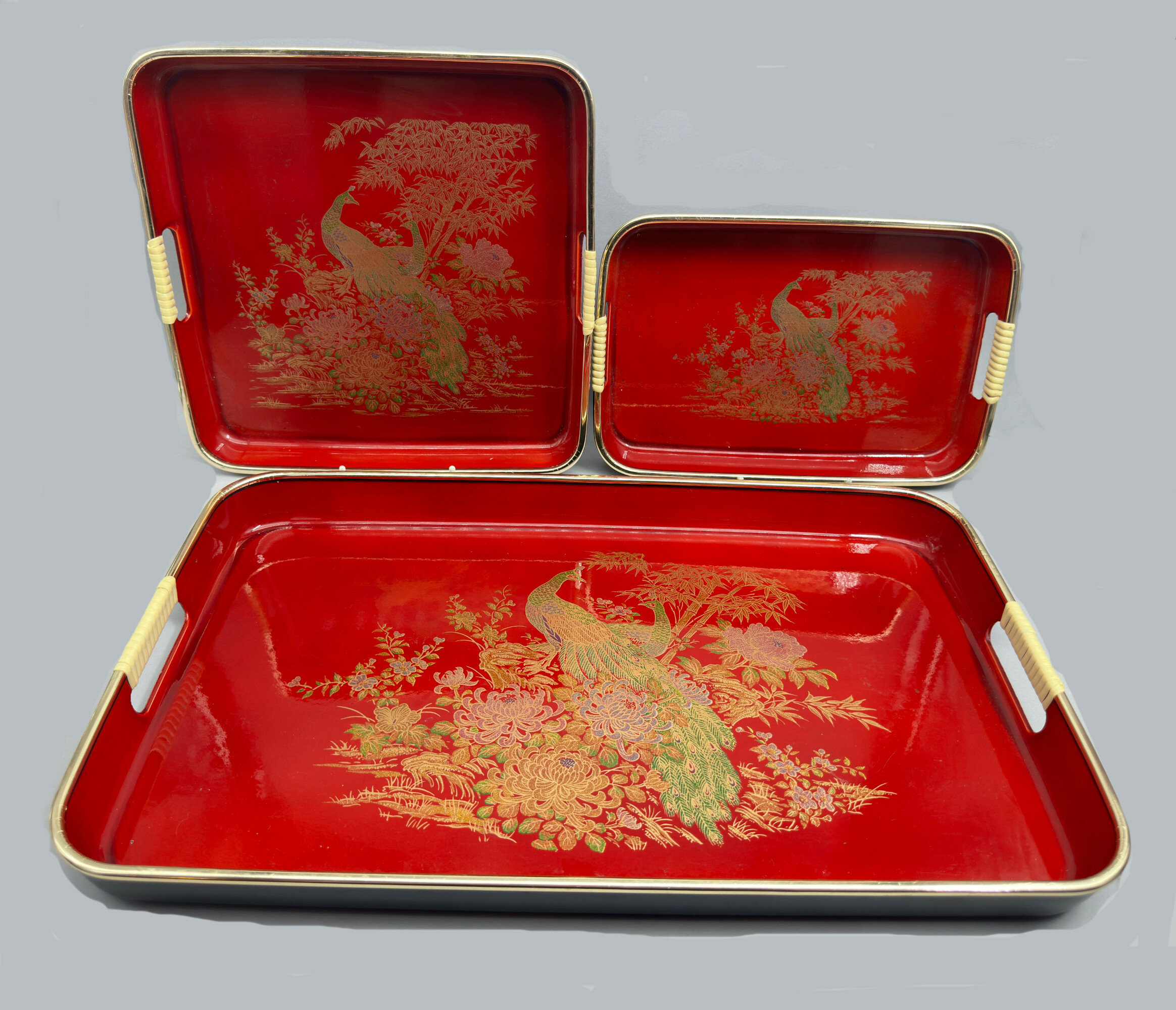
Set of Three Japanese Lacquer Nesting Trays, mid to late C20th
Price: £45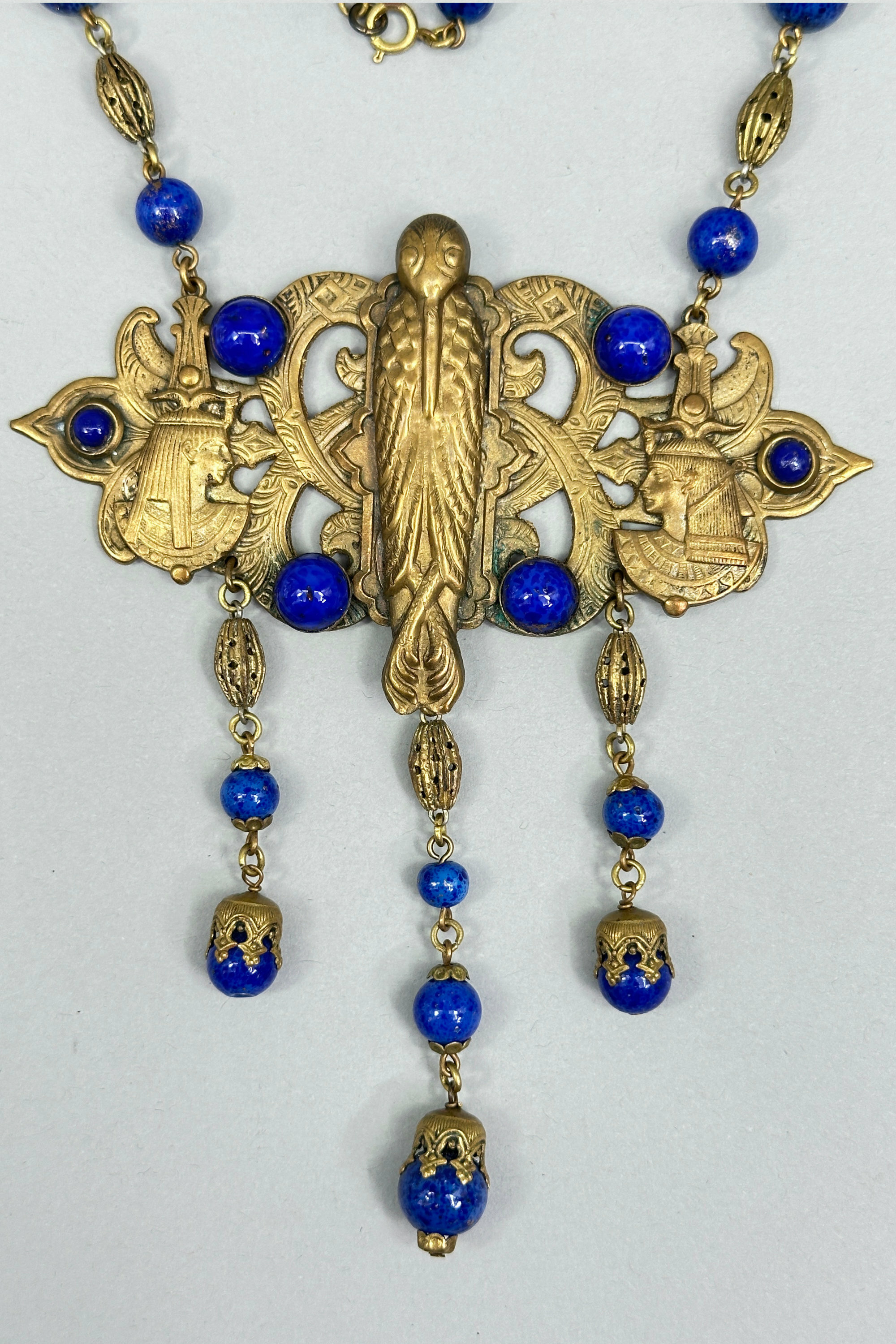
Egyptian Revival statement necklace signed EBE c1930
Price: £110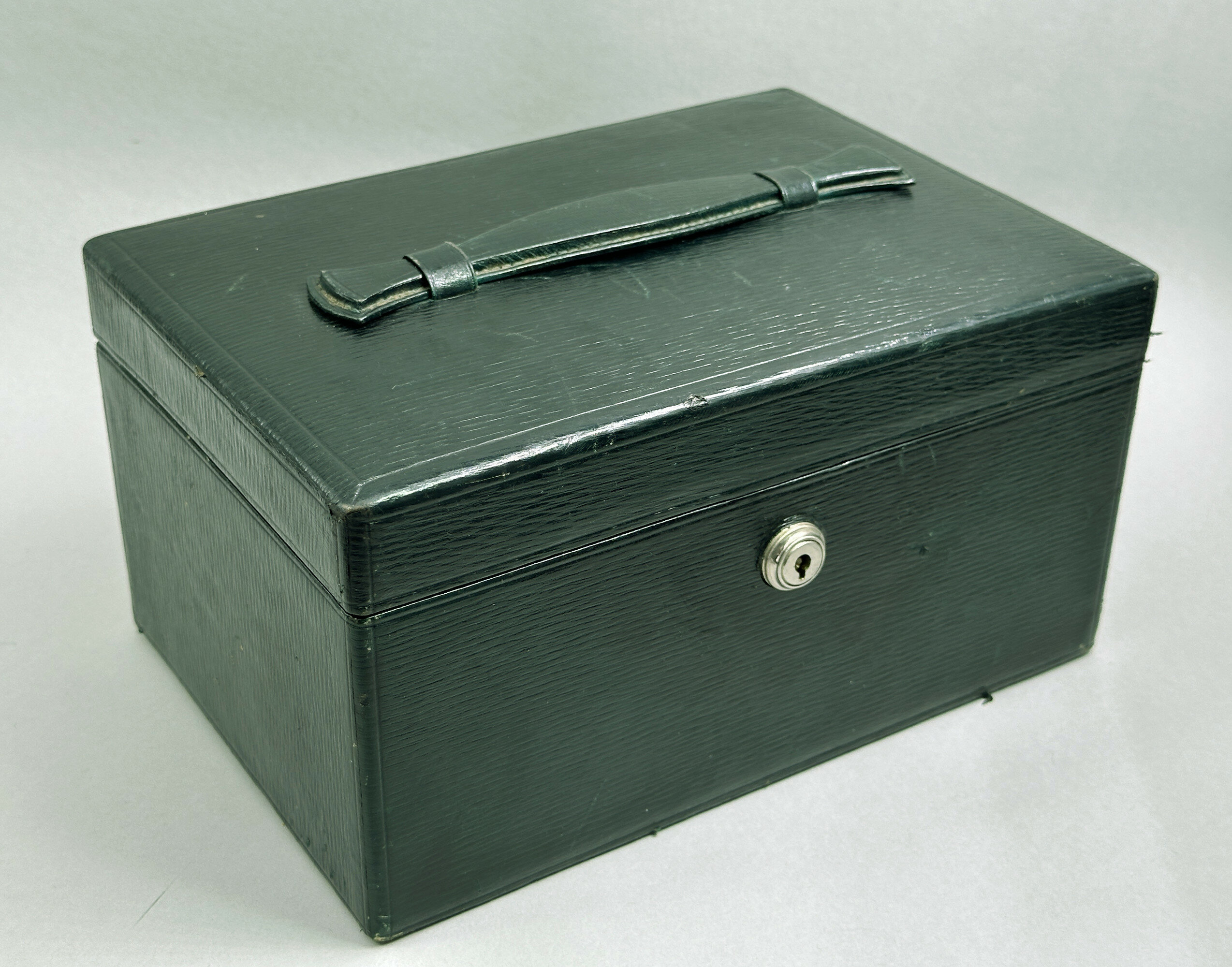
Green Leather Jewellery Box with Bramah Lock, early C20th
Price: £55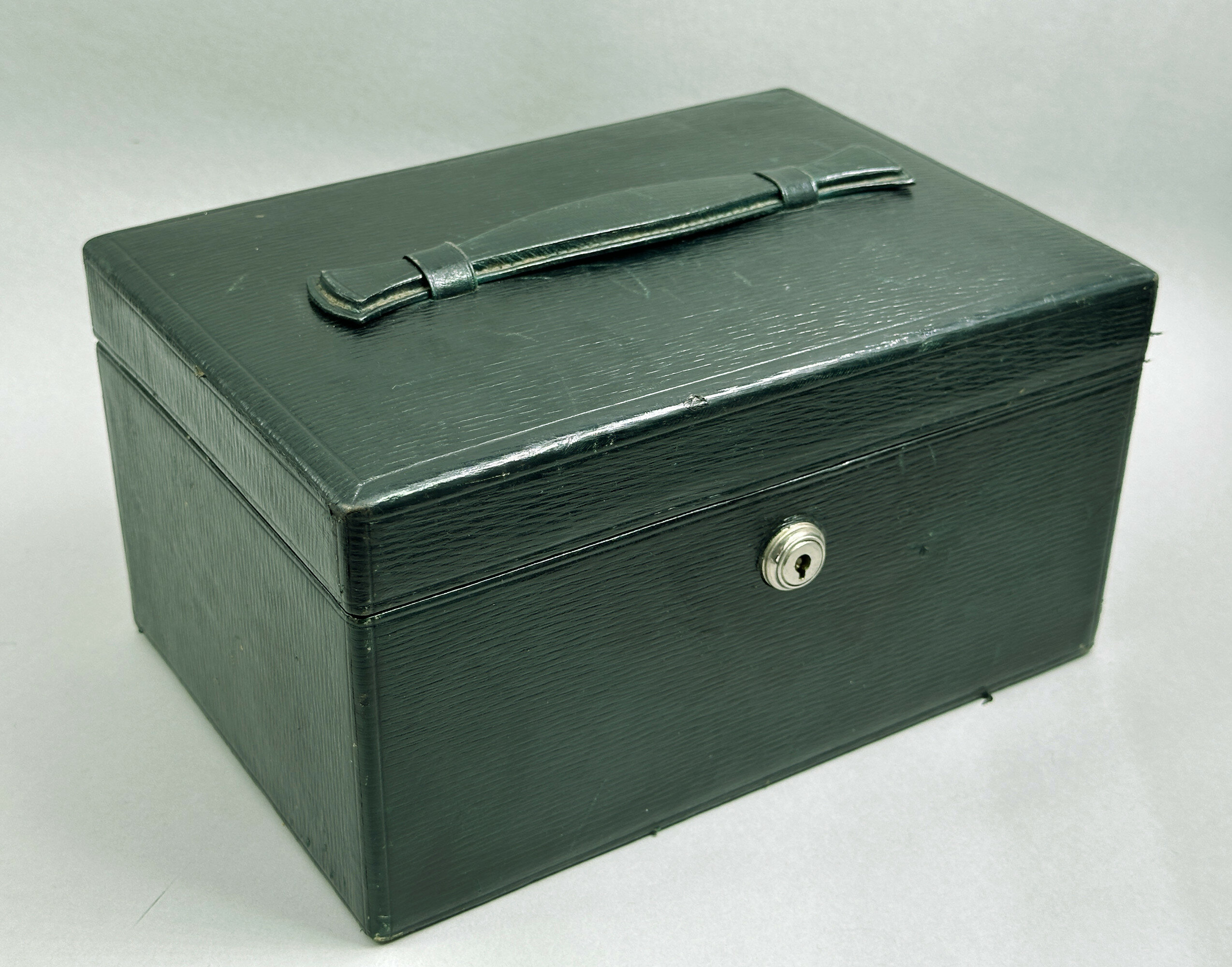
Green Leather Jewellery Box with Bramah Lock, early C20th
Price: £55
Chinese Verre Églomisé Snuff Bottle with landscape scenes, fitted box, C20th
Price: £35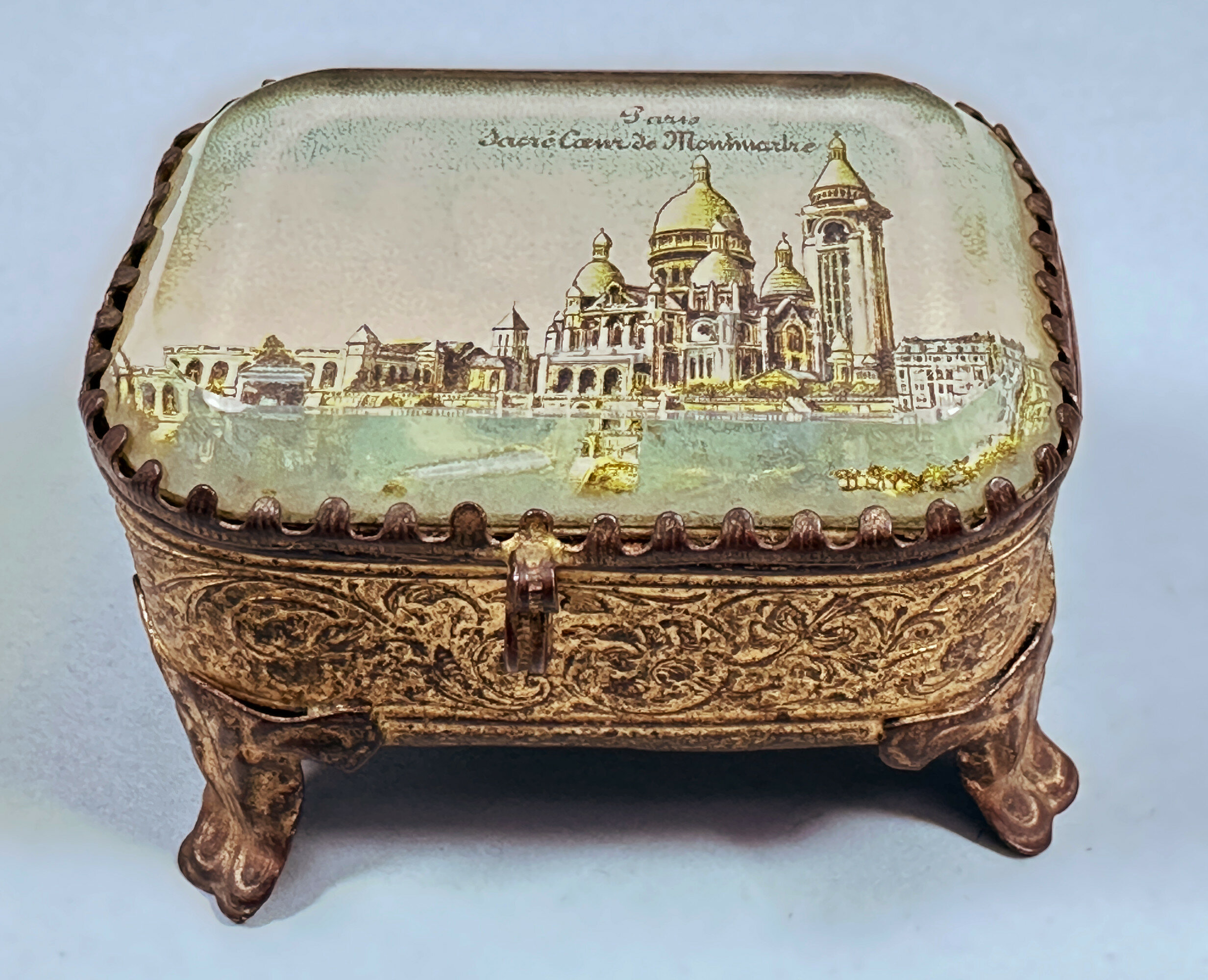
French Souvenir Verre Eglomise Box and Cover, Sacre Coeur de Montmatre, circa 1900
Price: £55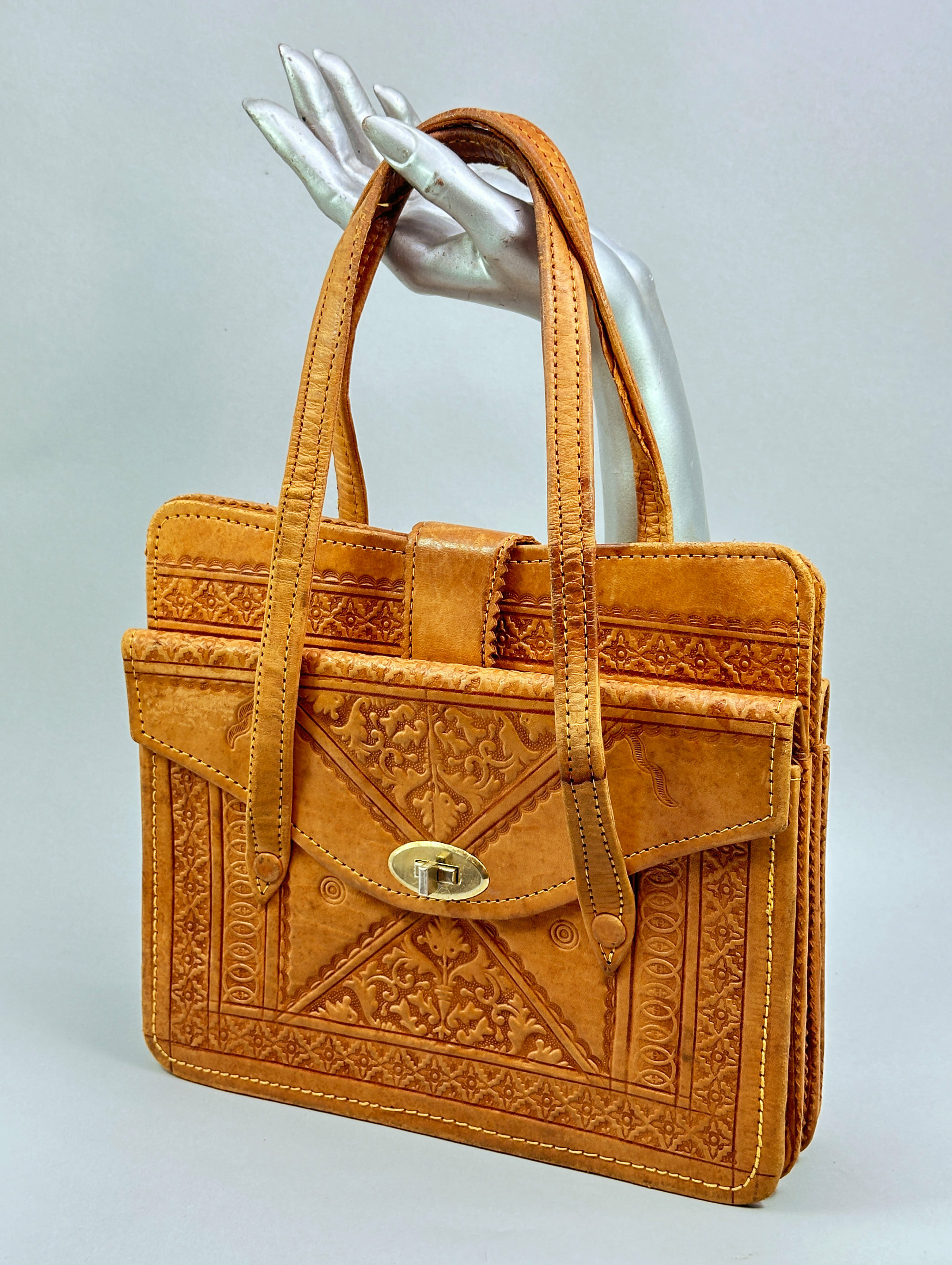
Moroccan tooled leather bag c1960
Price: £65
Taxco grape motif necklace, c1980
Price: £250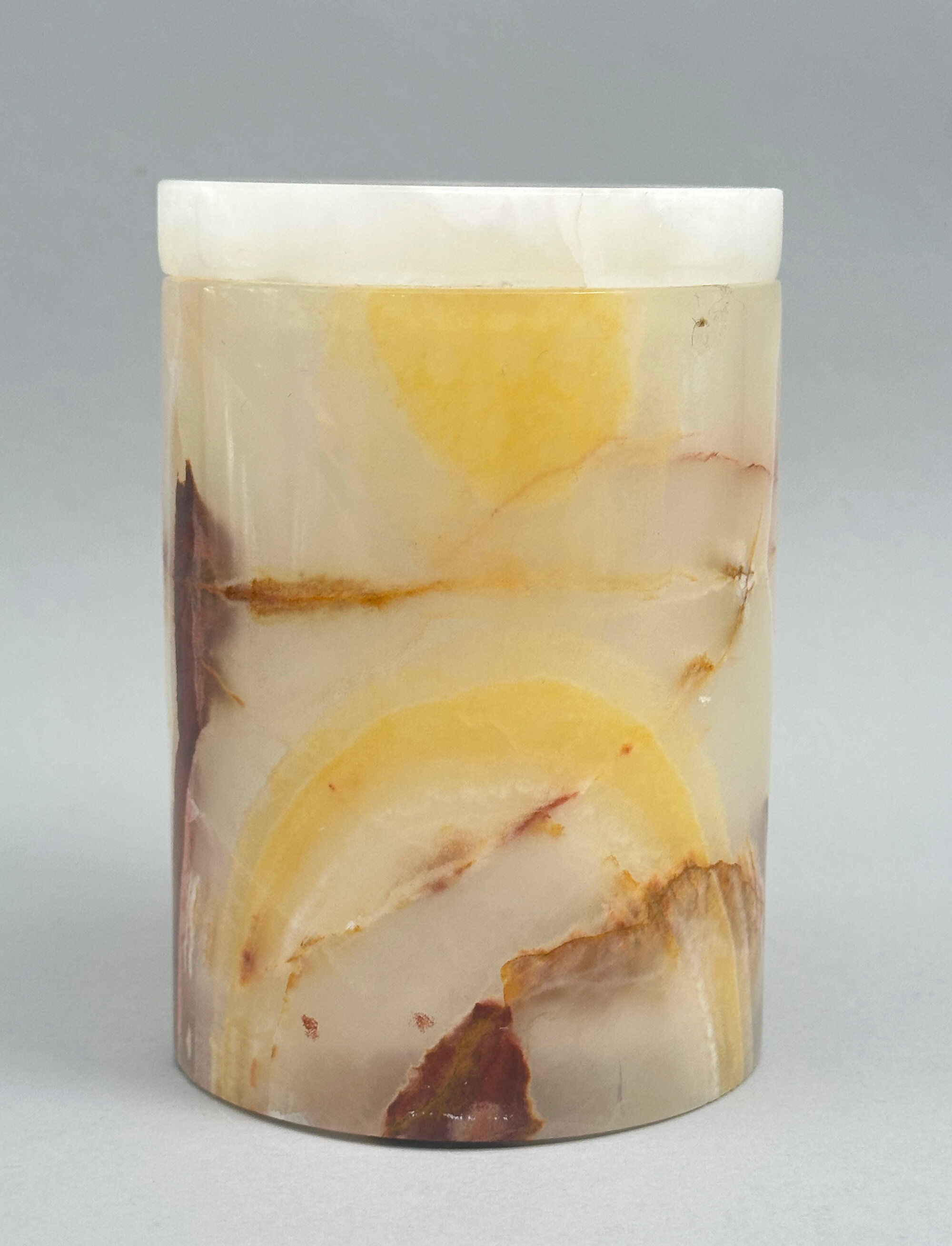
Tubular Onyx Box and Cover, 1960s
Price: £35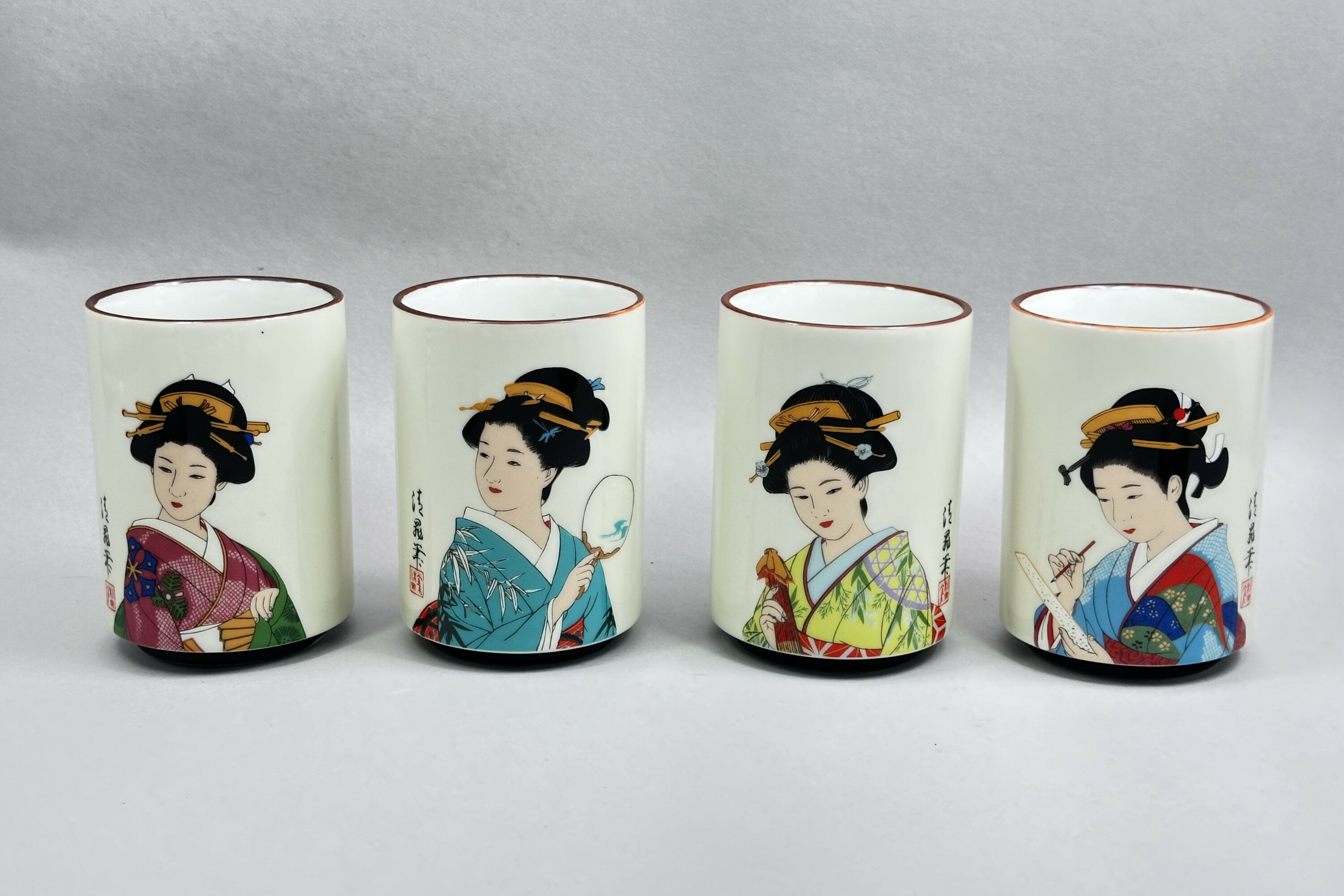
Set of Four Japanese Ceramic Beakers decorated Geisha, late C20th
Price: £40
Pair of Japanese Arita Shallow Bowls circa 1880
Price: £75The town of Arita in the former Hizen Province, northwestern Kyūshū island, was a major centre for the production of porcelains in Japan. Best known for blue and white pieces it also produced polychrome wares as well, including the familiar imari colourings. While similar to Imari, the wider palette of colours used here is usually termed ‘Arita’ and the decorative appeal of the style is clear. These bowls probably come from an original set of five and their quality is much above average. Dating is to the Meiji era (1868 - 1912) probably around 1880.
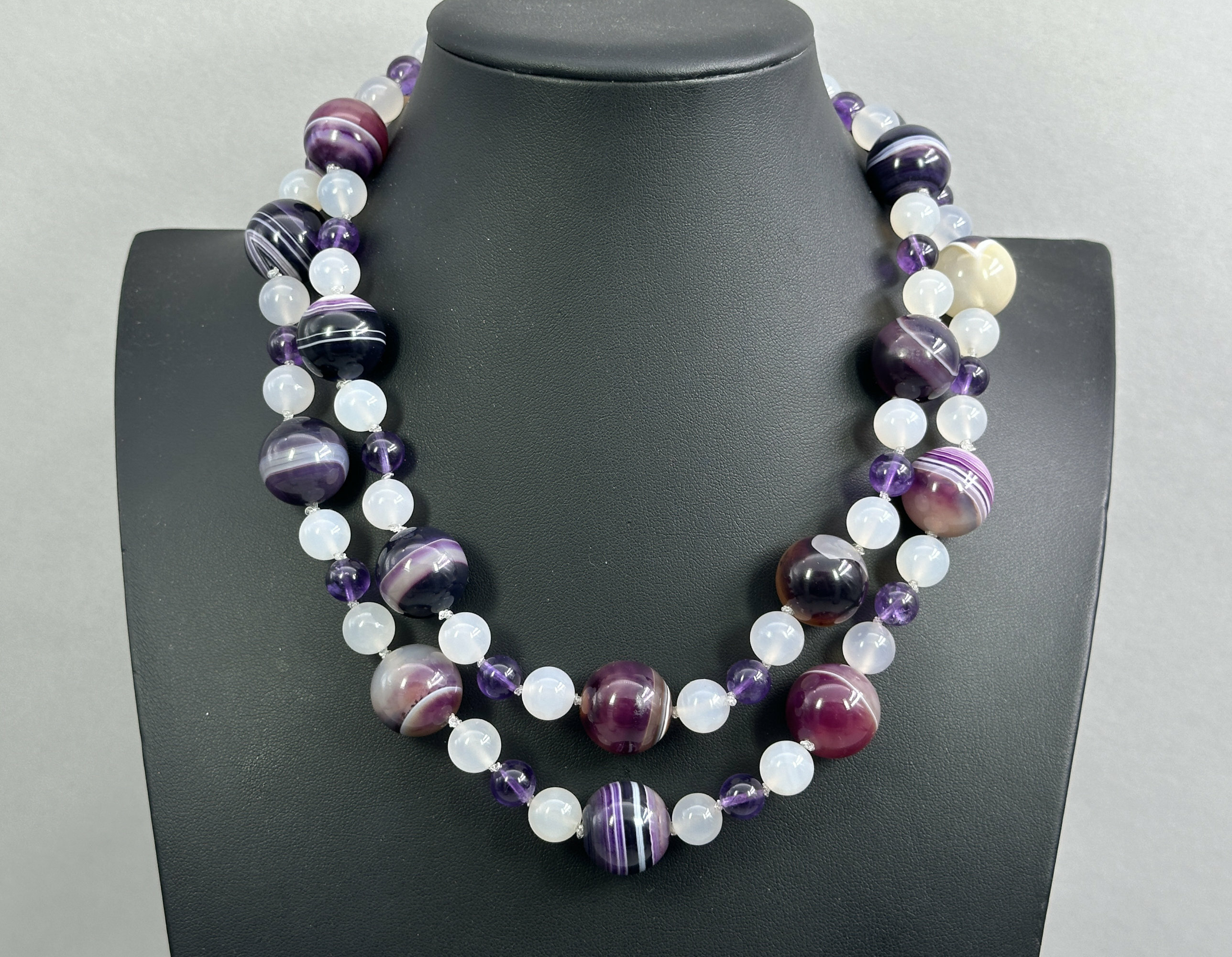
Scottish Agate beads with purple banding c1920
Price: £125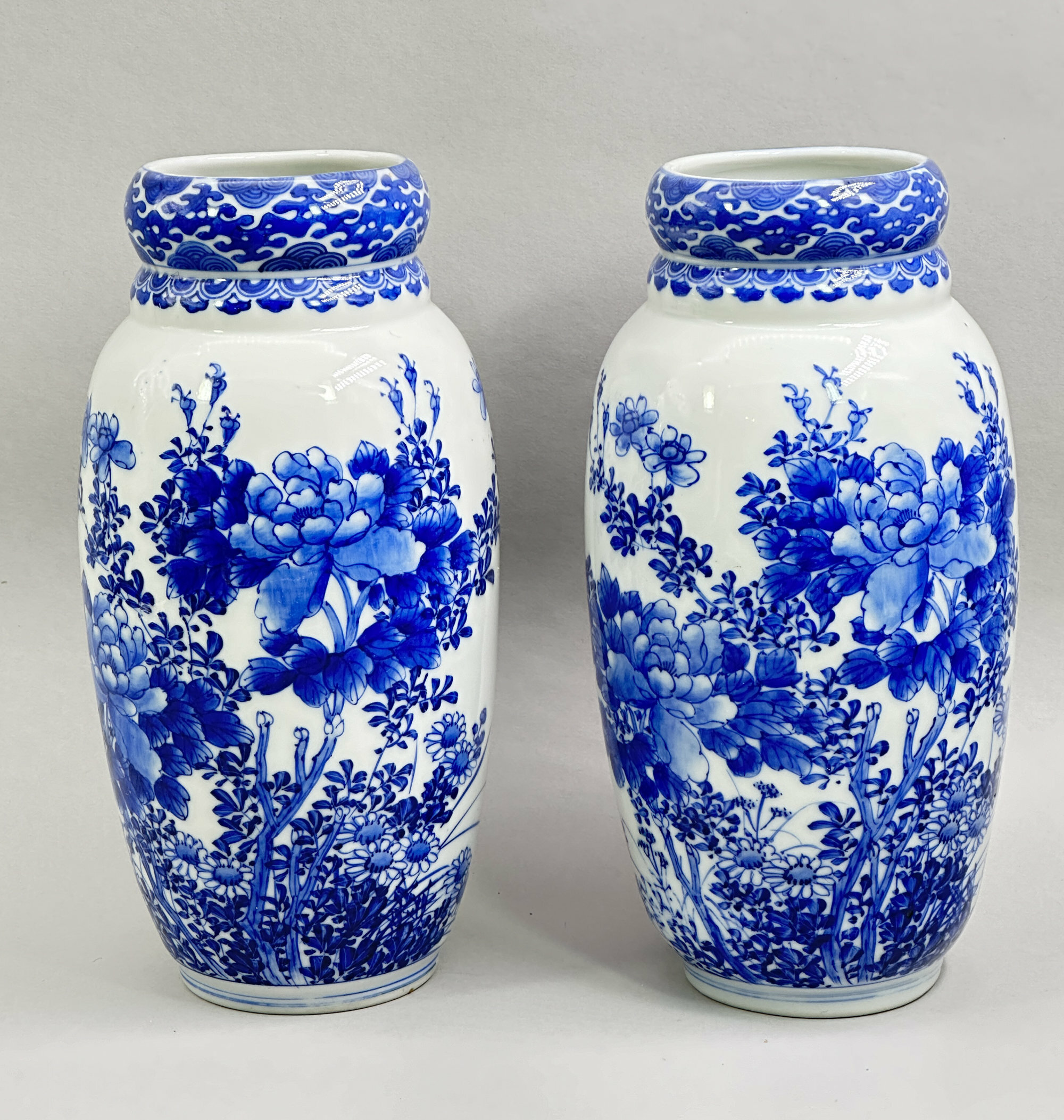
Pair of Japanese Blue and White Seto Ware Vases, early C20th
Price: £240The finely drawn brushwork here and the distinctive bright blue are characteristics of pieces made at Seto in Japan in the 19th and early 20th centuries. The city of Seto is located in the Aichi Prefecture and was the location of one of the Six Ancient Kilns of Japan. Pottery was produced there from the 13th century onwards. The kilns took part in the export of decorative wares to the West from the second half of the nineteenth century onwards producing a wide variety of forms, in particular pairs of vases, but with a speciality in flat plaques and table tops, for which they gained something of a monopoly. Their pieces are usually marked, to include the characters for Seto, and this pair of vases may have originally been signed themselves but with the marks partially obliterated in the firing process. The quality here matches anything else produced by the factories but the light weight and thinly potted body suggests a dating to the early 20th century rather than before, probably during the Taisho period (1912-1926). Nevertheless the skill in craftsmanship is obvious and contributes to a highly attractive pair of ornaments for a contemporary interior.

French Souvenir Verre Eglomise Box and Cover, Sacre Coeur de Montmatre, circa 1900
Price: £55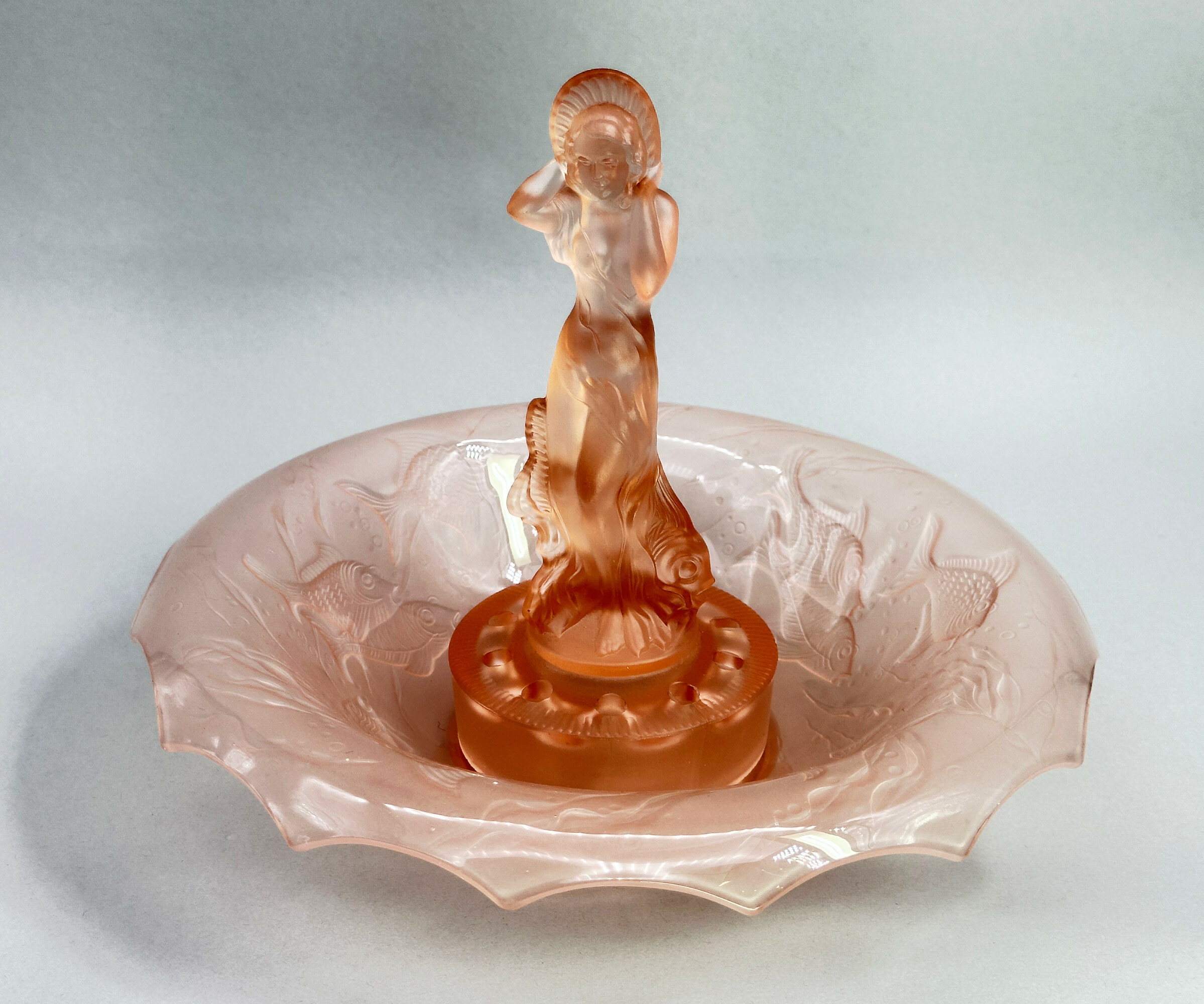
Pink Glass Centrepiece Set, Arabella, Walter and Sohne, 1930s
Price: £55The influence of Art Deco style of this piece is clear and it does indeed date to the 1930s. The model, termed ‘Arabella’ can apparently be seen in the 1934 catalogue of the German glass manufacturers Walther and Sohne, founded by August Walther in 1888 at Ottendorf-Akrilla near Dresden. In the 1930s the firm was famous for its Art Deco designs and also produced a version of ‘cloud glass’ which at one time was held to be exclusive to the English manufacturer Davidson. But some of the English glass makers also drew on their German rival’s work such that Walther and Sohne patented some of their designs in the UK in 1937, presumably to protect their work. This centrepiece set is a classic example of Walther and Sohne’s pre war productions and a distinctive example of Art Deco glassware.

Native American turquoise cuff bracelet, 1960s
Price: £225
Large Art Nouveau enamel and silver brooch c1910
Price: £150
West German Scheurich Vase, Market Scene Pattern, 225-46, 1970s
Price: £150In 1954, Alois Scheurich founded the Scheurich Keramik factory, having been in partnership before then in the firm ‘Scheurich and Greulich’ (S&G) since 1927. While founded later than many of its competitors, Scheurich grew to become the principal exporter of West German ceramics through until the 1980s and beyond, making vases in a wide variety of shapes and designs. Made in the 1970s, this vase has a retrospective feel recalling Soviet designs from the 1920s and 1930s. The figures seem to be grouped in a stylised market scene with various pitchers containing perhaps wine or oil. The symbolism is unclear unless it refers to the vase itself which could be regarded as recalling the form of the Greek amphora. But whatever the ‘meaning’ we have an imposing and unusual decorative item here which stands rather apart from many of the other pieces produced by its manufacturer.
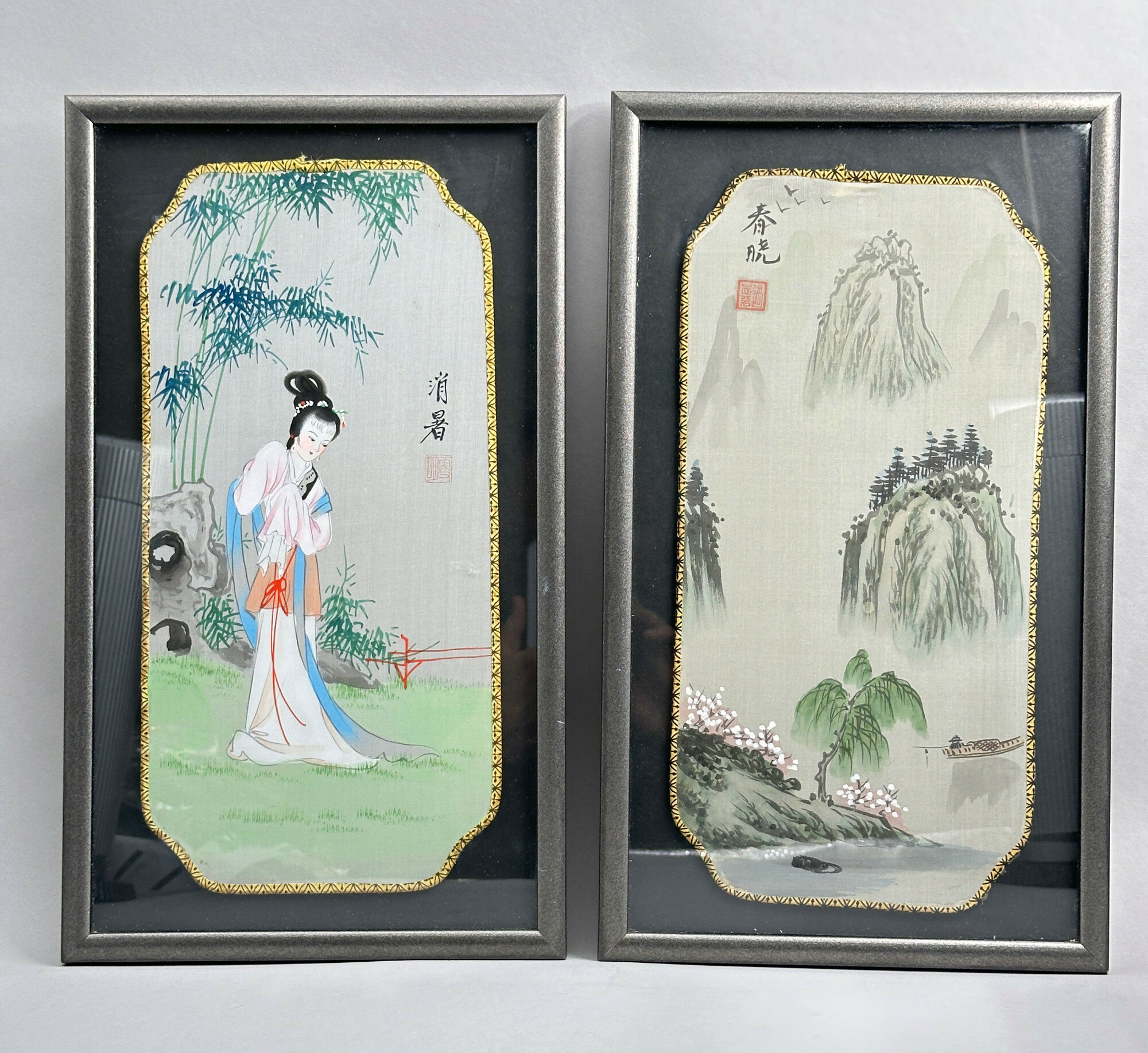
Pair of Chinese Paintings on Silk, framed, C20th
Price: £45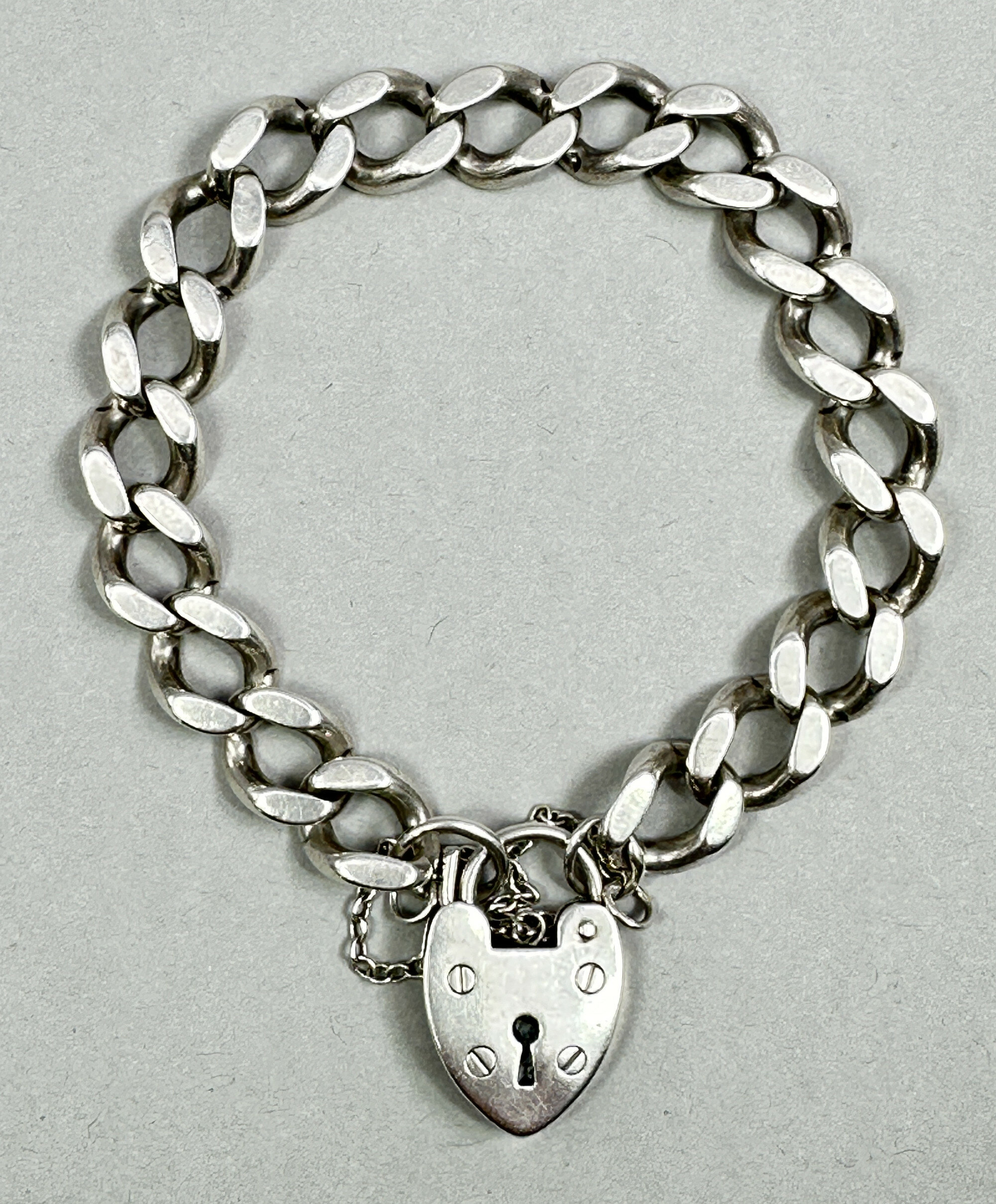
Curb link pad lock bracelet, London 1977
Price: £85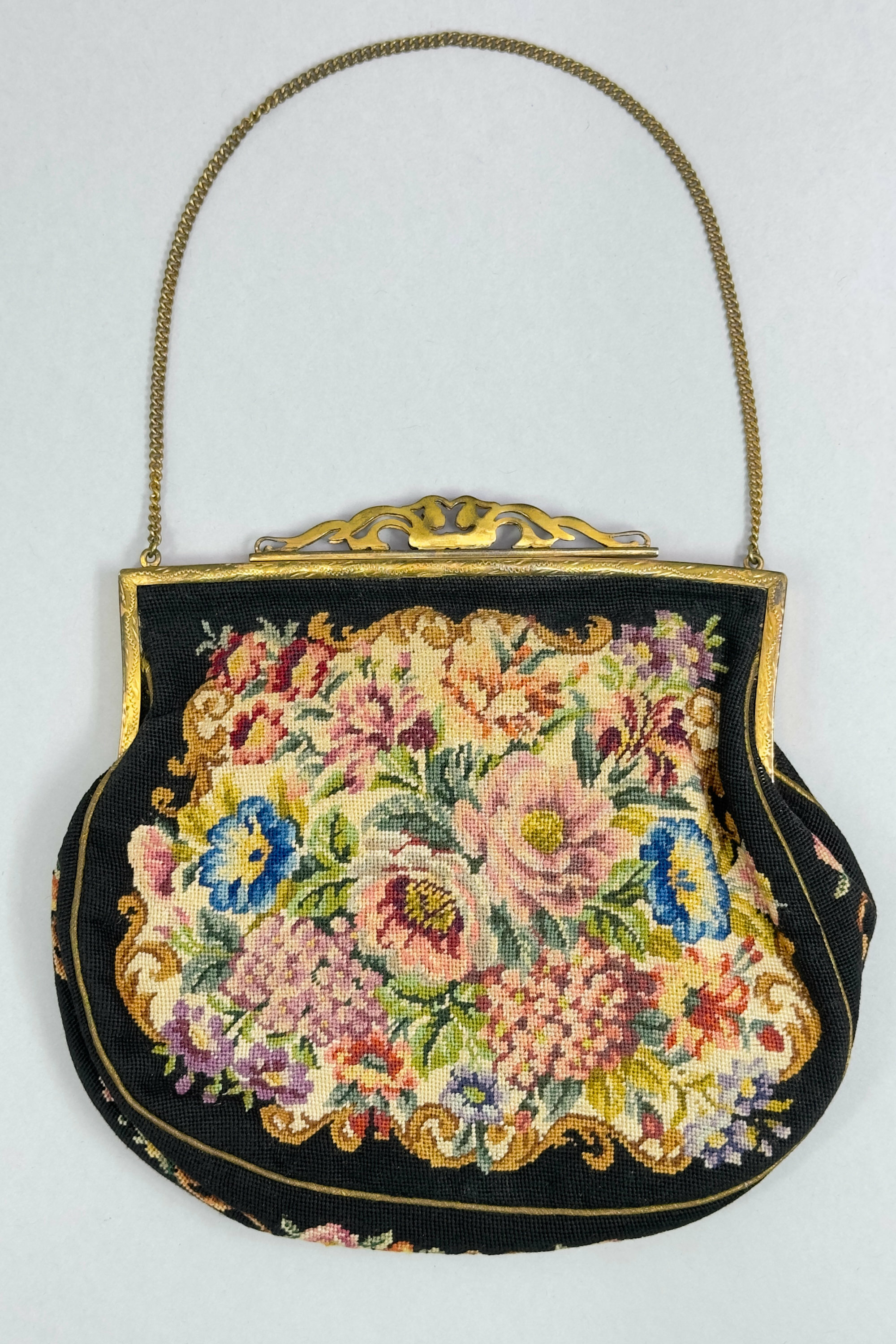
Vintage Petit Point Tapestry Bag, Austria, 1920s
Price: £15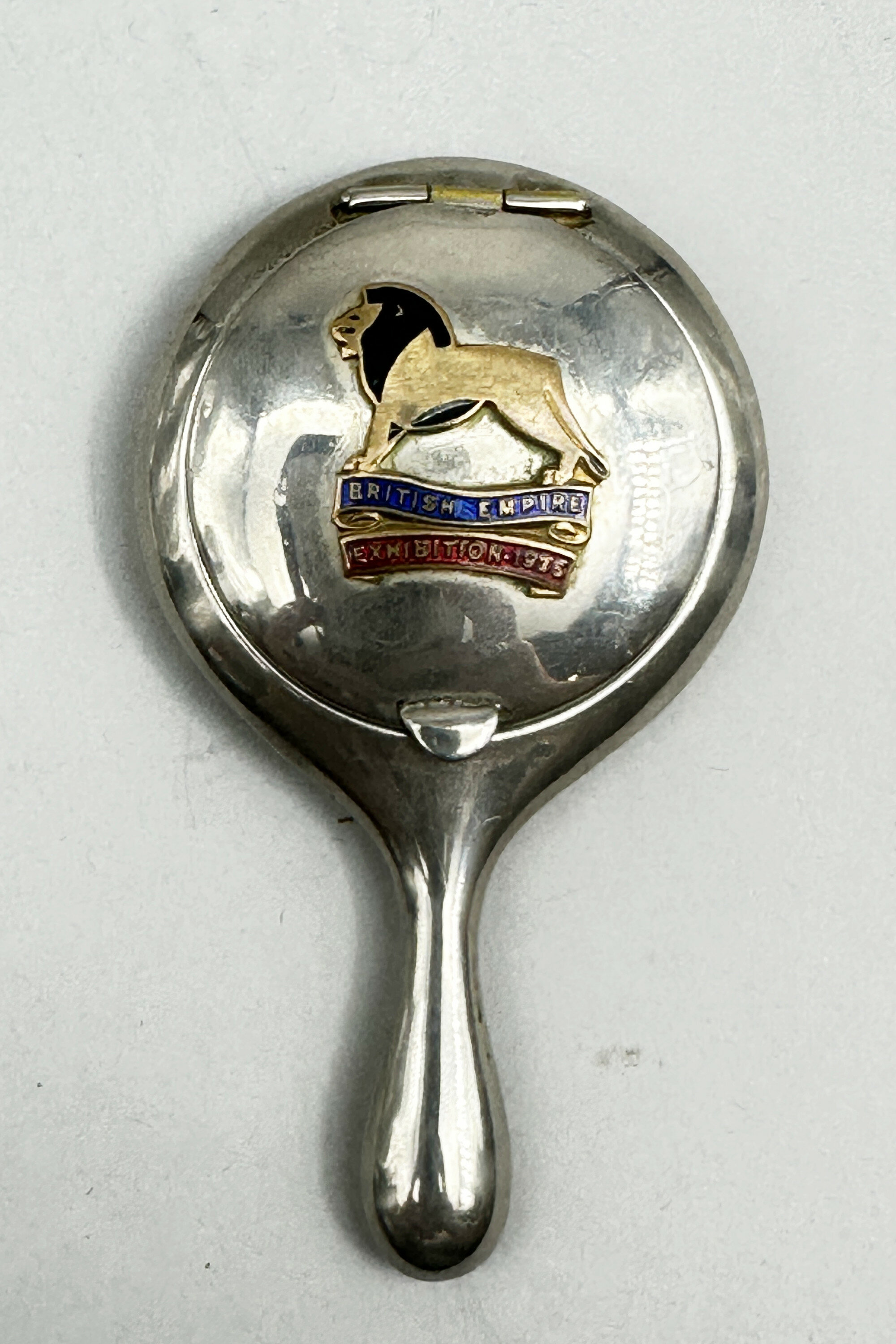
Powder Compact, British Empire Exhibition (1924-1925), dated 1925
Price: £45Souvenirs and medals were produced, amongst which were silver plated powder compacts as here. The round container for the powder has a hinged lid revealing the powder well below, originally fitted with a mauve ribbon tasseled powder puff, and a mirror above. On the surface of the lid, which has a tab for lifting, is a stylised brass lion, a symbol of the British Empire, vitreous enameled in black, red and blue with the wording ‘British Empire Exhibition 1925 ’ There is a short rounded handle and the back has an engraved mark ‘Rd [registered] 689177’ for the patent number. While many were doubtless made (and there is another version with a more slender handle, with a ring at the end, and the background colourings of the lettering reversed) few of these compacts seem to have survived making this a desirable addition to a collection of British memorabilia.
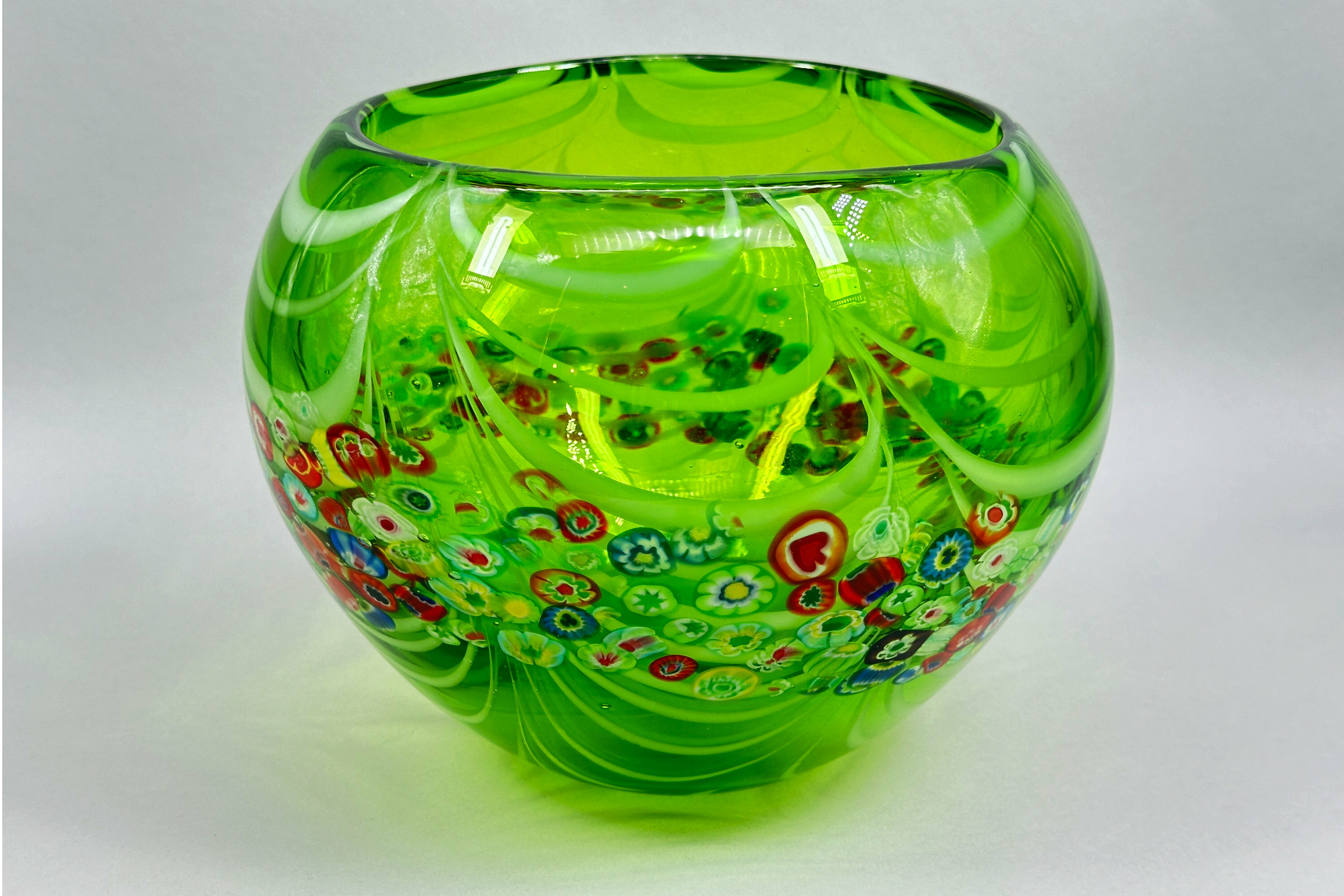
Green Murano Millefiori Latticino Glass Bowl, 1960s
Price: £150
Islamic silver choker necklace 1920s
Price: £120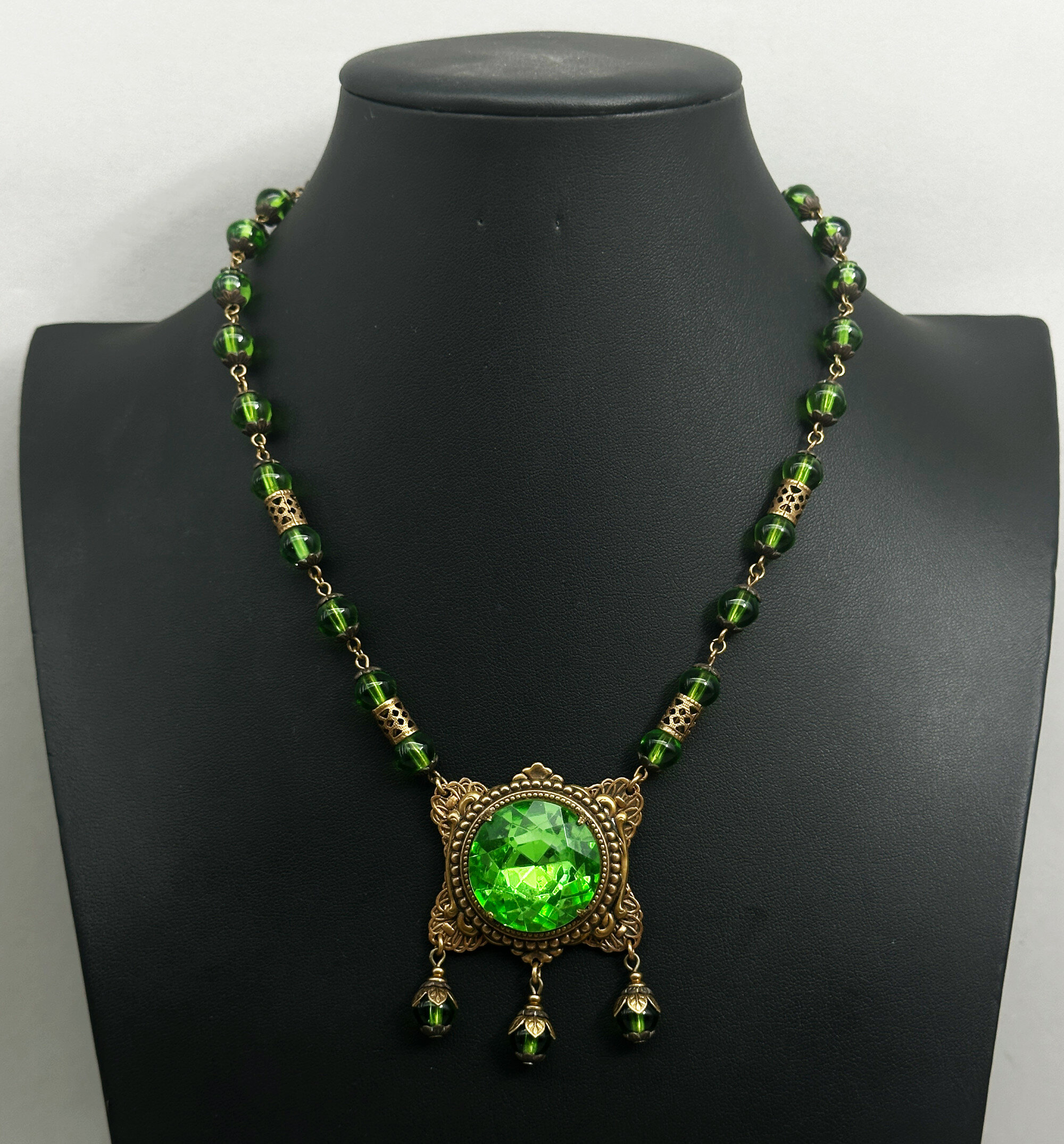
Art Deco necklace with large green glass pendant 1930s
Price: £85
Japanese Noh Figure Doll of a Lady, Showa Period (1926-1989)
Price: £55Dolls such as these were made for display, sometimes at the special ‘Doll’s Day’ or ‘Girls Day’ festival held annually on the third of March and termed ‘Hinamatsuri’. The elaborate dress is sometimes known as ‘Hagoromo’ (‘feathered’) and the mask with its fixed expression derives from the well known ‘Noh theatre’, a major form of Japanese musical drama created in the fourteenth century which combines dance, music and song and is still performed today. The actors are all male and play the female roles wearing a lady’s mask.
The craftsmanship of this piece is self evident and it was most likely made in the second half of the C20th. It can stand equally well on its own or as part of a wider collection and would be a desirable acquisition either way.
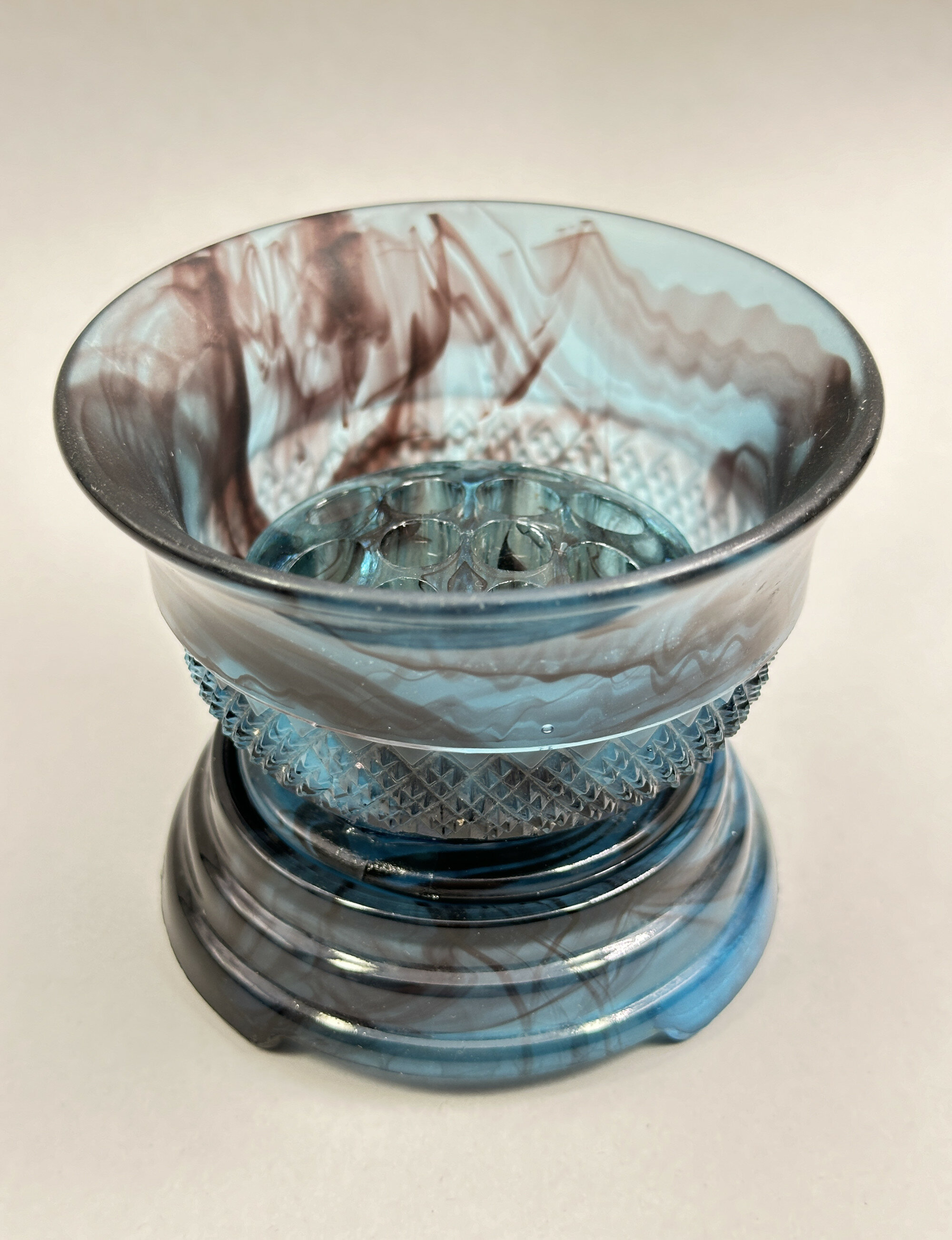
Davidson Glass Topaz Briar Table Centrepiece, 1930s
Price: £45George Davidson founded the Teams Flint Glass Works in 1867, which later became known as George Davidson & Co. In the 1880s the company began producing pressed glass tableware in a variety of shapes and by the 1920s their designs began to reflect the new Art Deco trends. The firm continued production until the 1980s, closing in 1987. Some of their catalogues still exist and one from the early 1930s shows a piece very similar to this one (see image 11). The colour is known as ‘Topaz Briar’ and the swirling effects resemble other pieces in their ‘cloud glass’ range, a pattern for which the firm was famous.
The colourings and small size of this piece make it an unusual find amongst the Davidson wares which can be seen today and the presence of all three elements (perfect and complete) make it a desirable addition to a collection of twentieth century pressed glass.
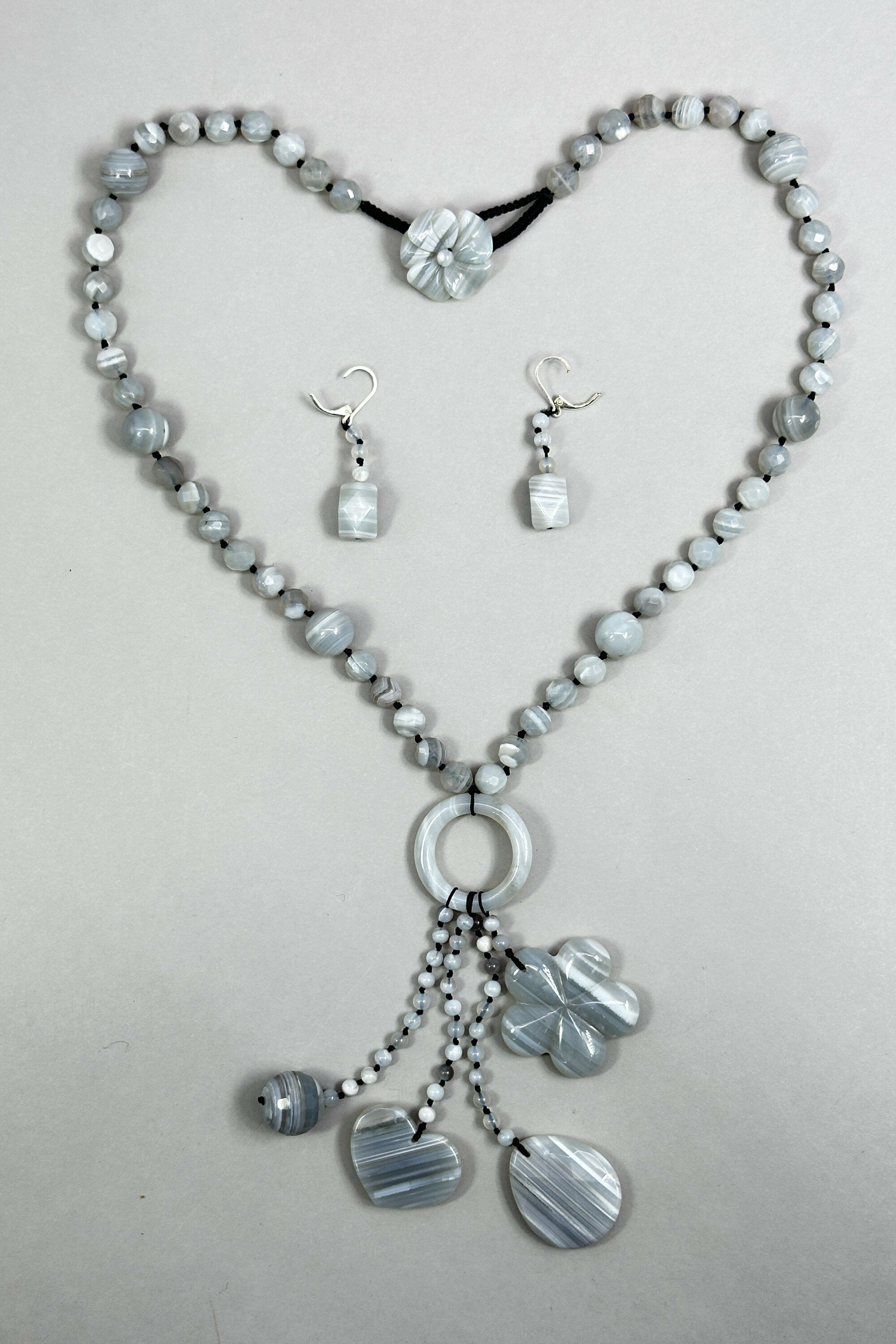
Chinese lace agate earrings and necklace suite
Price: £75
Chinoiserie necklace with peking glass plaques c1960
Price: £45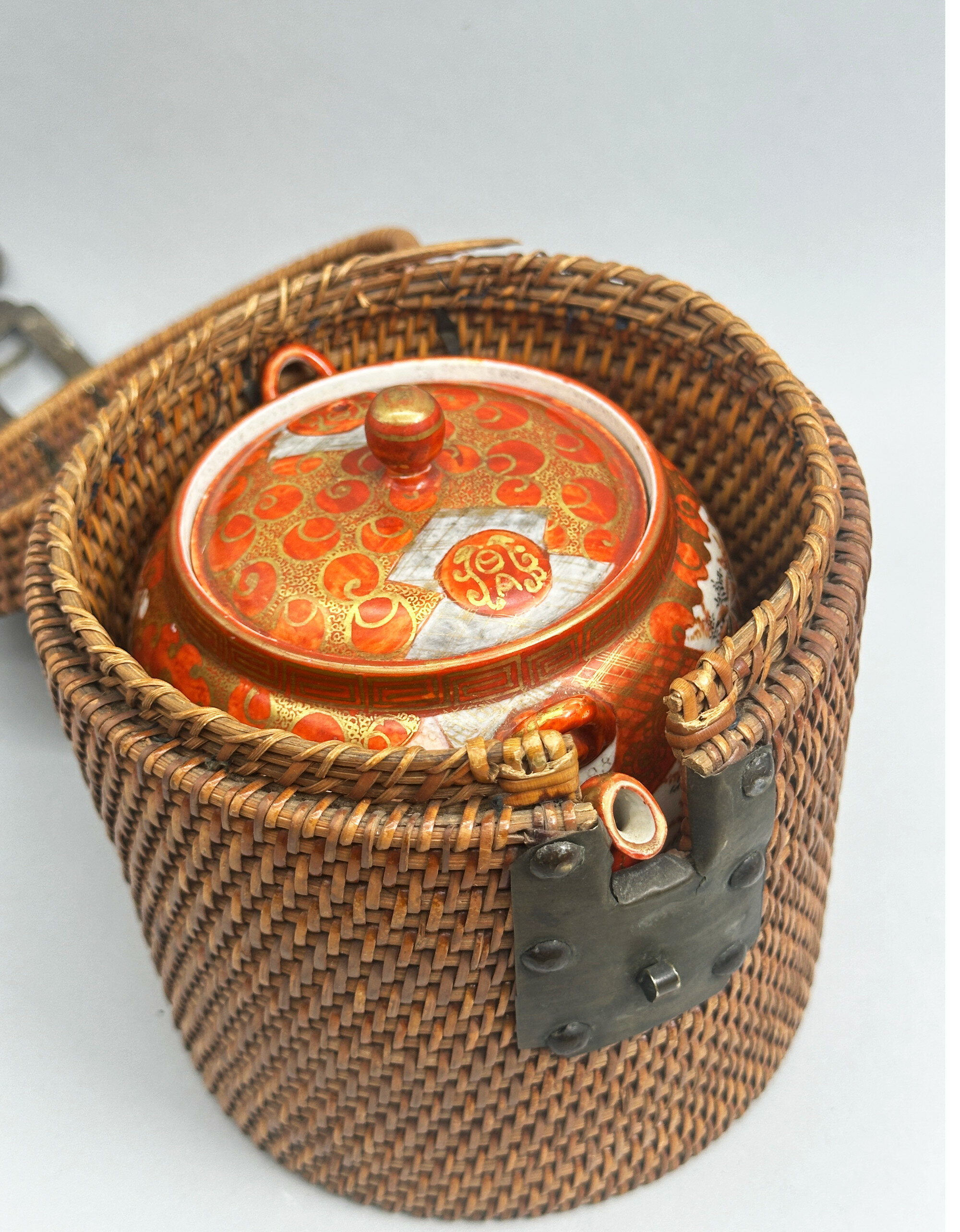
Japanese Kutani Teapot in a carrying Basket, circa 1900
Price: £45Kutani (the word means 'nine valleys') porcelain was made at various factories in the former Kaga province of Japan. The earliest pieces were in a completely different style employing a palette of colours emphasising green, the so called 'Ko Kutani'. Production of this ceased around 1730, and manufacturing was not revived until the early nineteenth century when the more familiar colourings of iron red and gold were introduced. Vases, bowls and plaques are found in this style but also teapots of which this is a typical example. The decoration is of birds and flowers on a faintly craquelure glaze ground and the lid has a complementary ‘brocade pattern’ design. The base has a two character mark reading ‘ku’ ‘tani’ as is often found. The basket is of tightly woven wicker with the metal fitments as described and is probably Chinese in common with many similar examples, although the Japanese did, of course, have a basket weaving tradition of their own. Slight damage means that the ensemble has to be of decorative value rather than practical use but it remains an interesting and entertaining souvenir item from the orient.
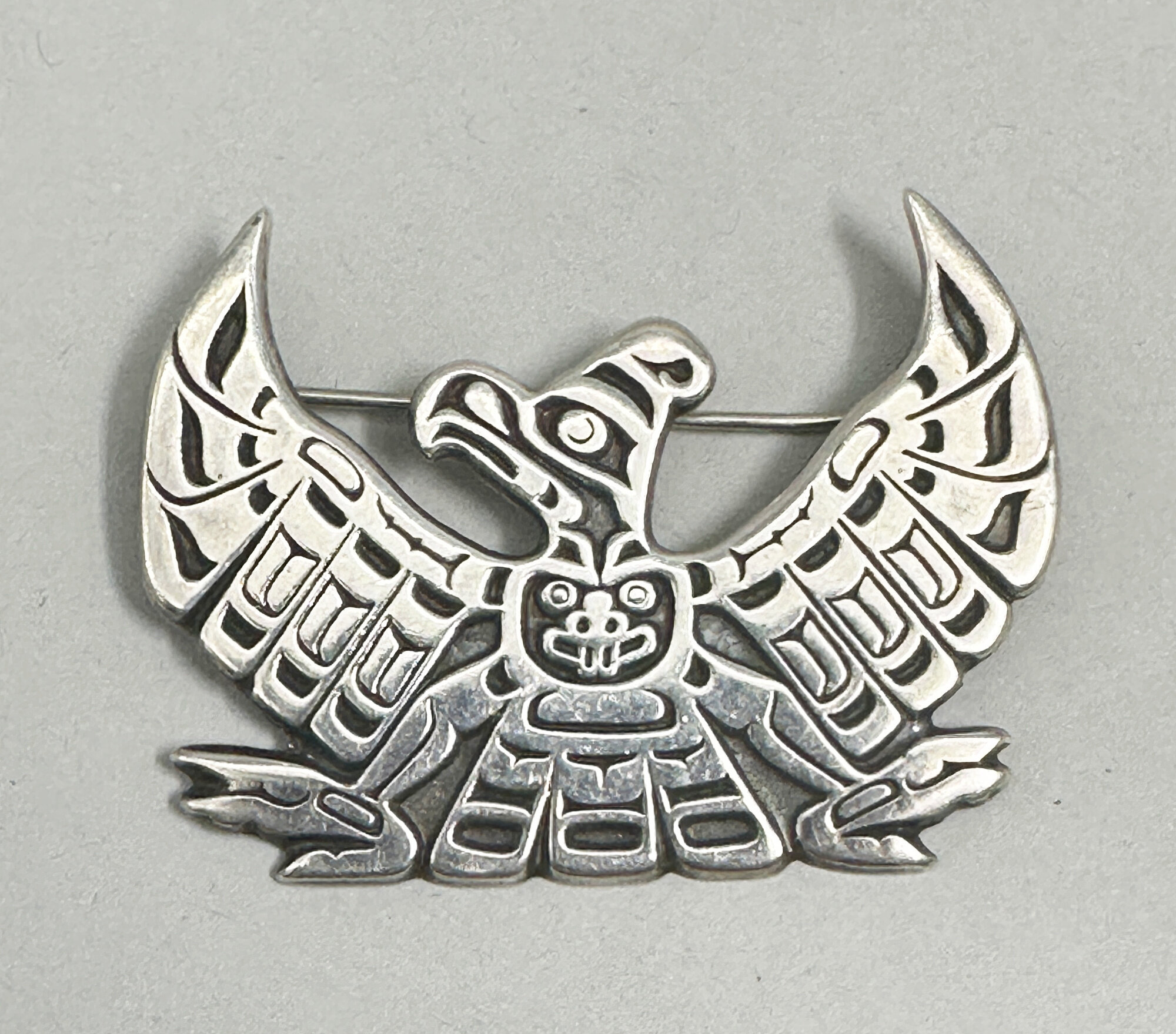
Hopi Thunderbird brooch 1960s
Price: £45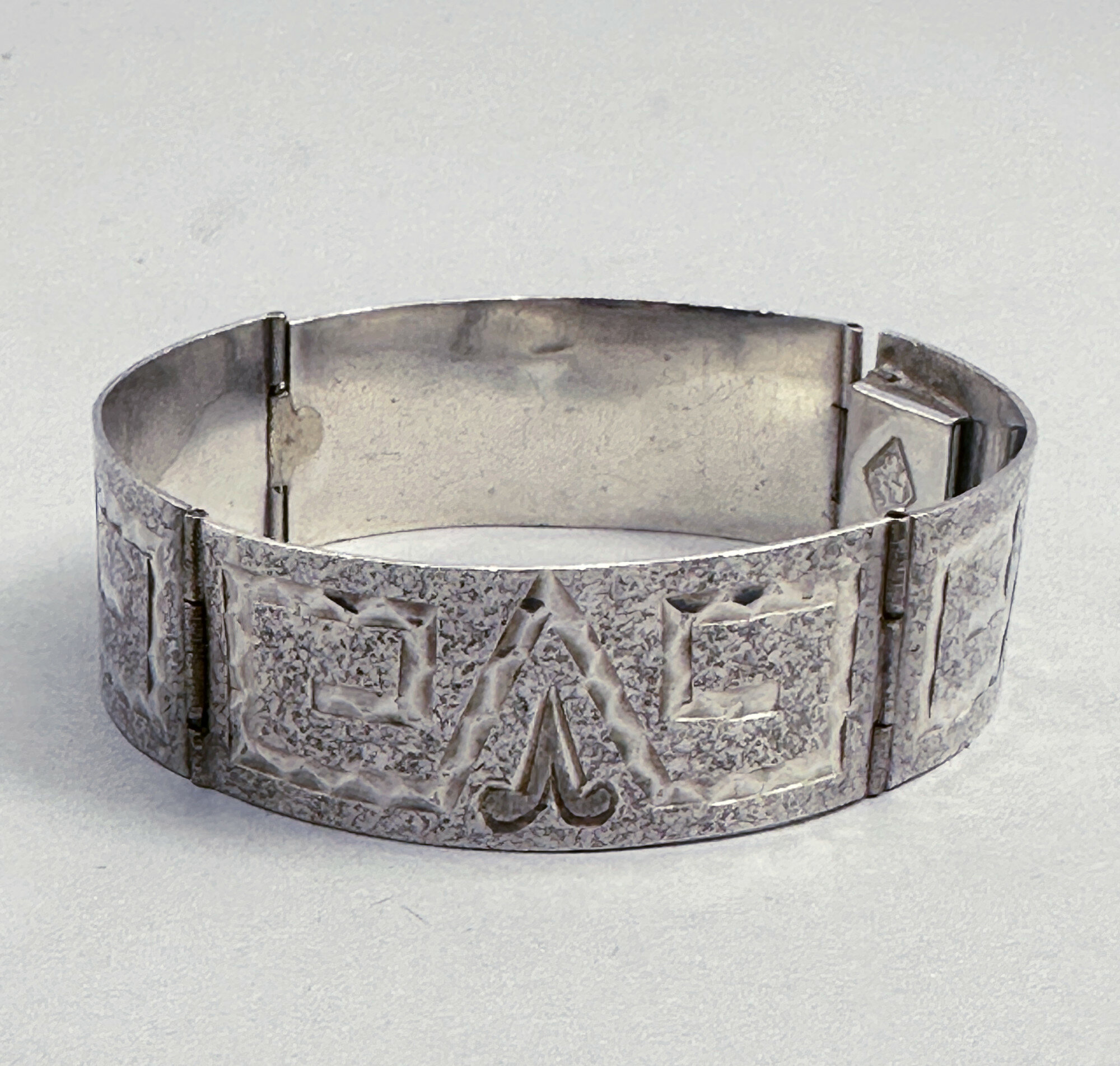
Mexican Silver Bracelet with Aztec Designs, Taxco, 1950s
Price: £65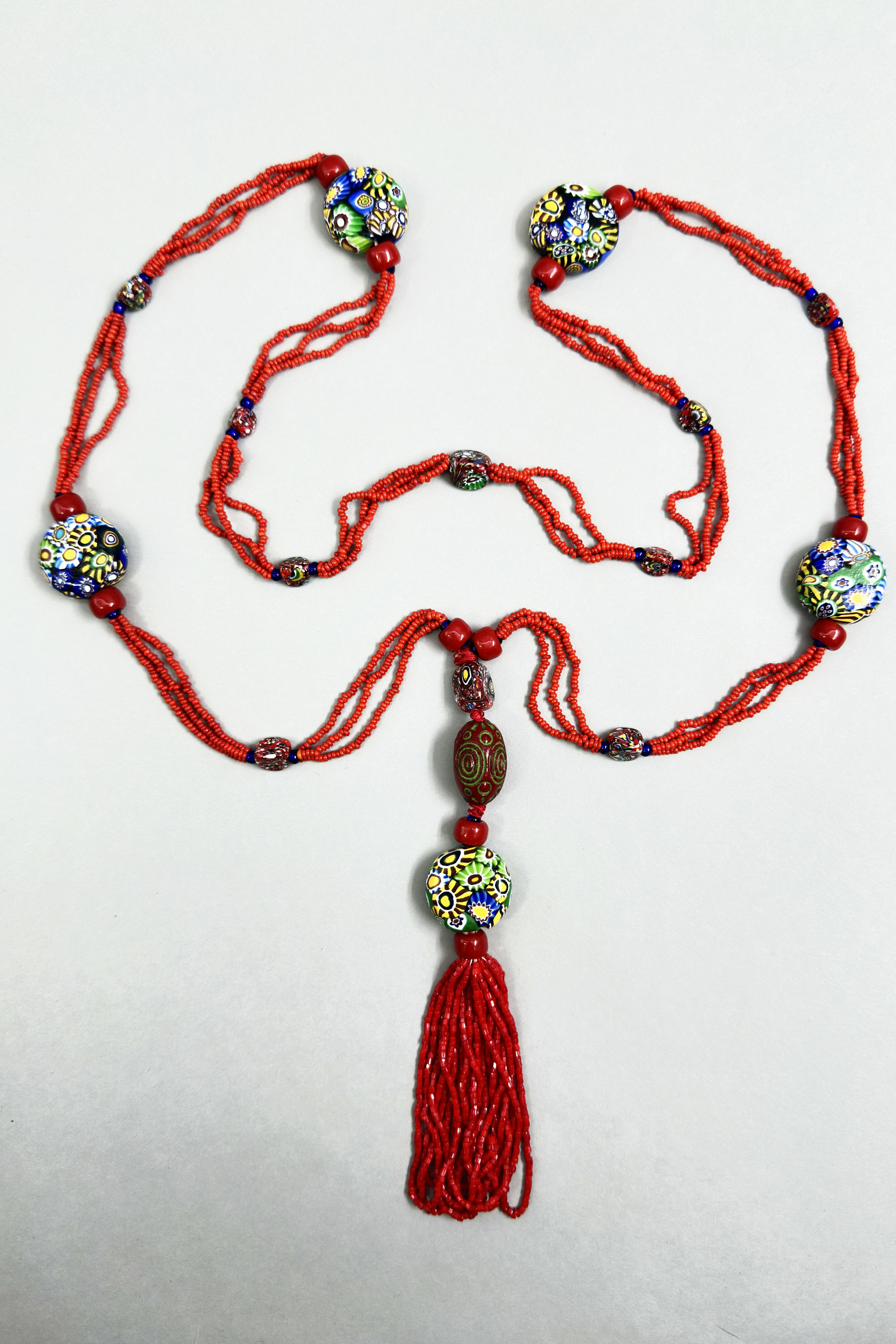
Mille fiore bead flapper necklace c1930
Price: £95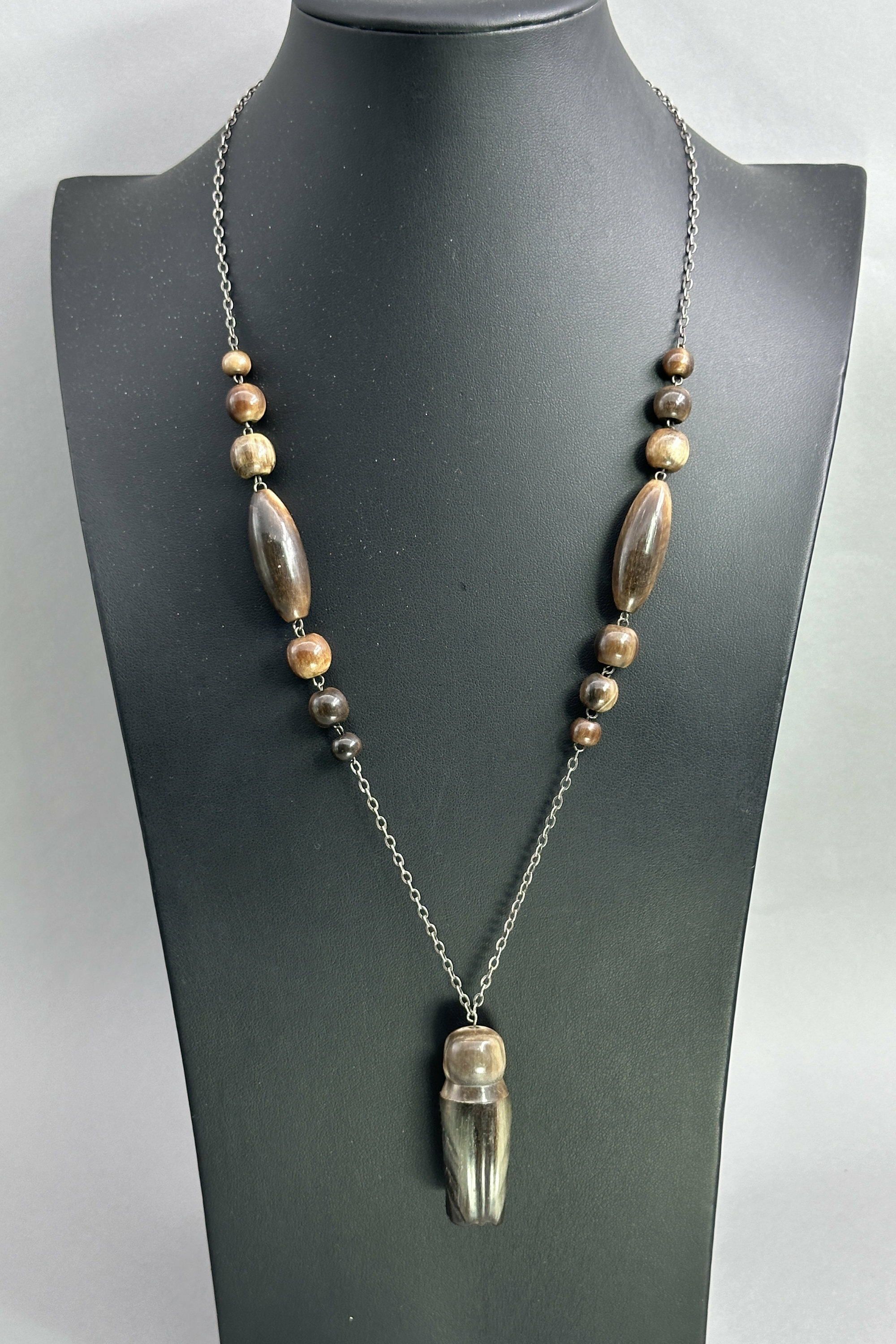
Art Deco Cicada Necklace, probably English 1930s
Price: £35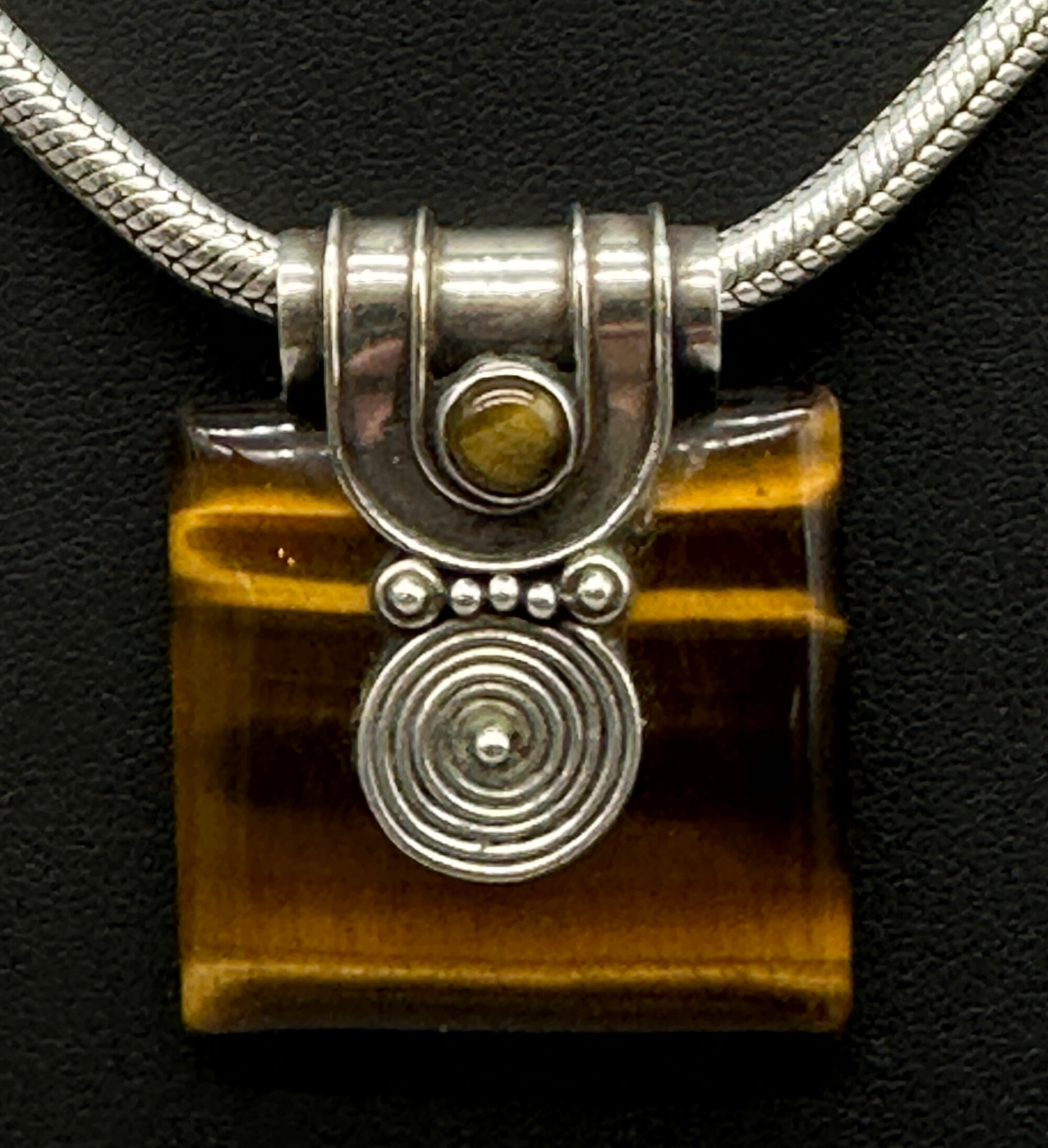
Balinese tiger's eye Necklace, C20th
Price: £55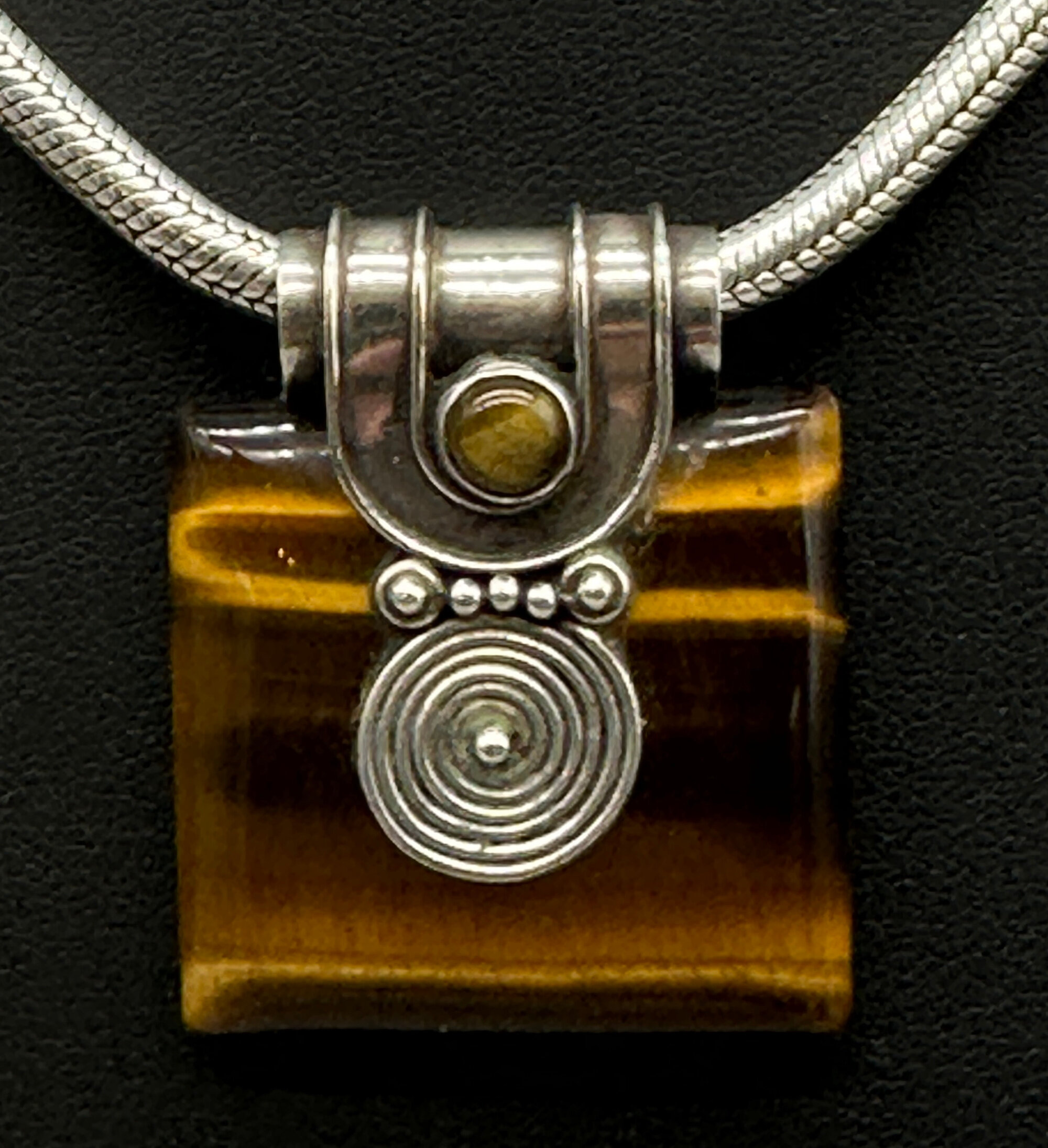
Balinese tiger's eye Necklace, C20th
Price: £55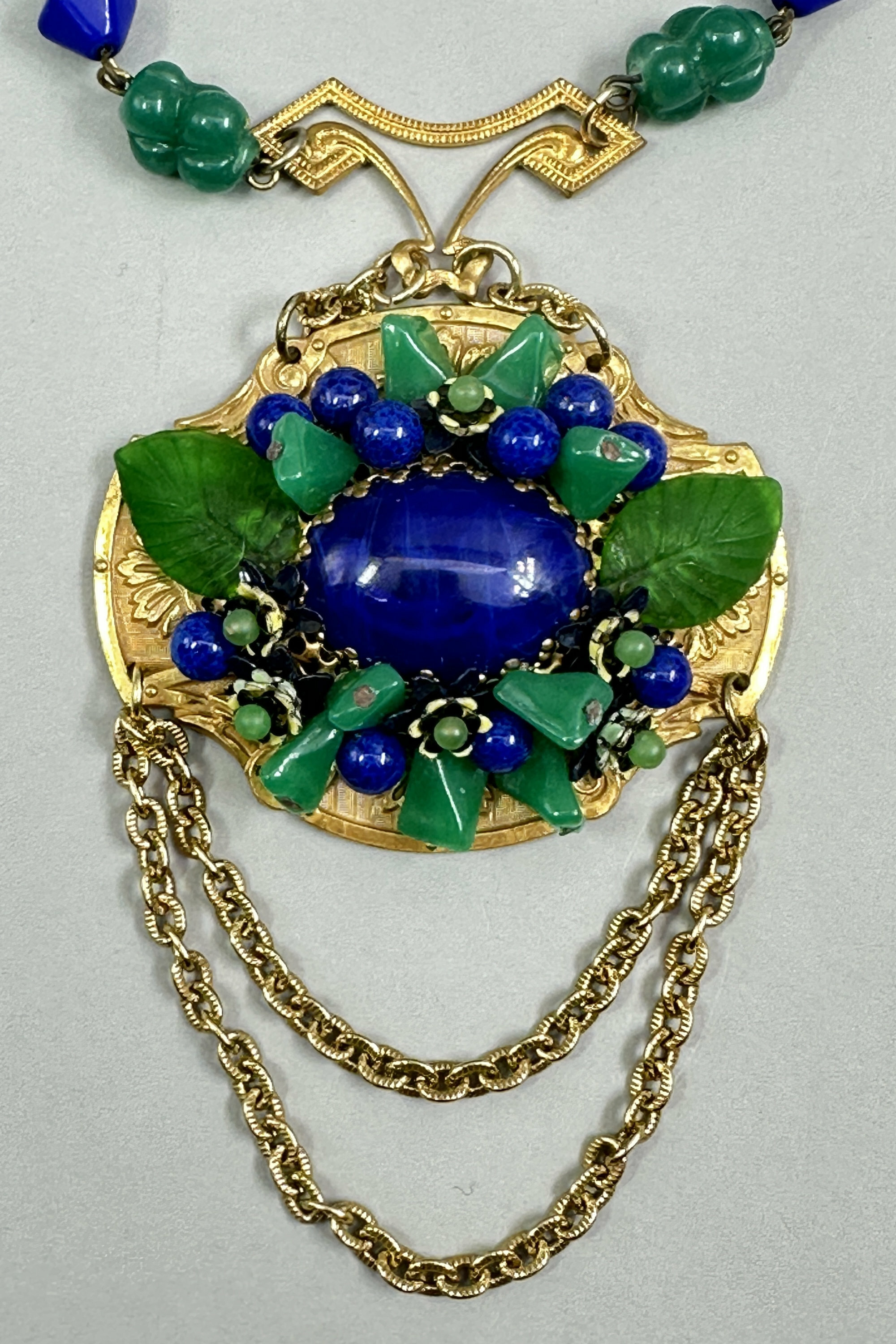
Regency style statement necklace c1950
Price: £125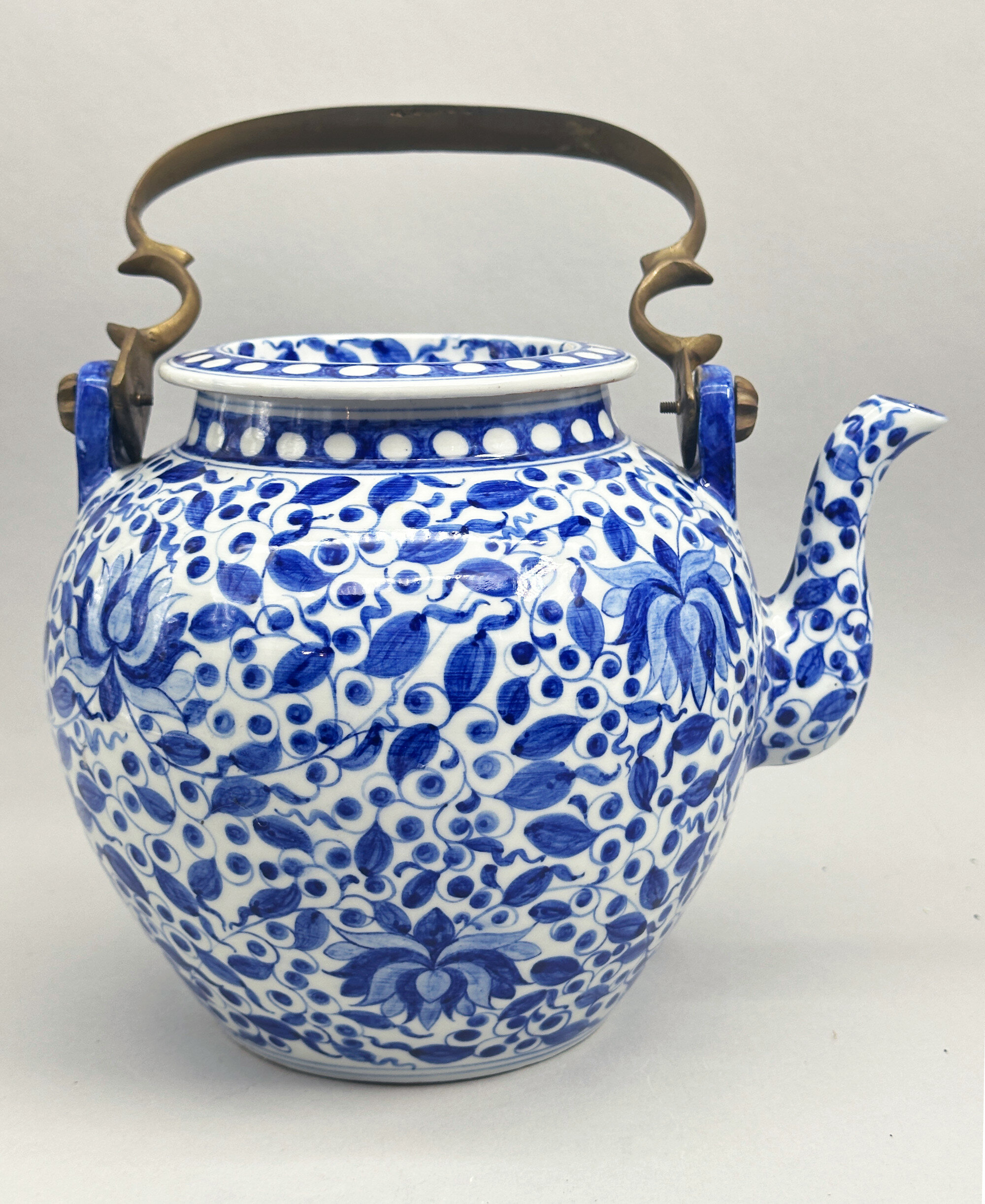
Exceptionally large Chinese Blue and White Teapot with metal handle, C19th
Price: £350The form here, without a ceramic handle but with an attached carrying handle, suggests a travelling teapot, a well known variation of the teapot type produced in China but rarely found on such an epic scale. Presumably this piece was intended for use at a rather large gathering or banquet so that a multitude of guests could be served at once! The paste of the footrim, style of decoration and clearly visible hand thrown potting rings (see images 8 and 9) all point to late nineteenth century work which is confirmed by the minute vertical lines seen on the exterior which are often found on blue and white pieces from that period. It is sometimes suggested that these brass handles, for similar examples can be found, were made in Thailand but there is little evidence for this. However, a local audience rather than an international one seems more than likely since there would have been little call for such a serving item in Western homes.

Chinese Bone Netsuke carving of a man holding a musical instrument, early C20th
Price: £25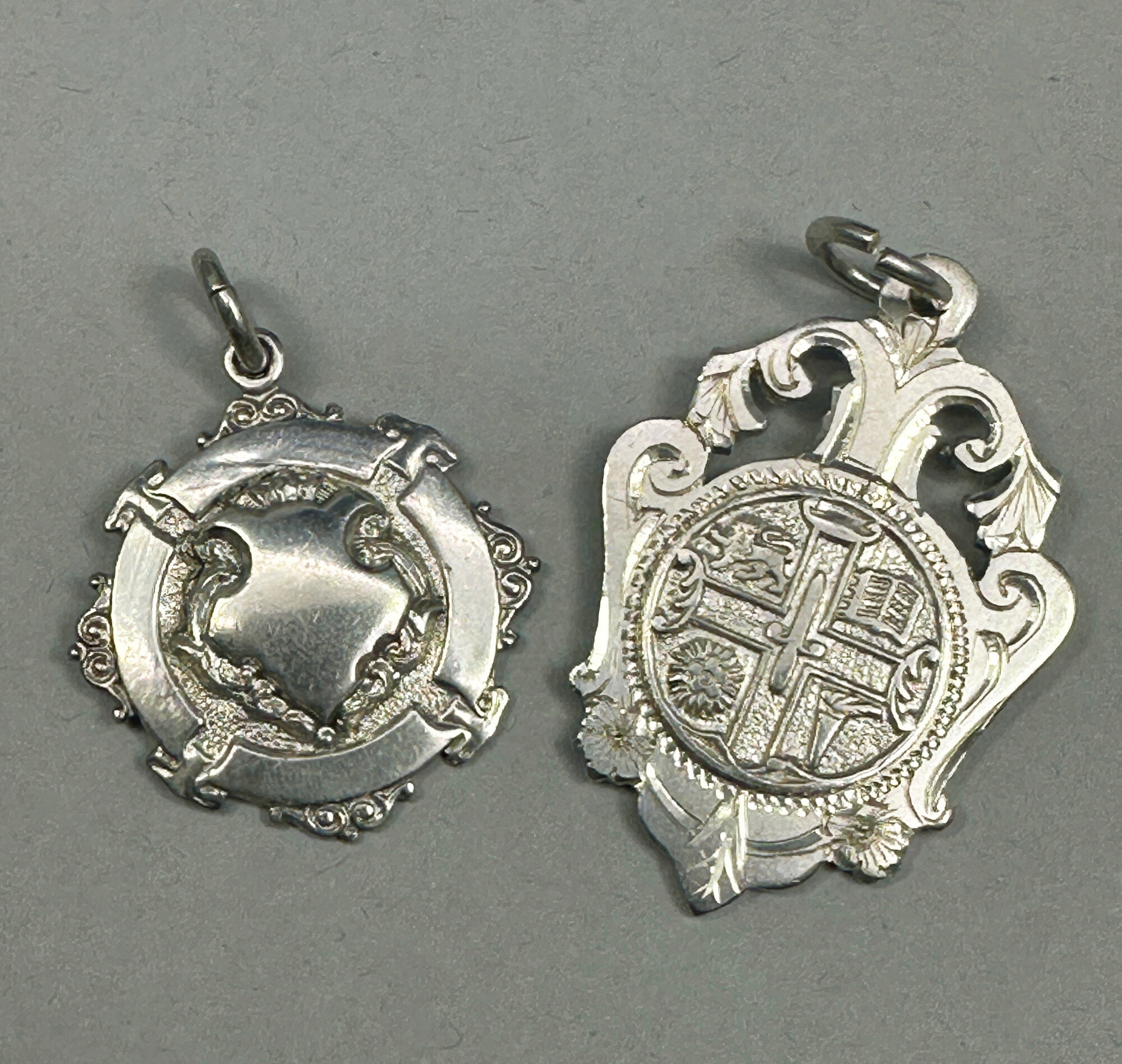
Two watch fobs 1912 and 1923
Price: £35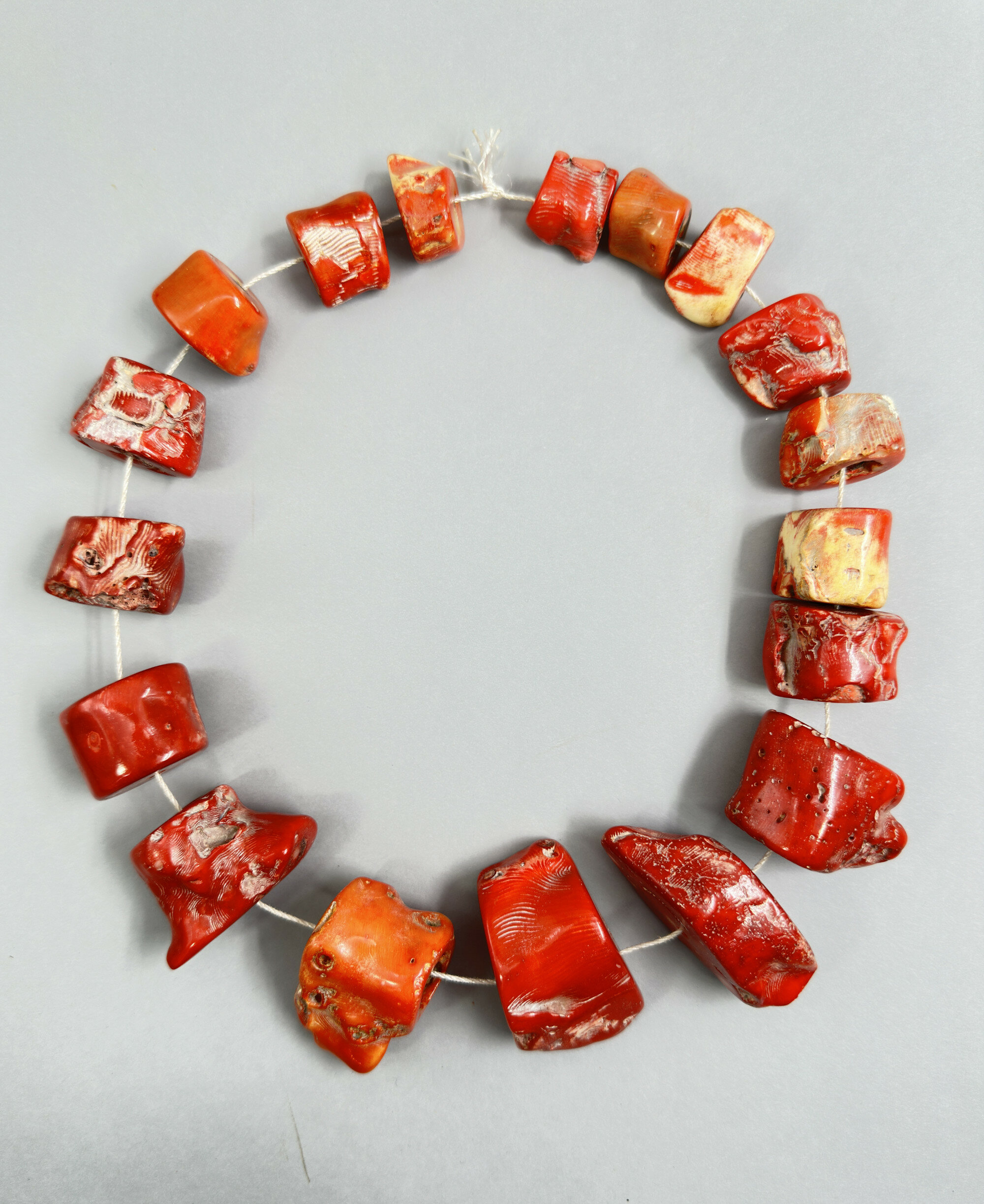
Massive natural coral beads
Price: £175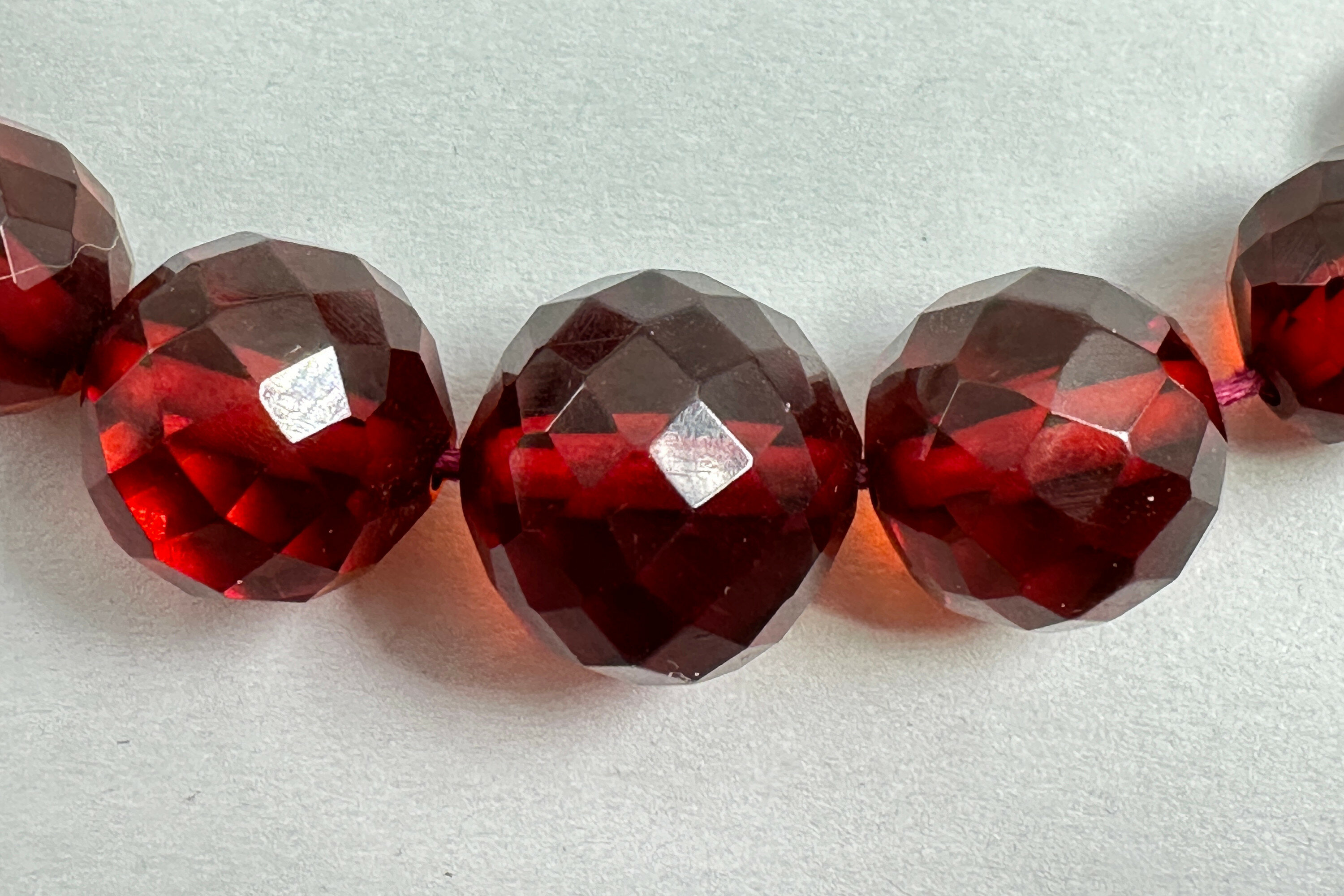
Victorian facetted cherry amber beads with intergrated clasp c1900
Price: £150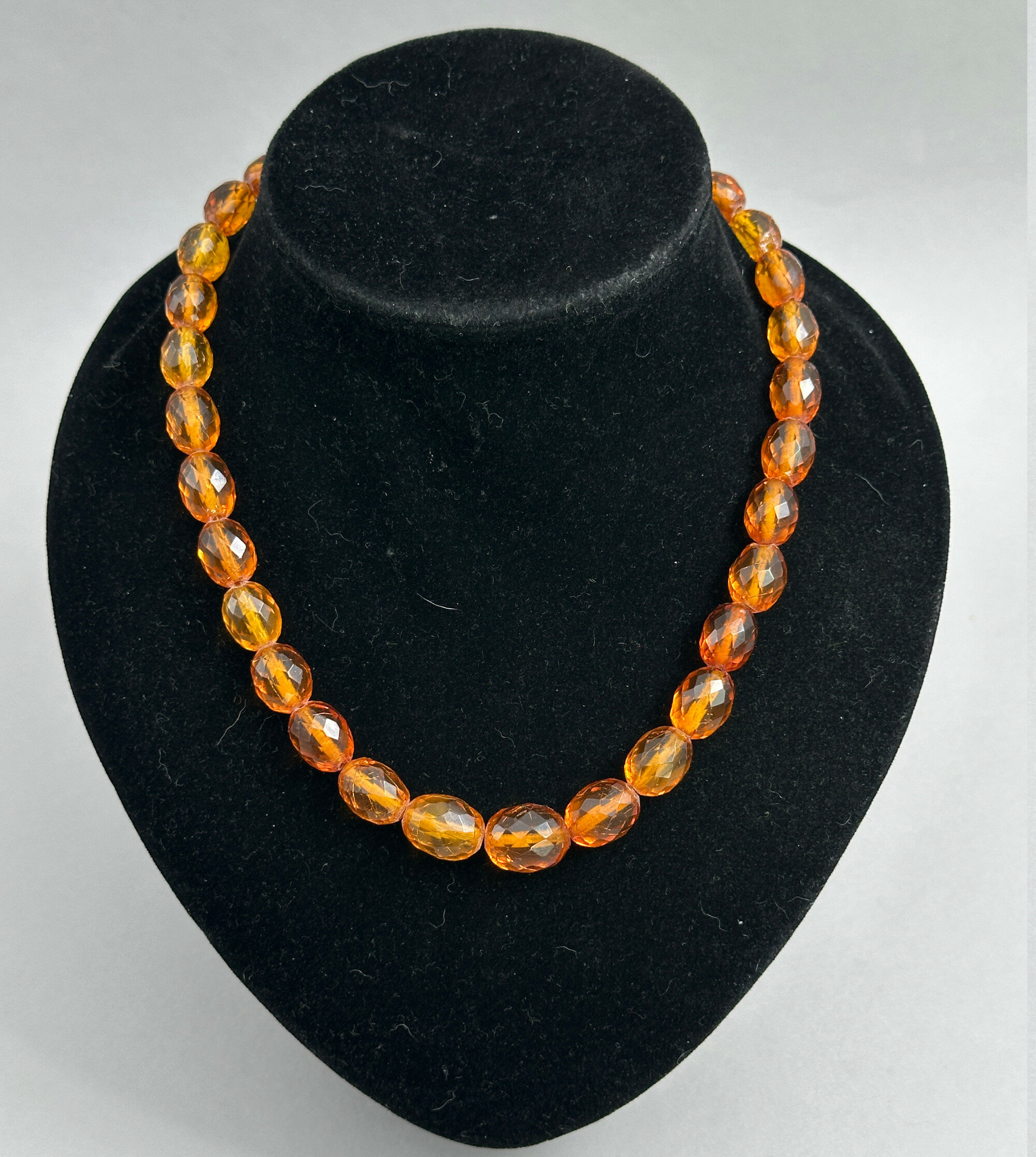
Victorian facetted amber bead necklace c1900
Price: £125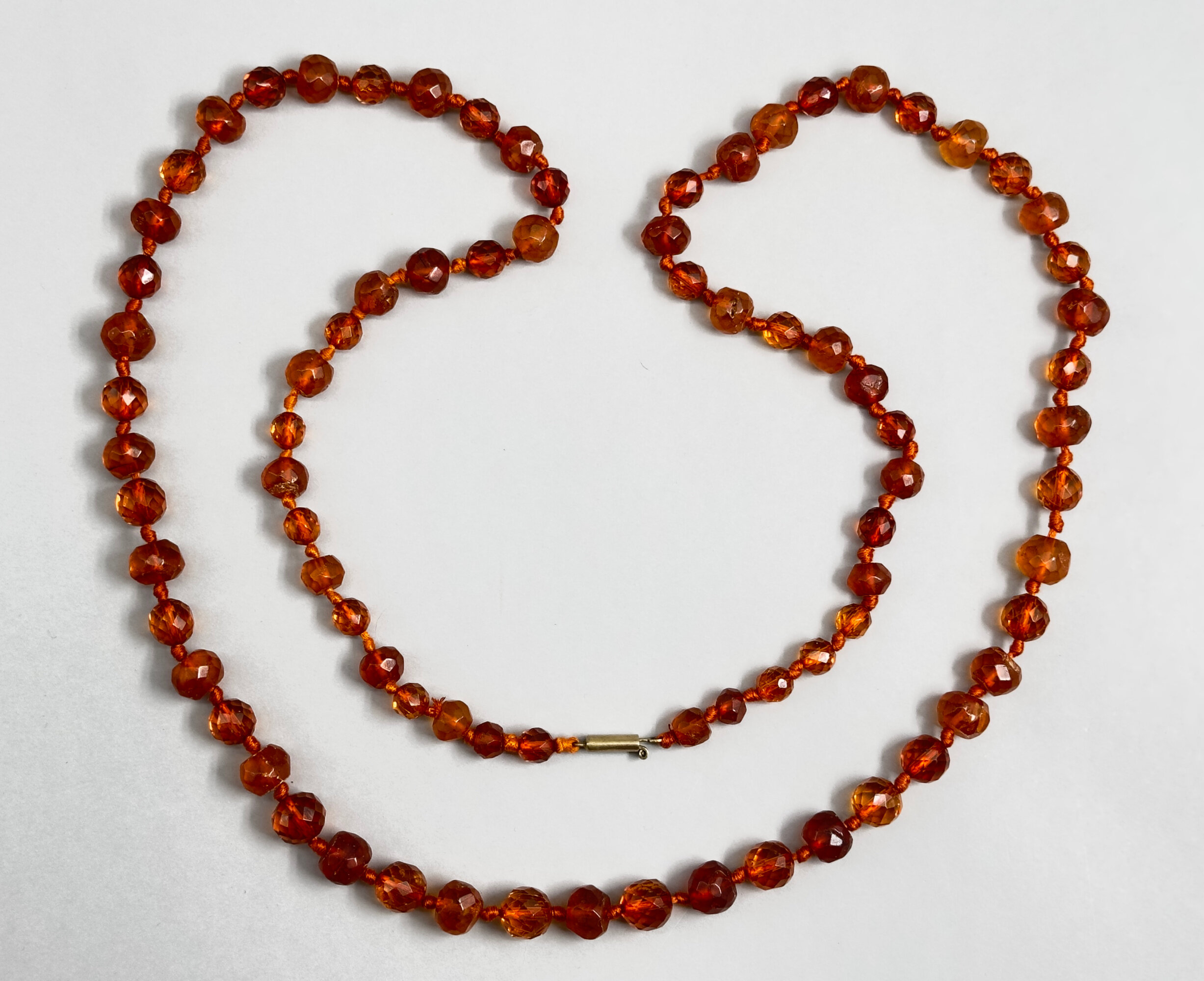
Outstanding opera length Victorian amber beads c1900
Price: £175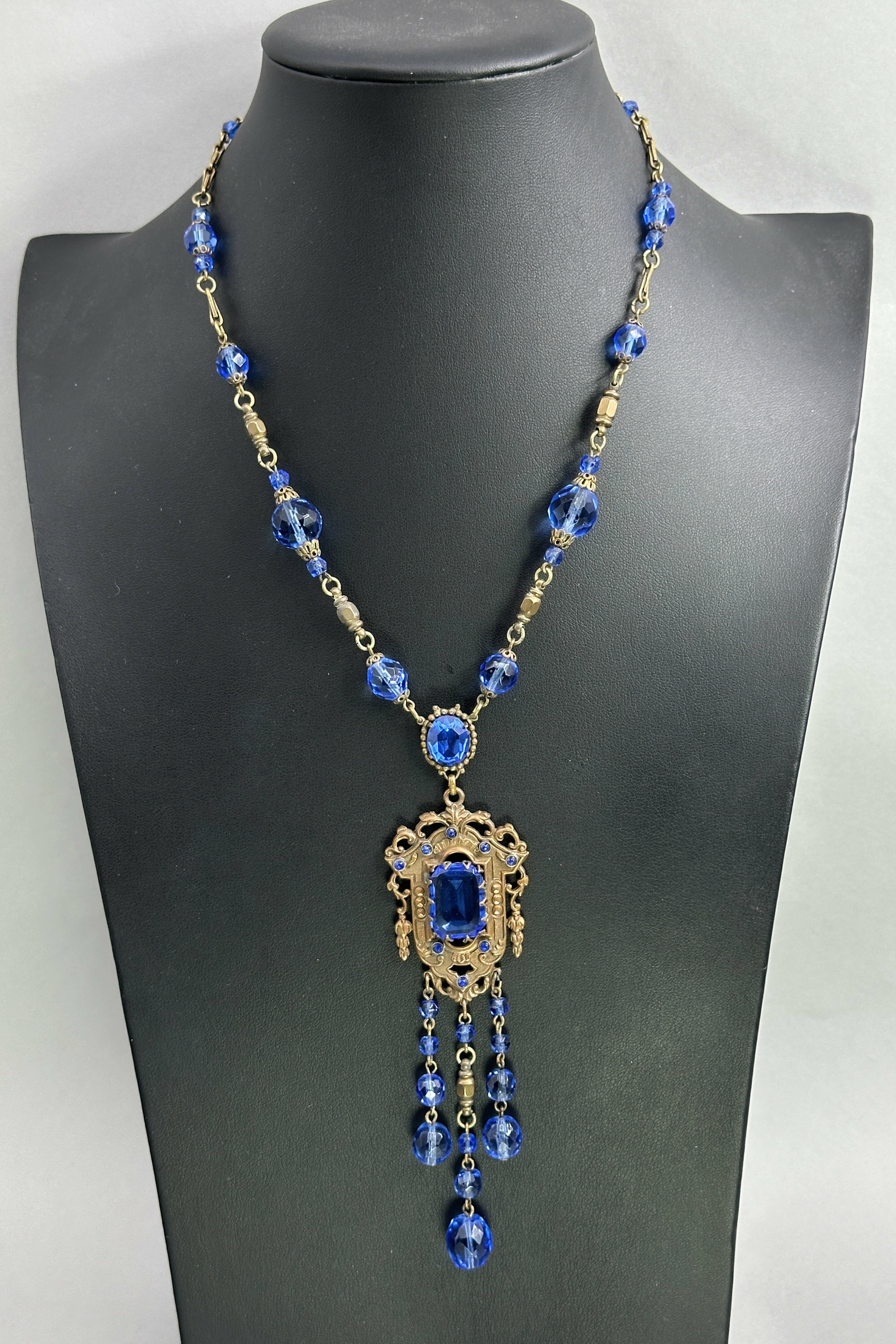
Edwardian Transitional necklace c1920
Price: £75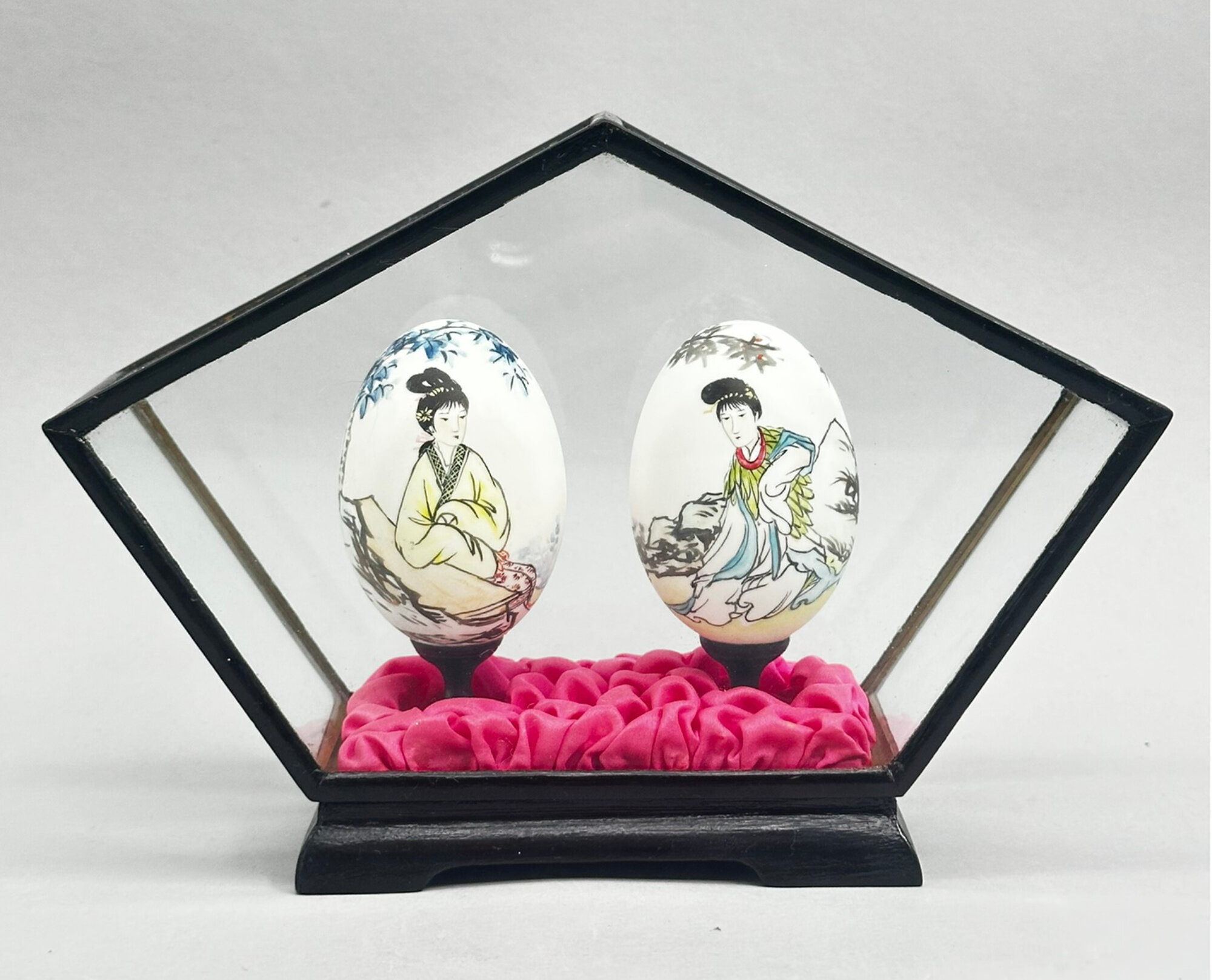
Pair of Chinese Hand Painted Eggs in Case, 1970s
Price: £25
Chinese Framed Ceramic Plaque depicting Peony, C20th
Price: £150
Round pendant set with turquoise, Mexico, c1970, the chain later.
Price: £65
Long strand of Chinese cloisonne beads c1950
Price: £60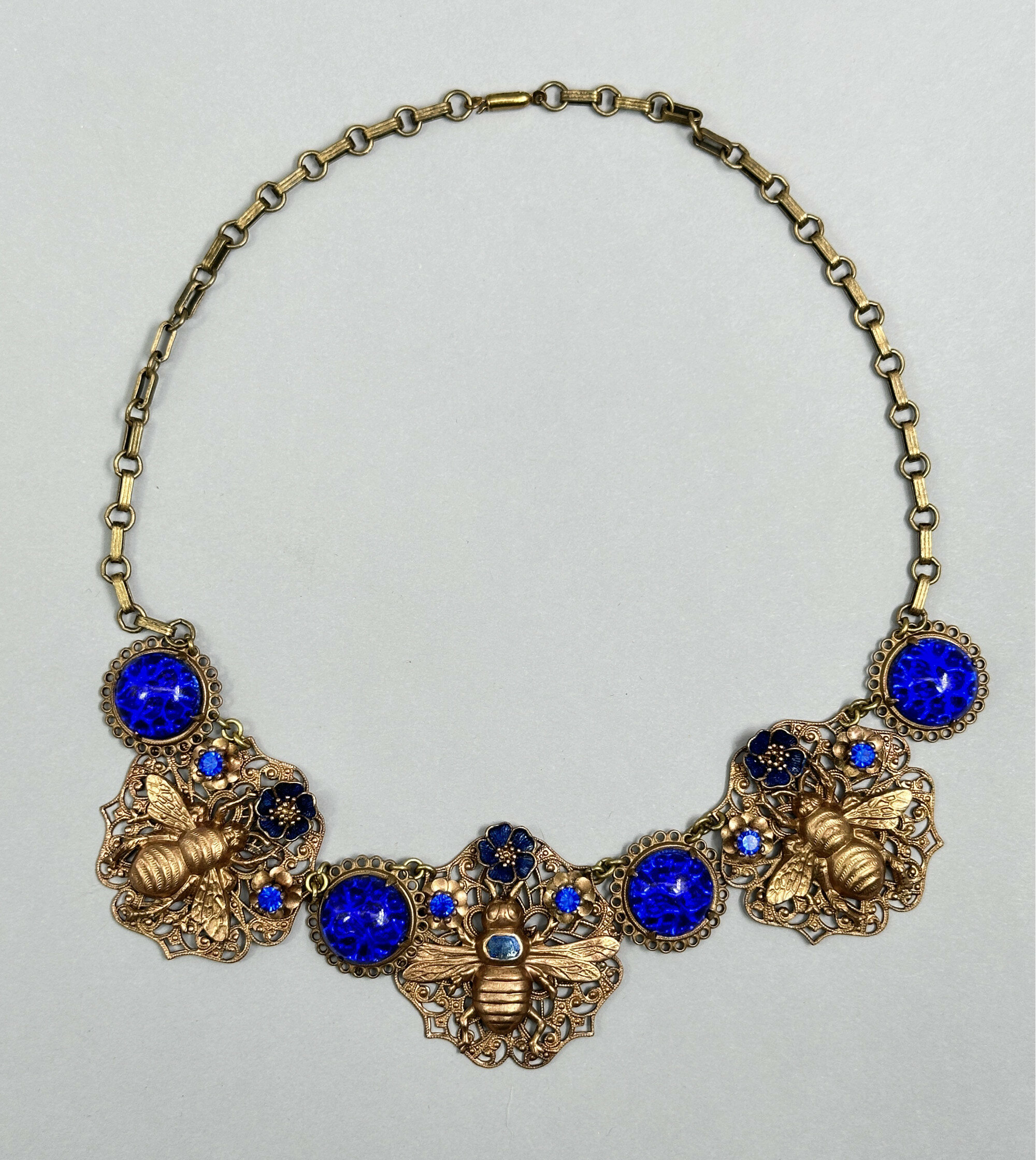
Art Deco bee motif necklace 1930s
Price: £125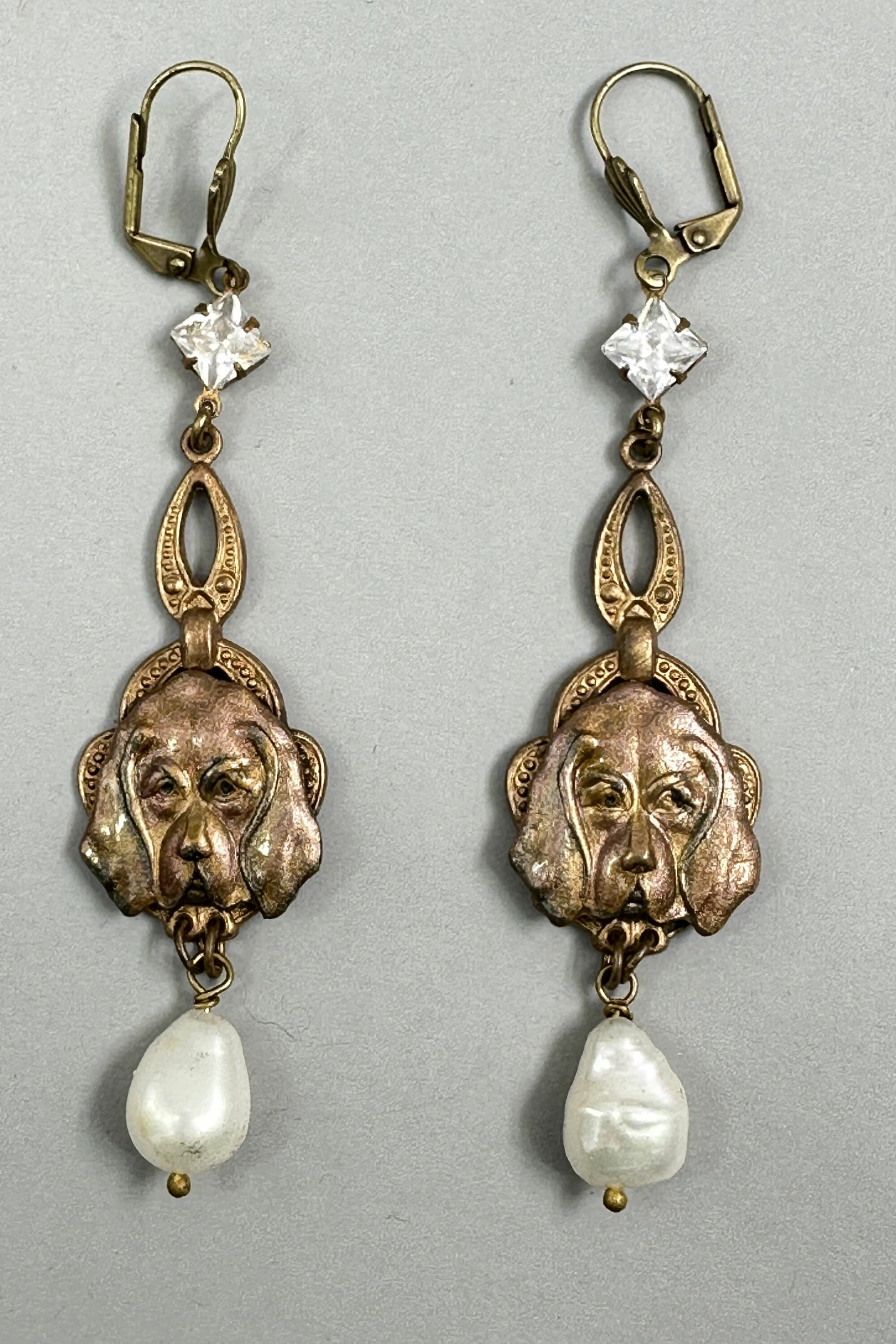
Charming Dog motif Earrings c1930
Price: £25
Art Deco French jet and pearl necklace c1940
Price: £40
Art deco style necklace with large blue stone c1970
Price: £50